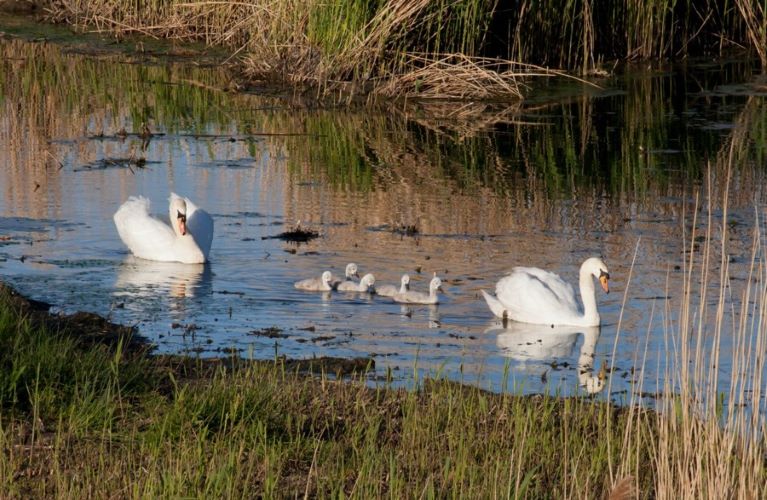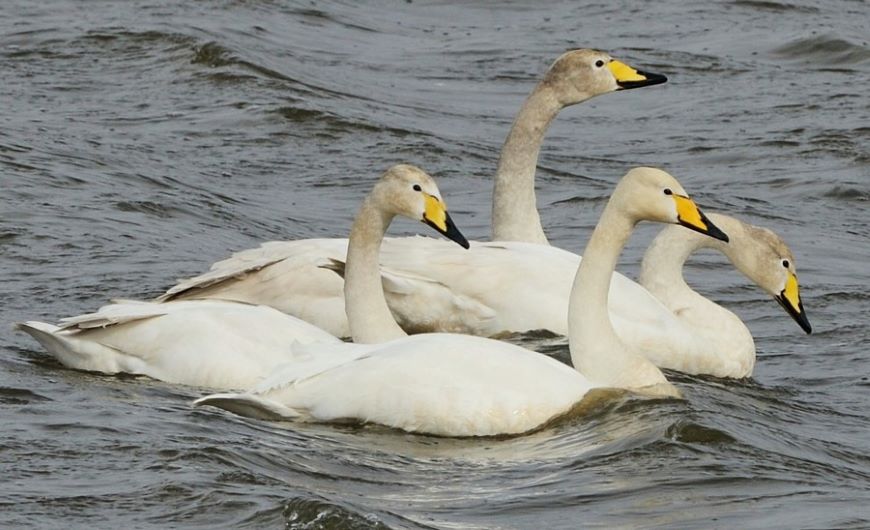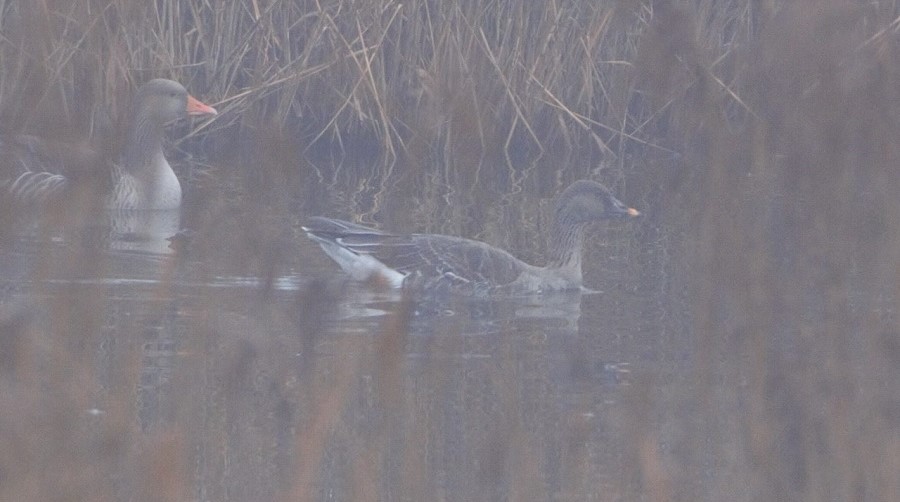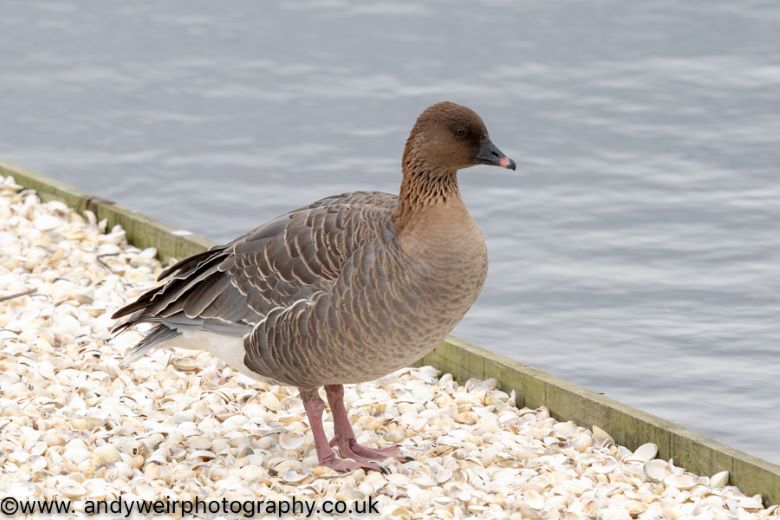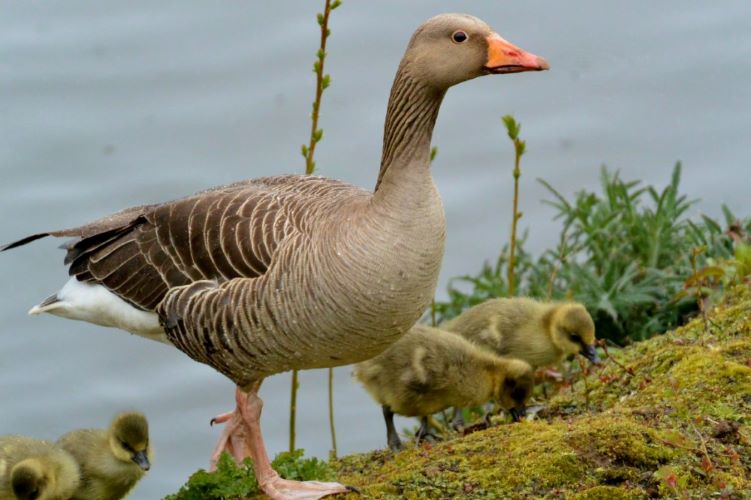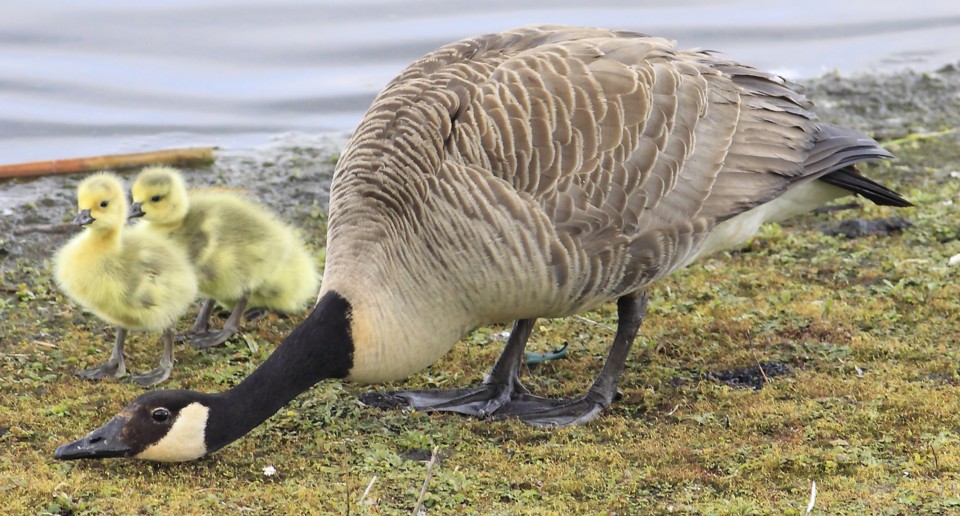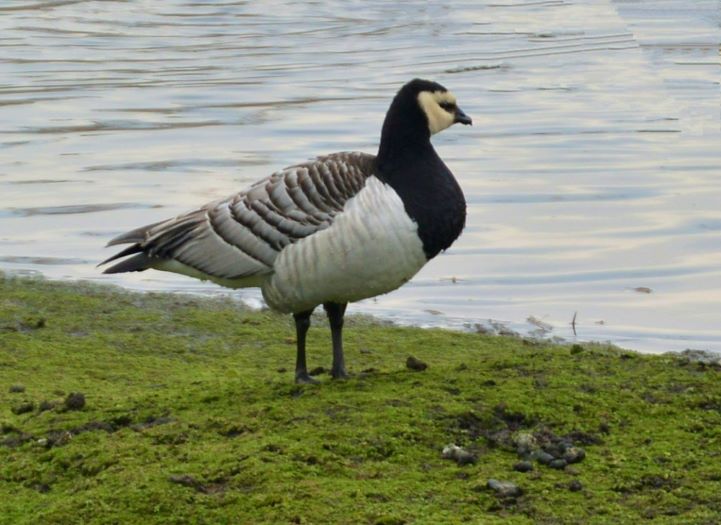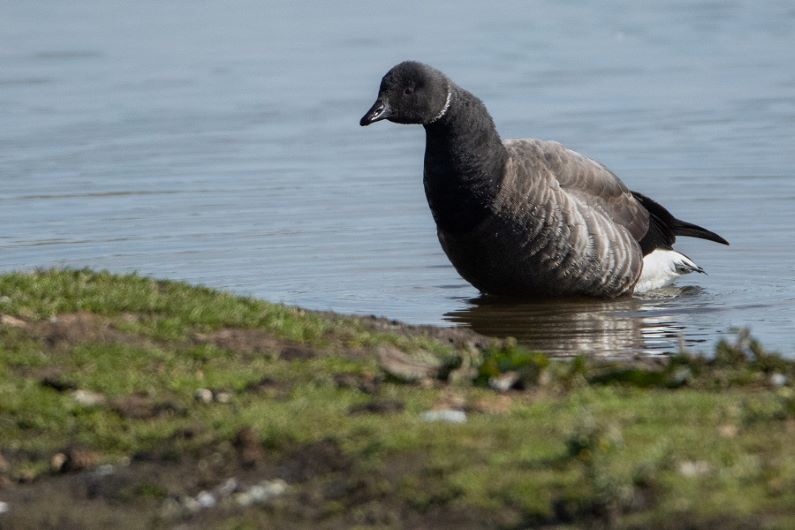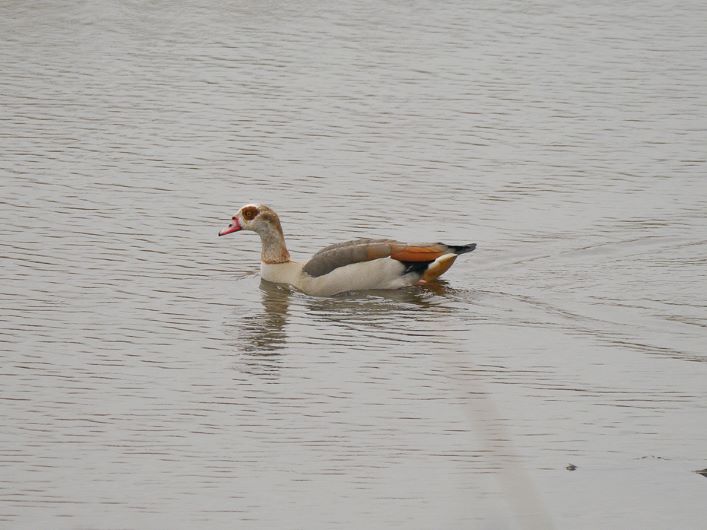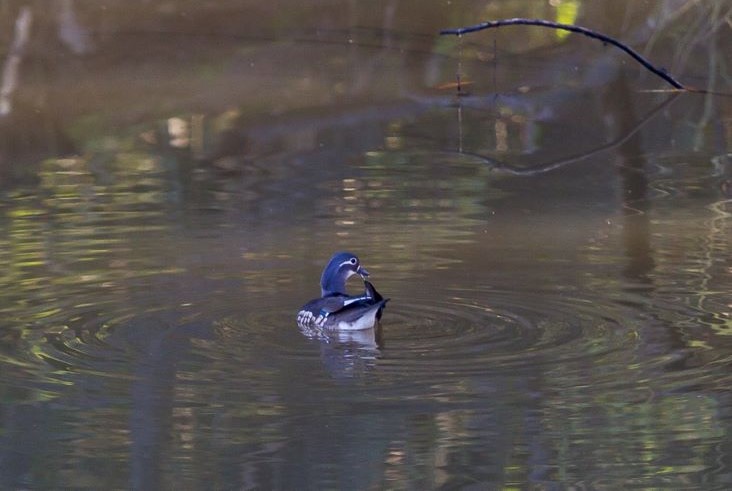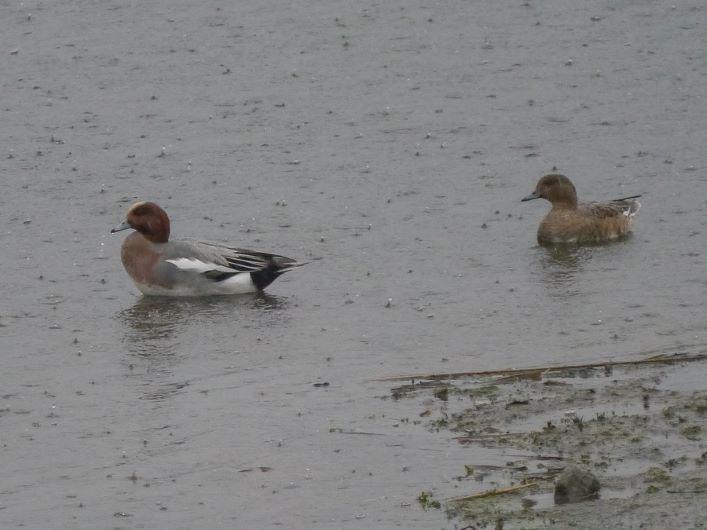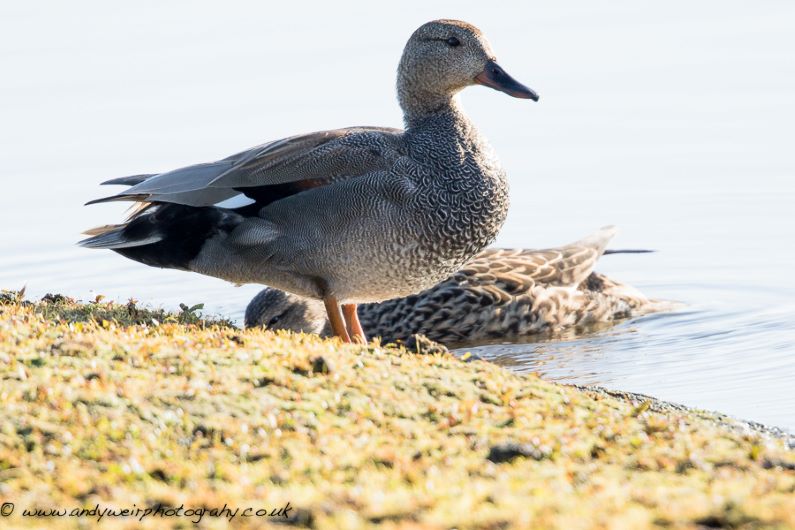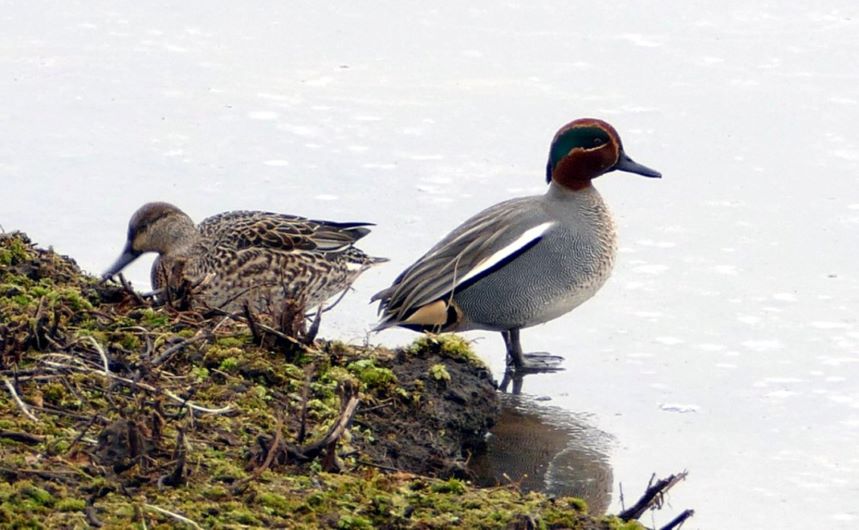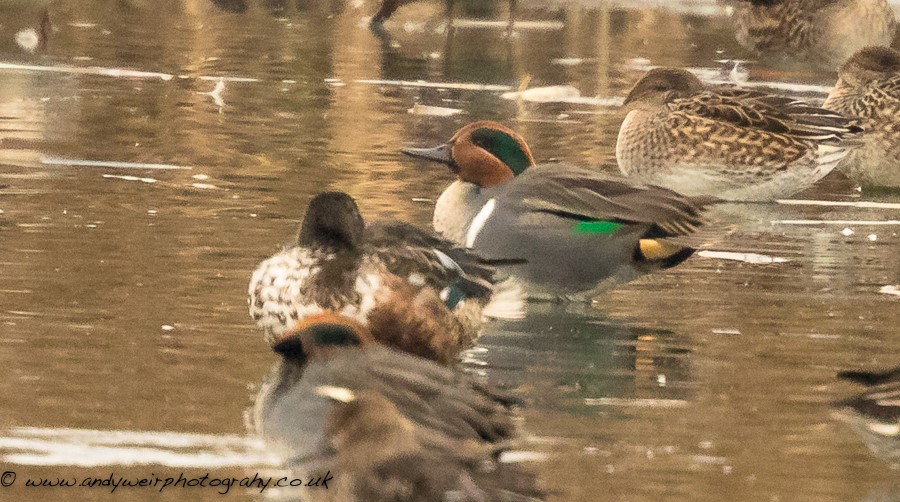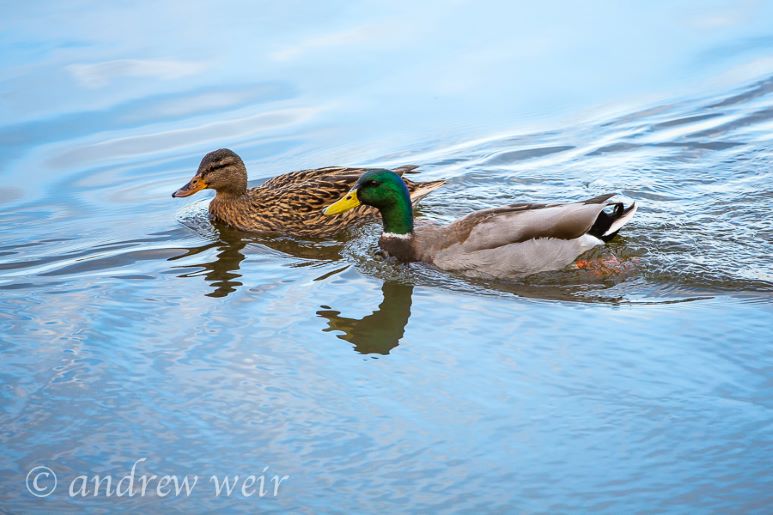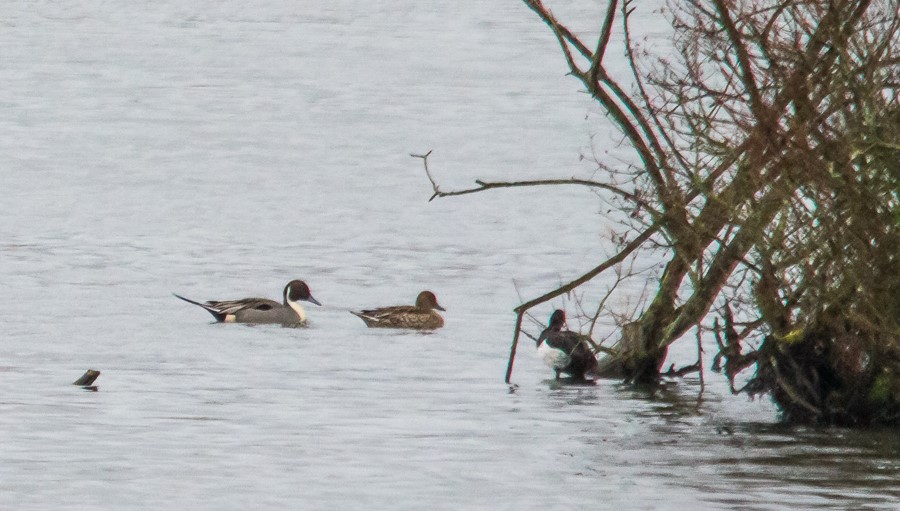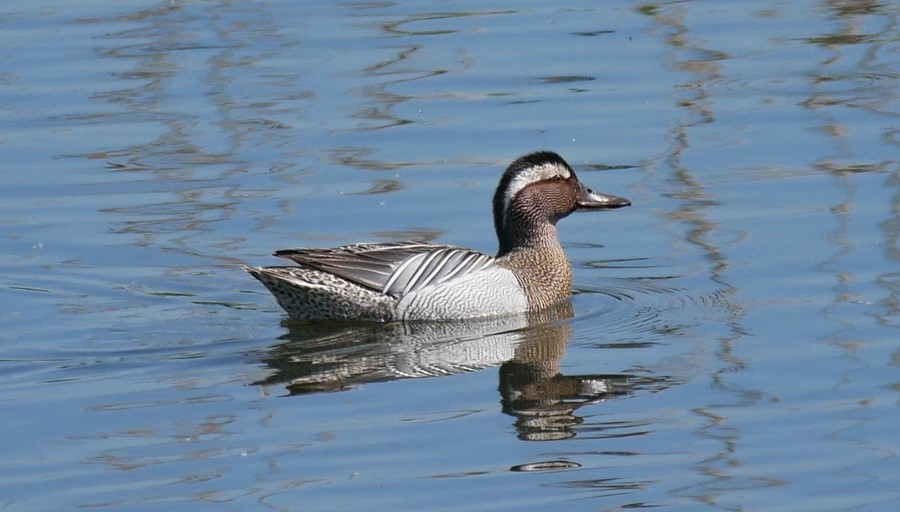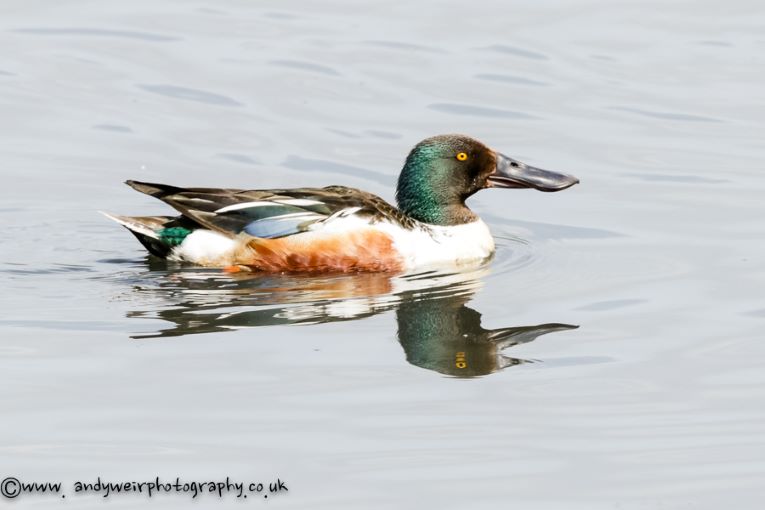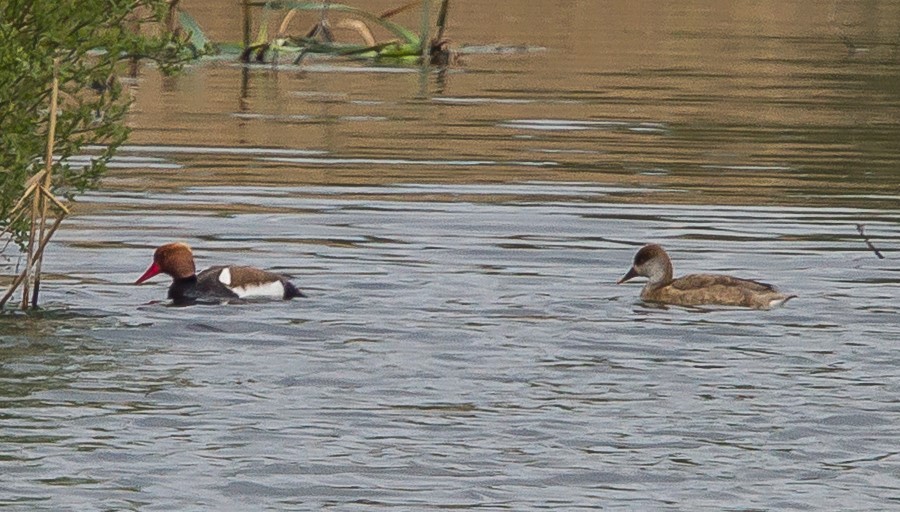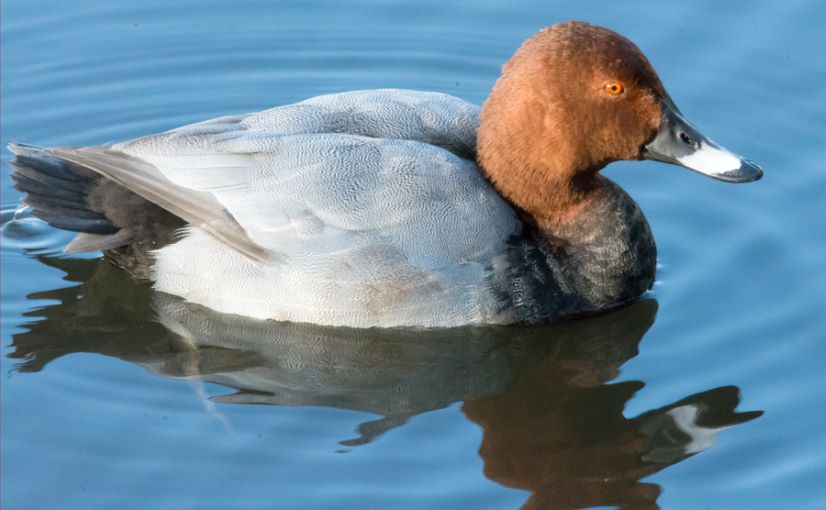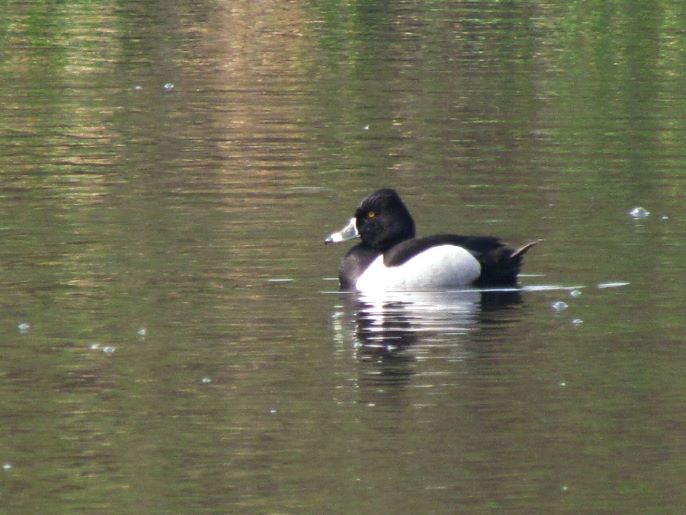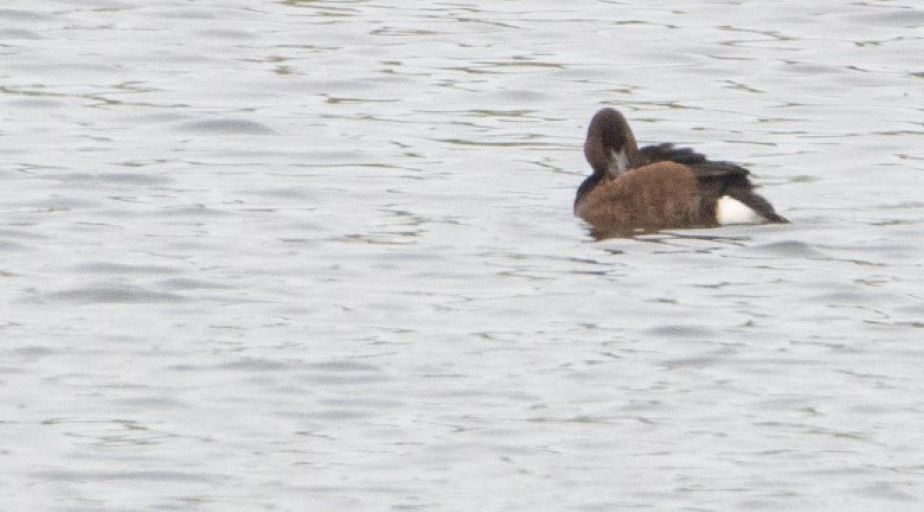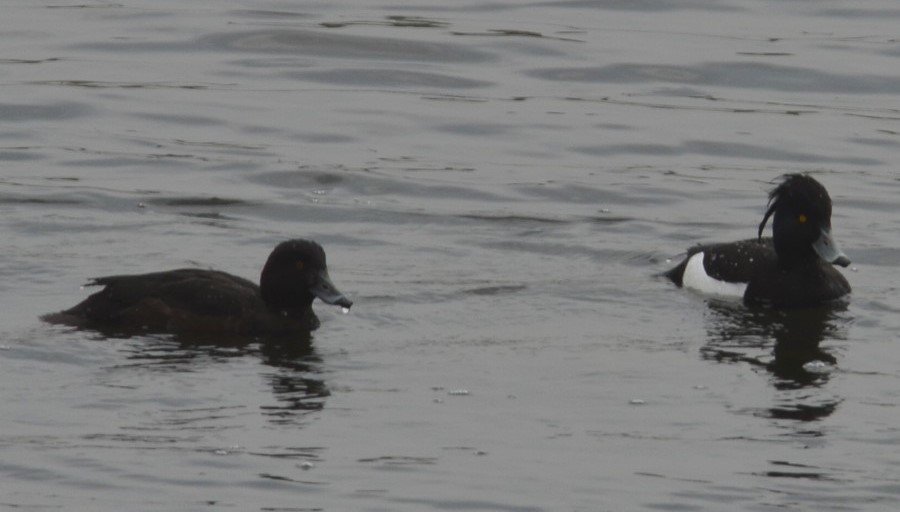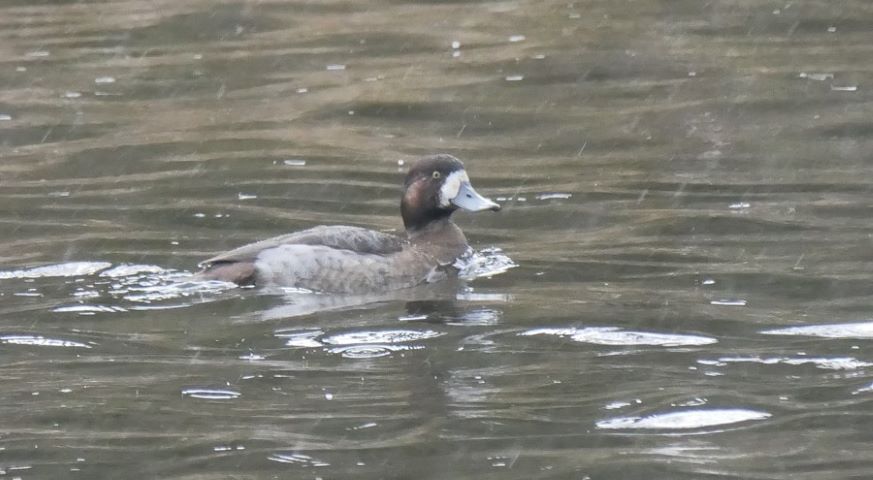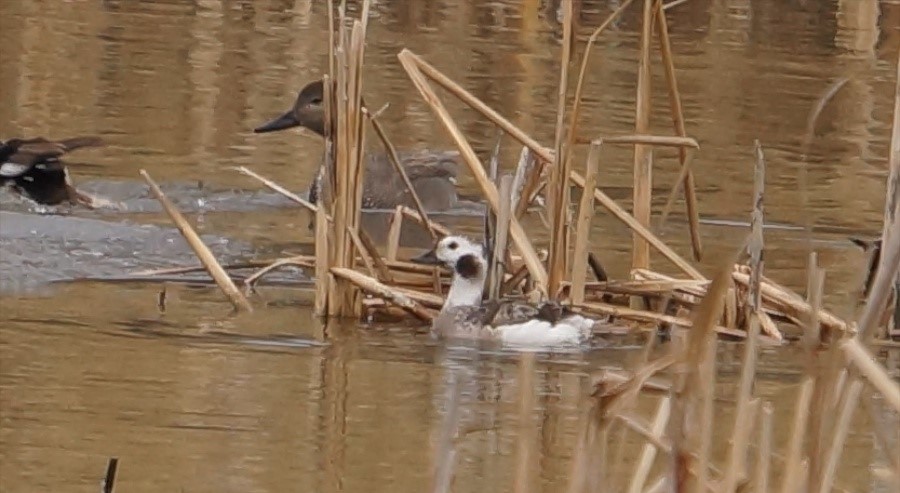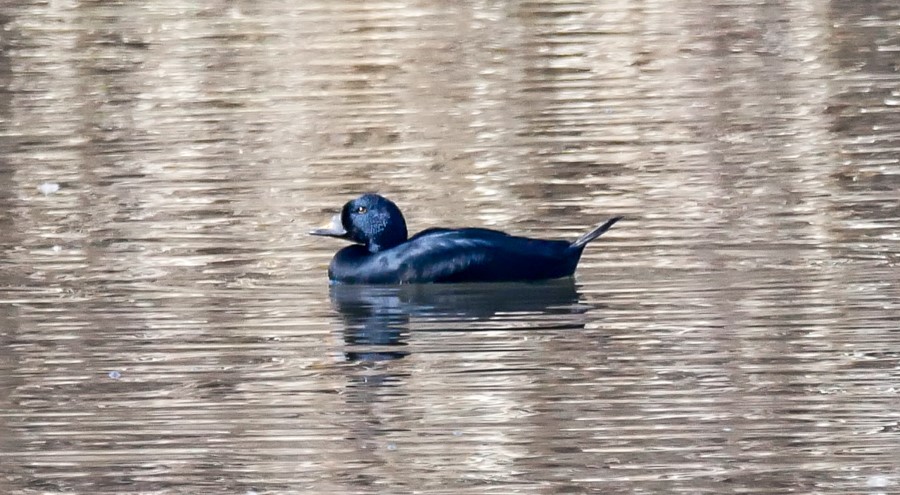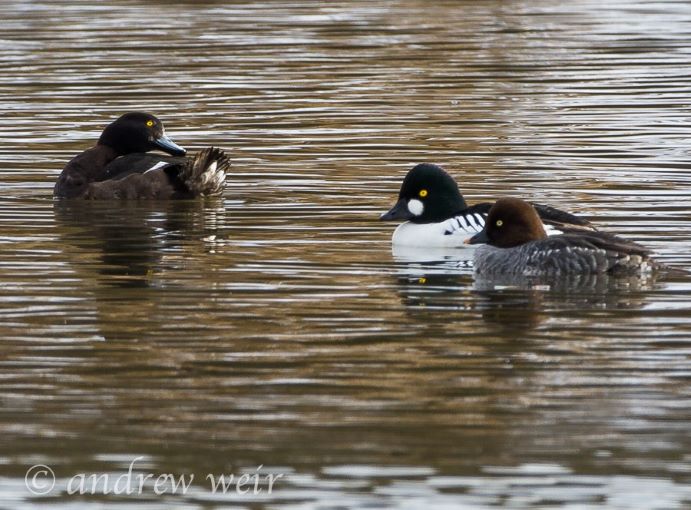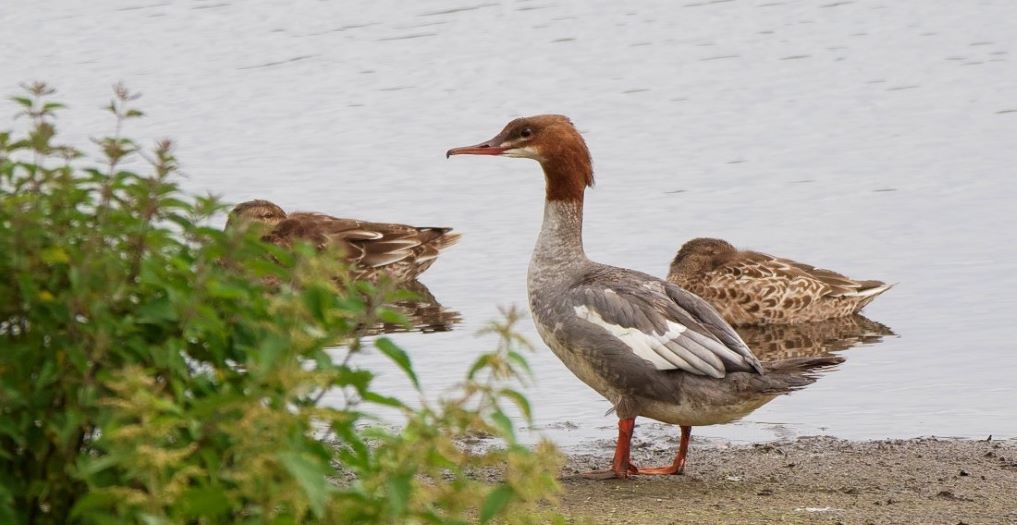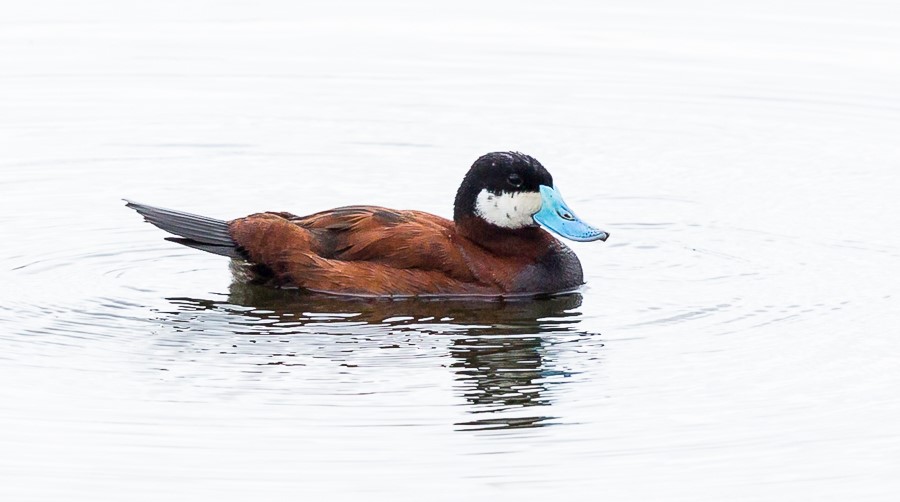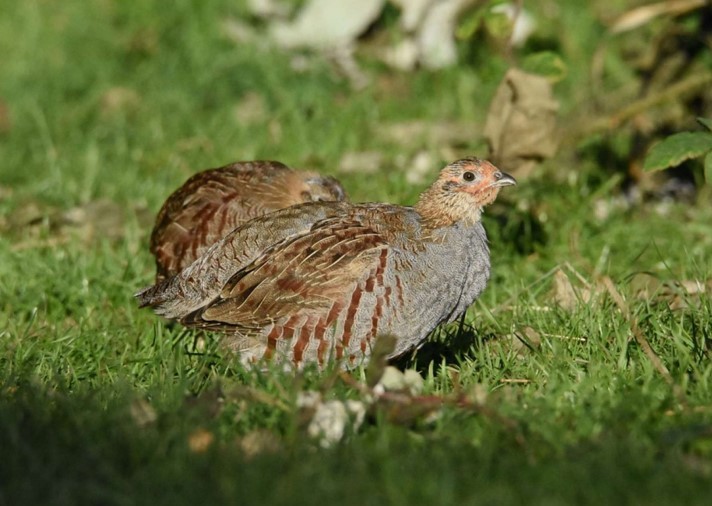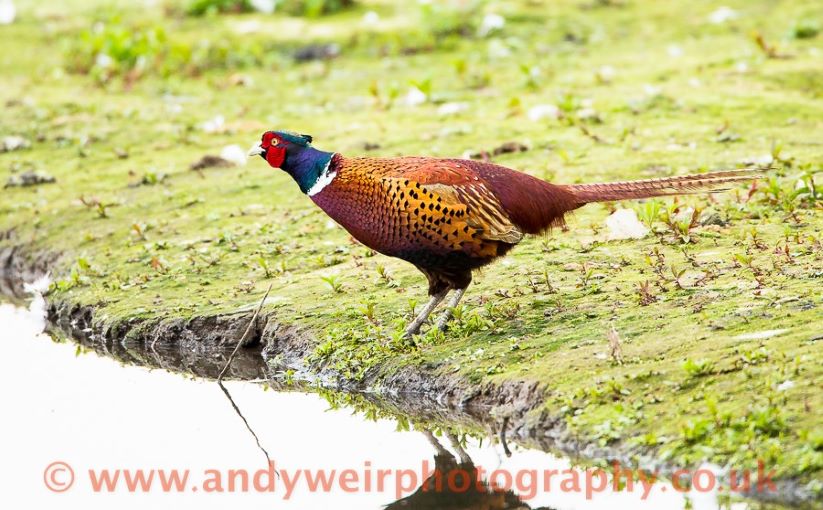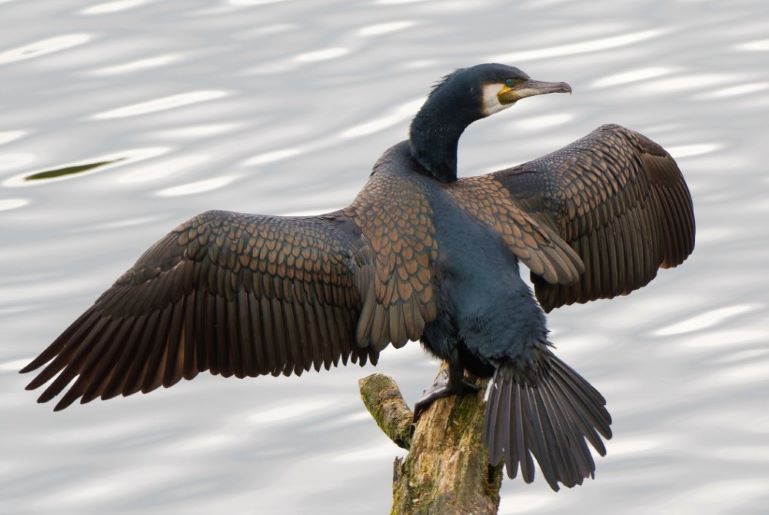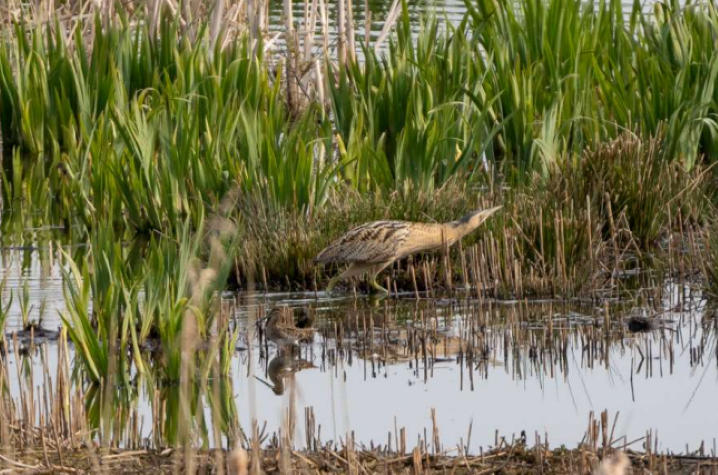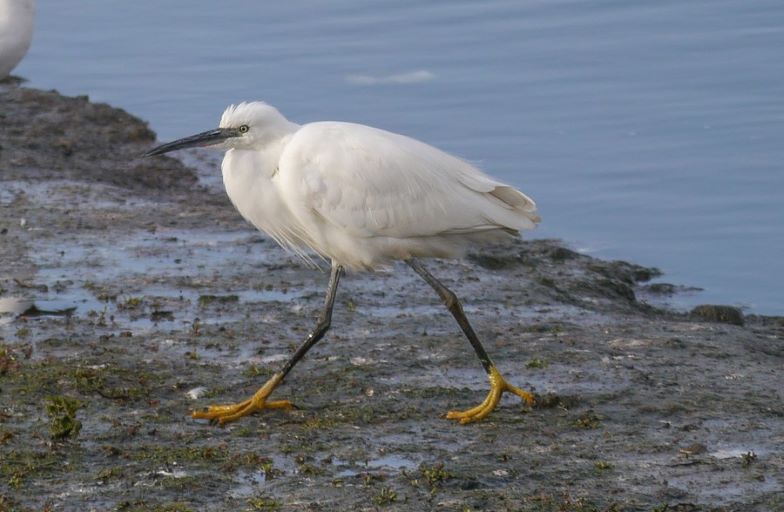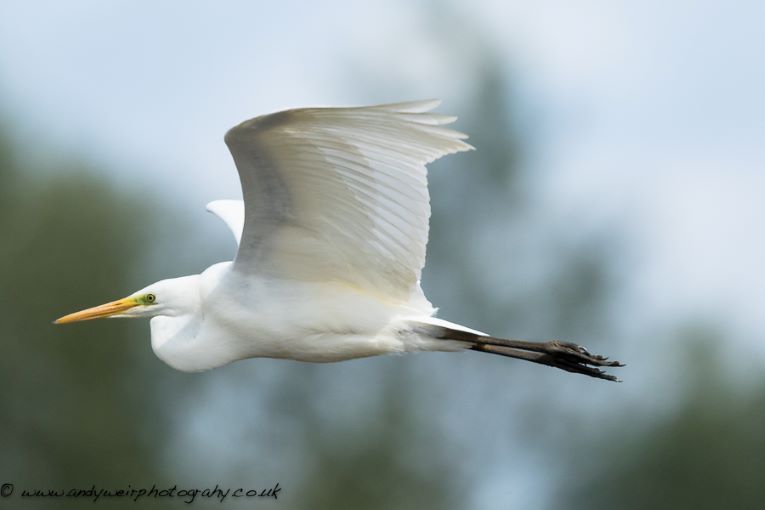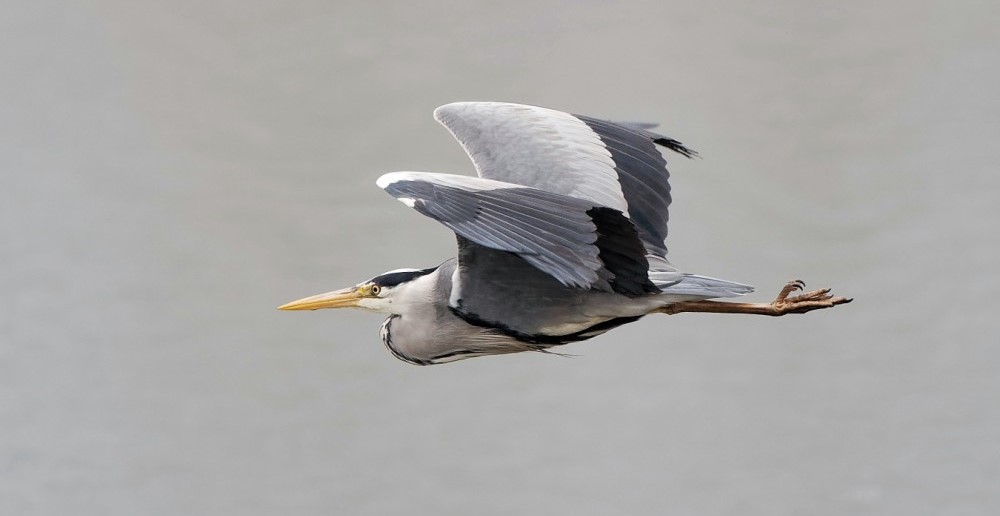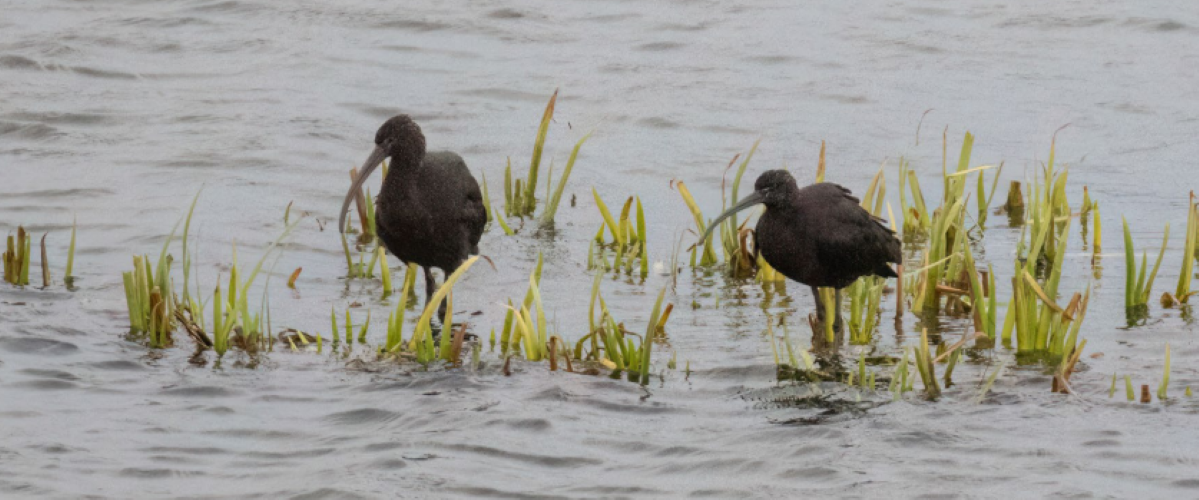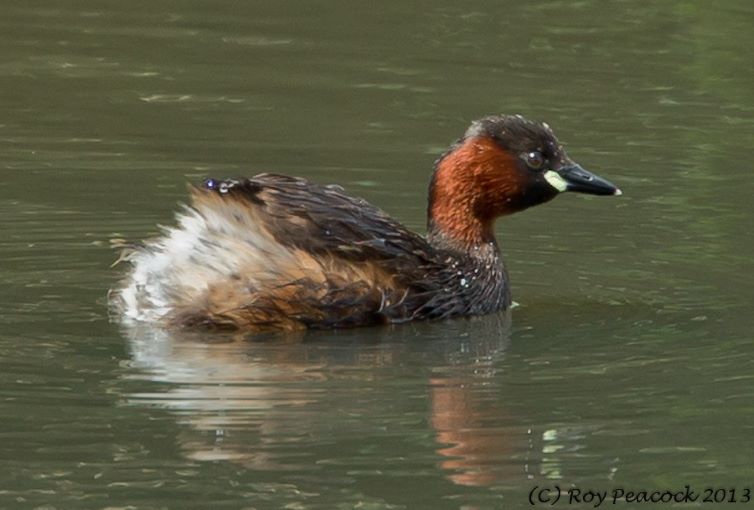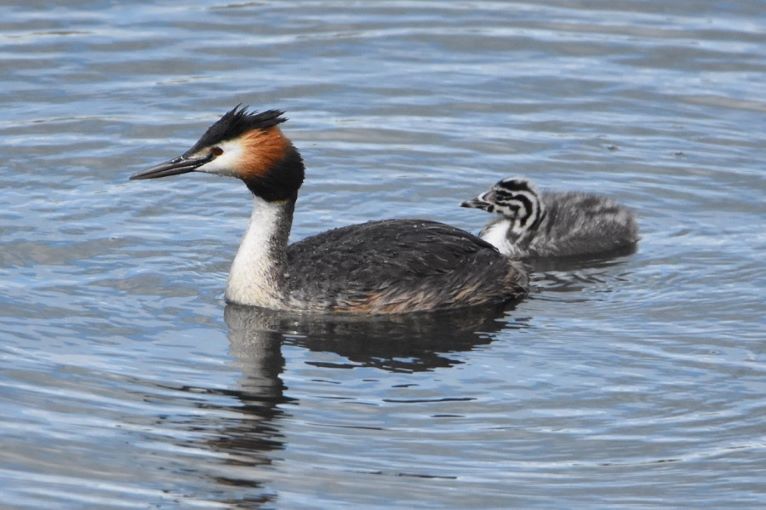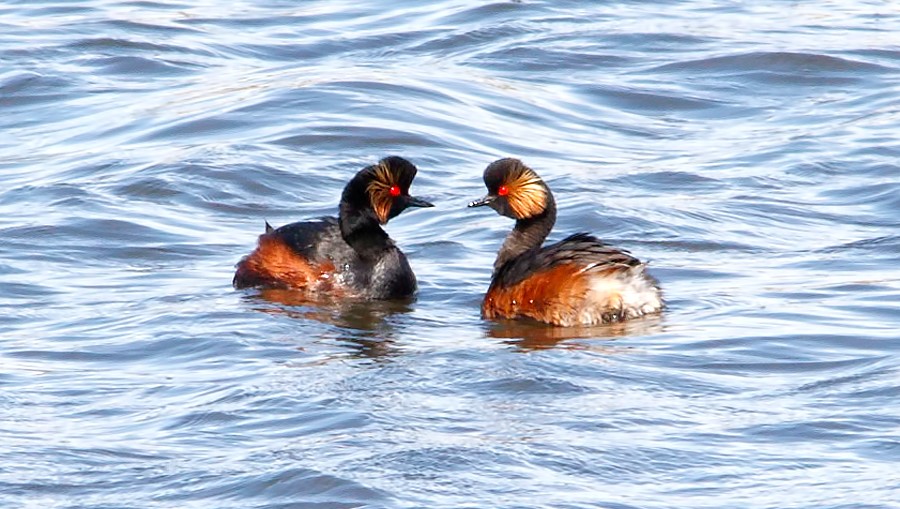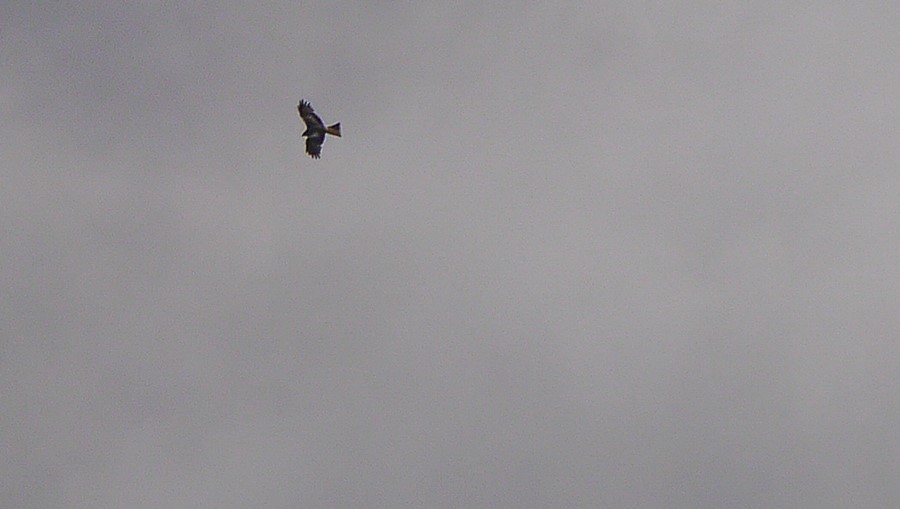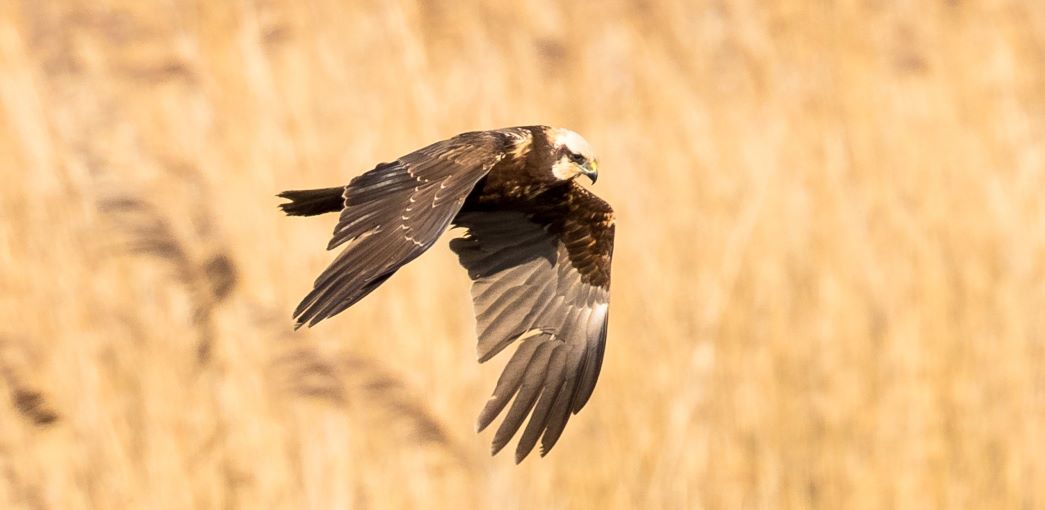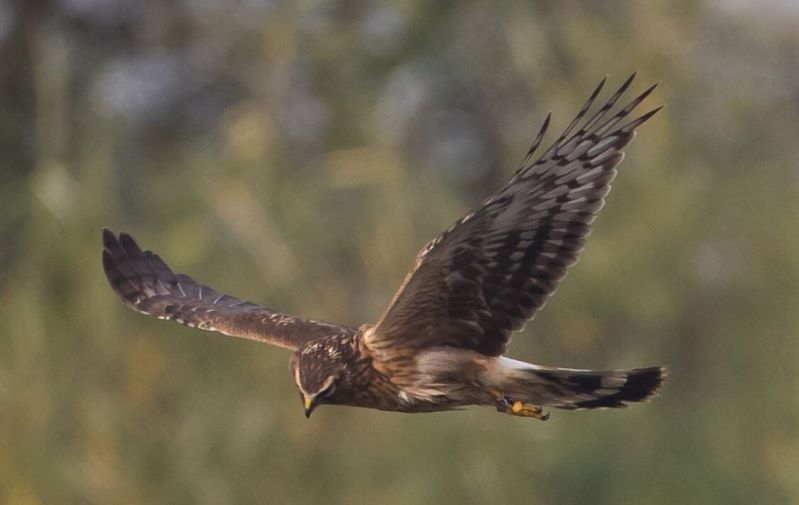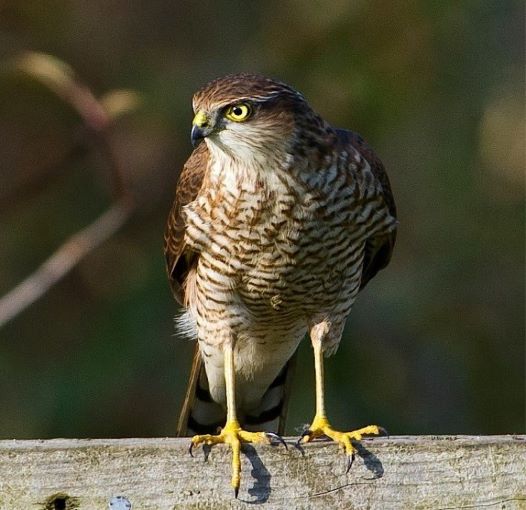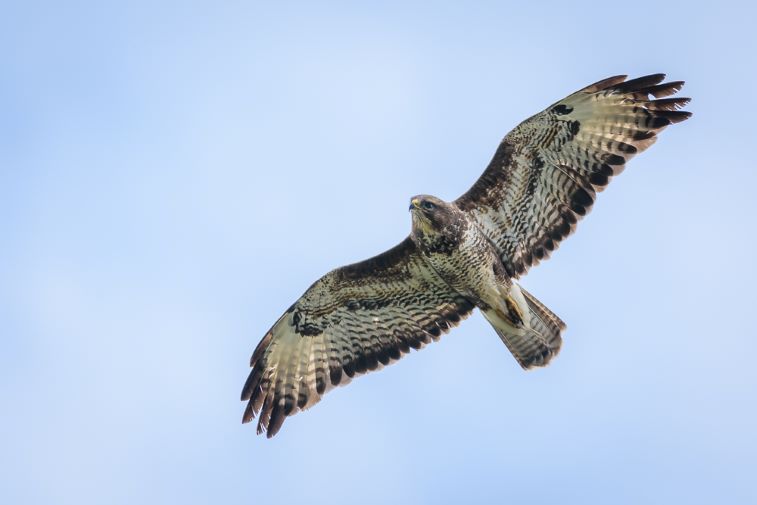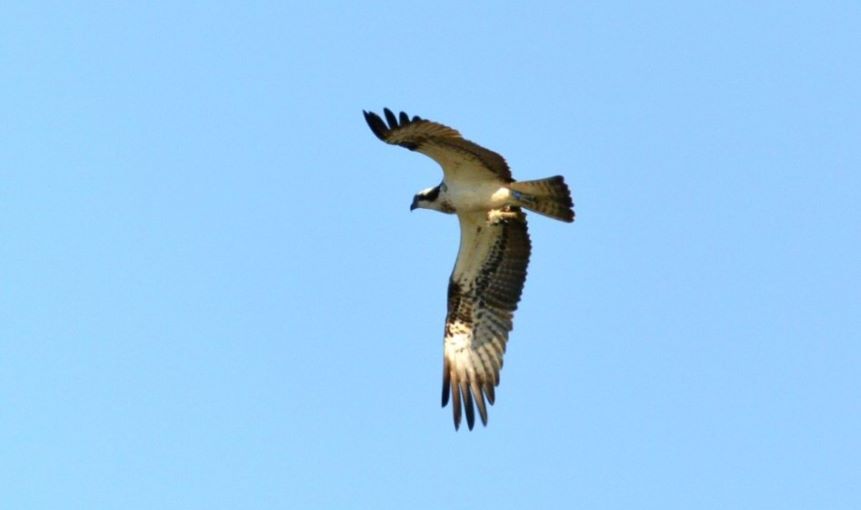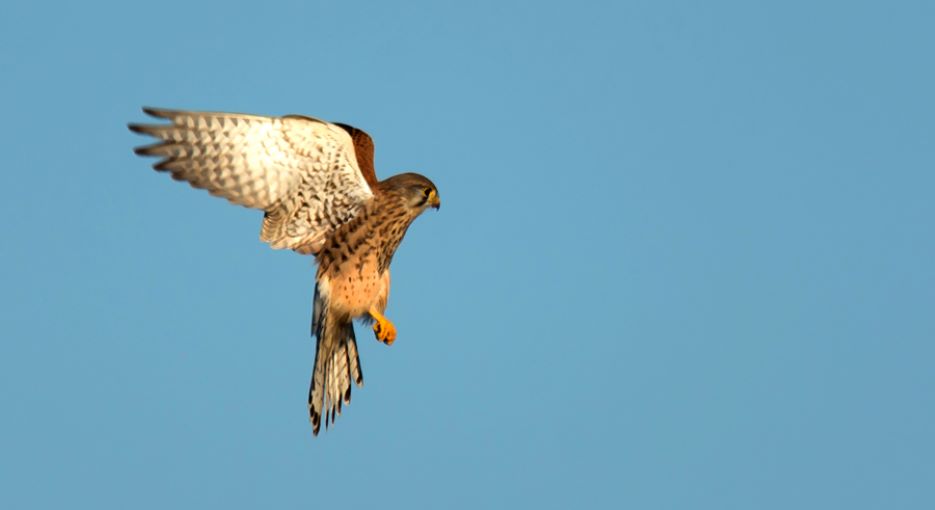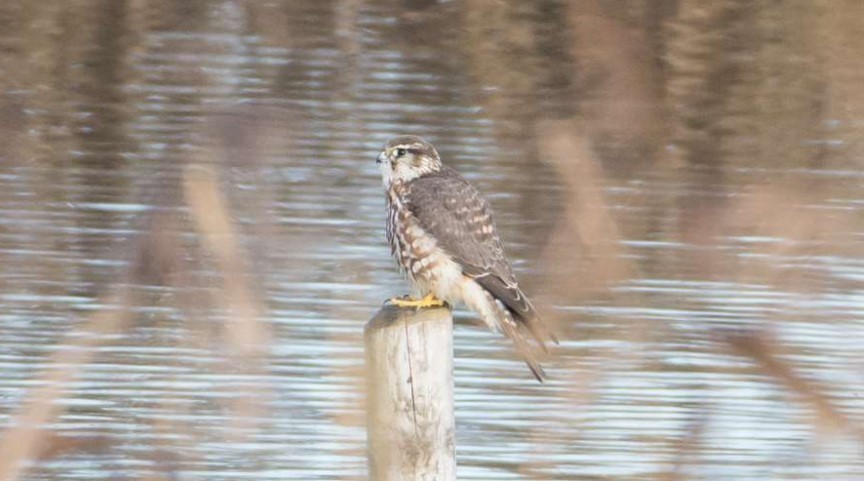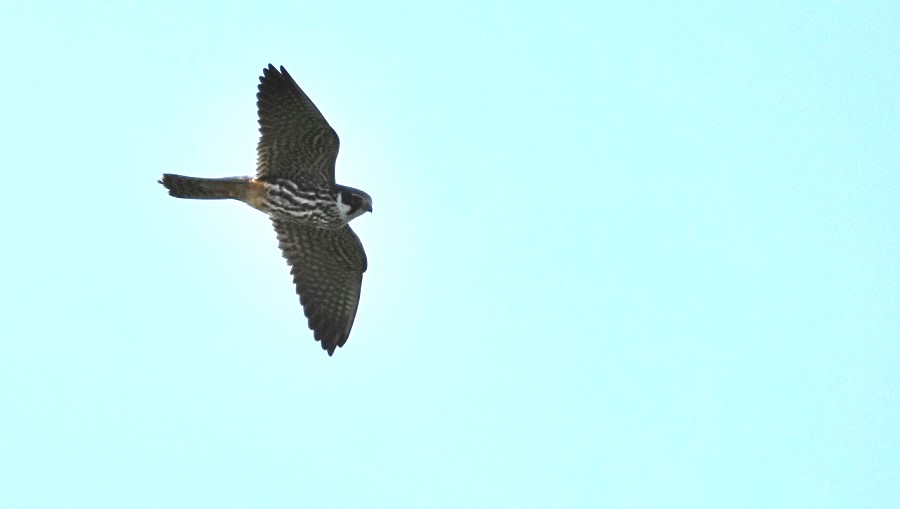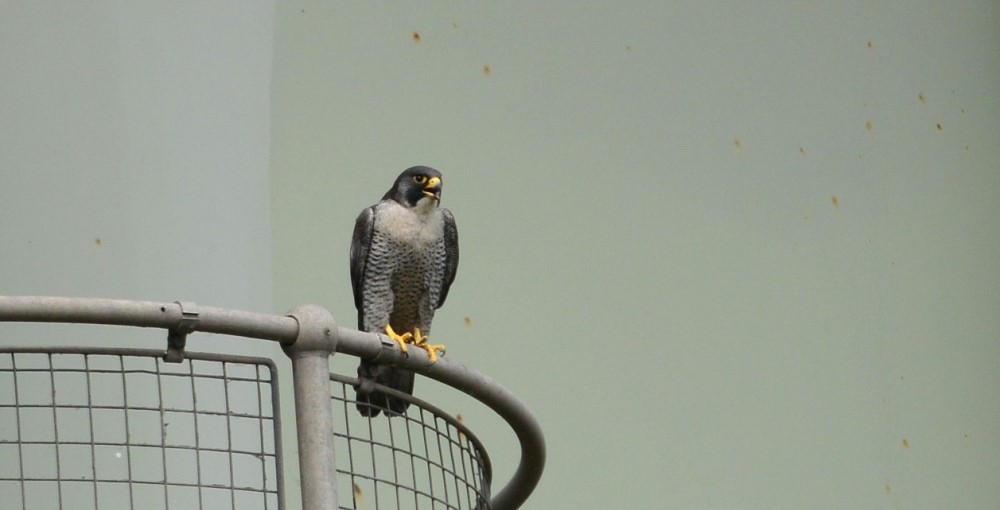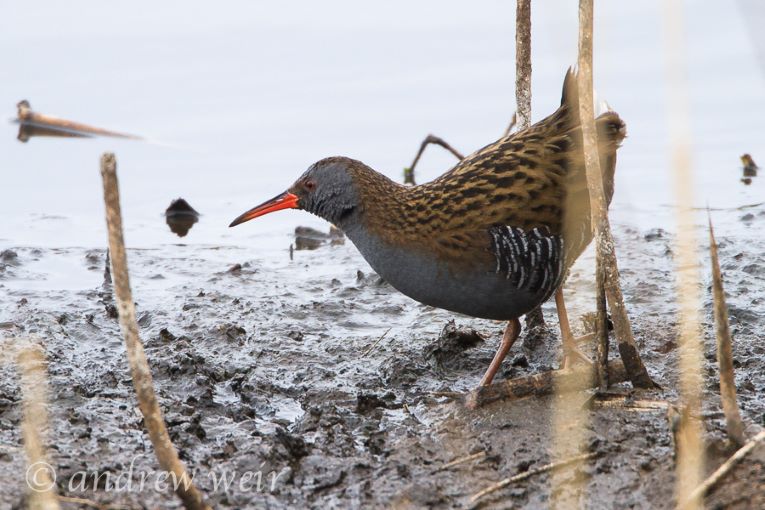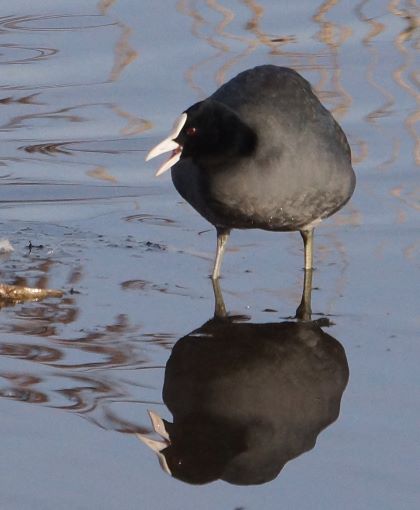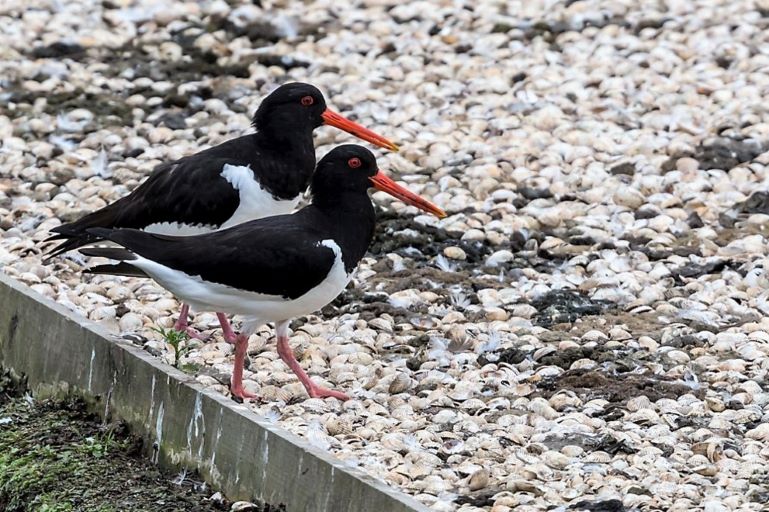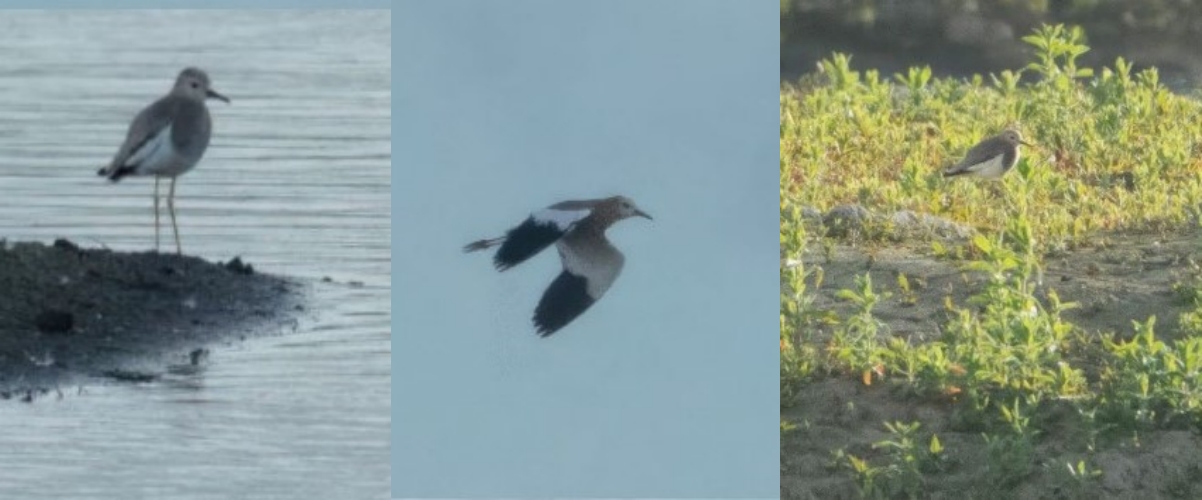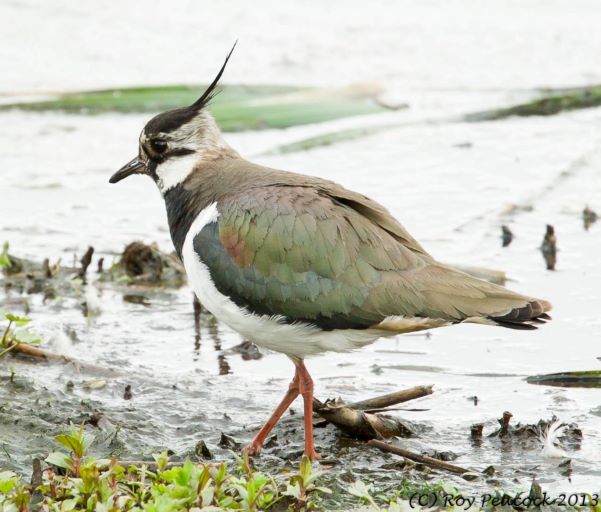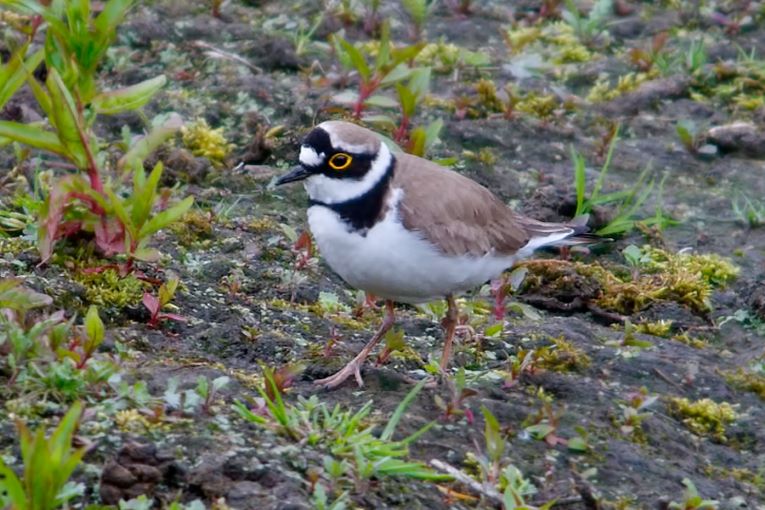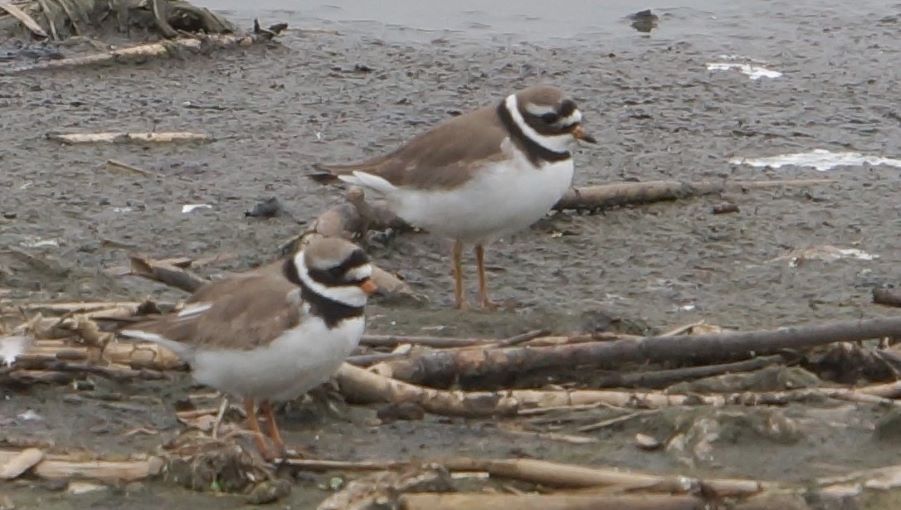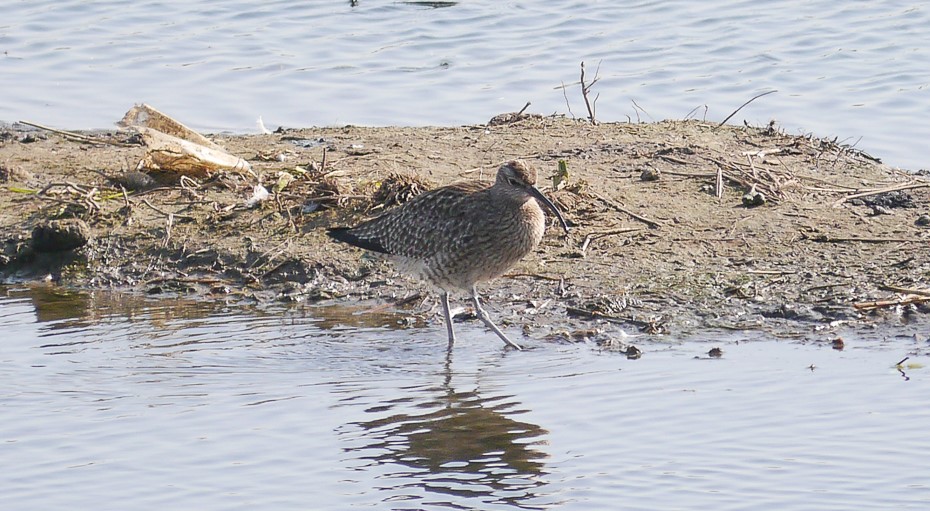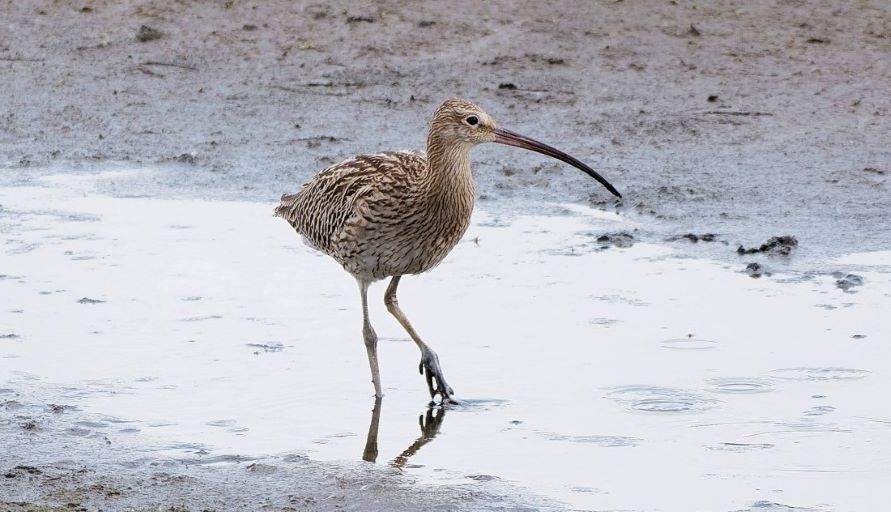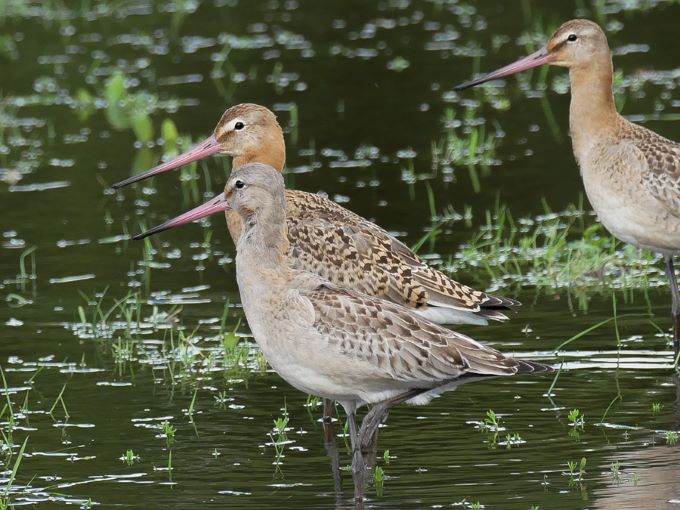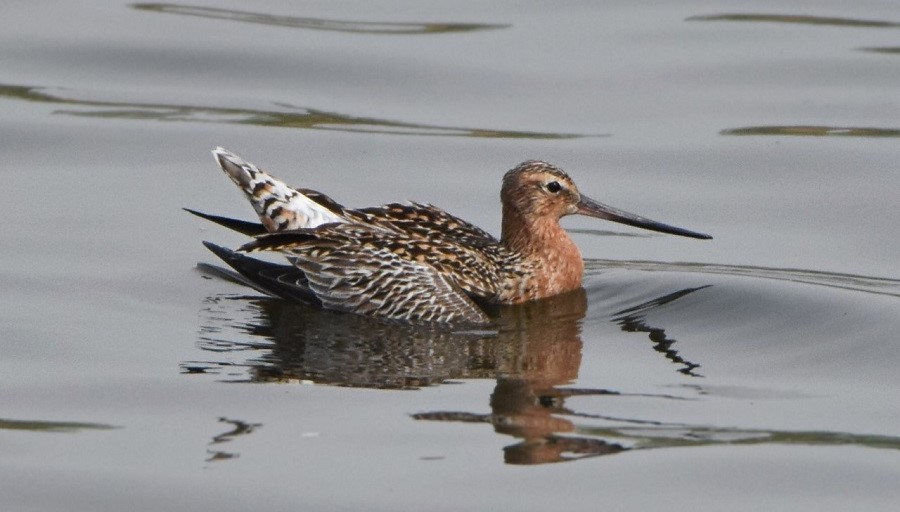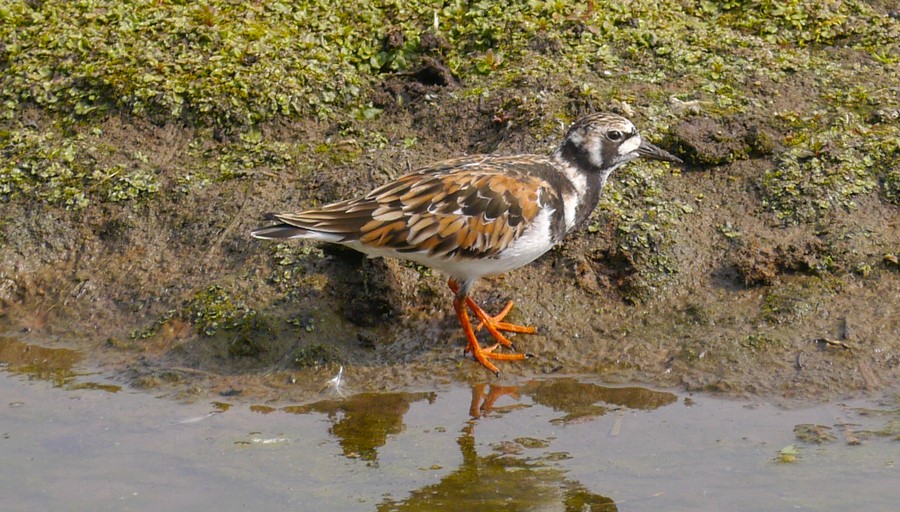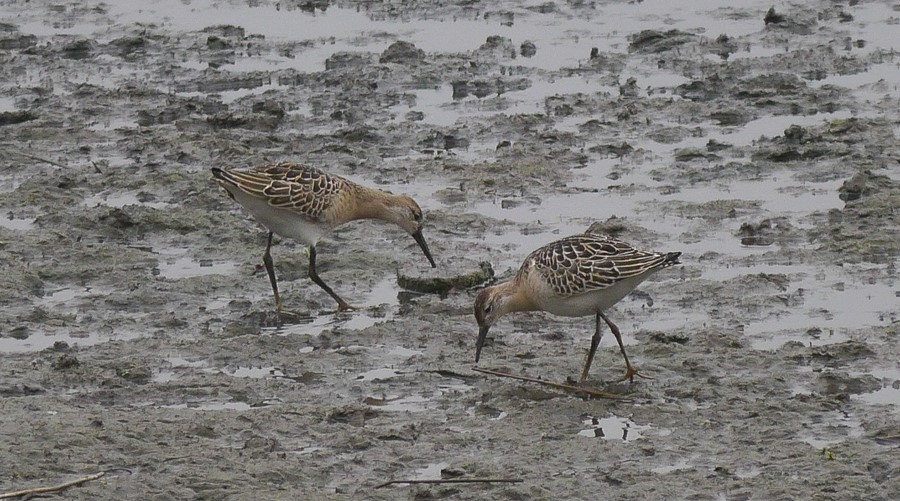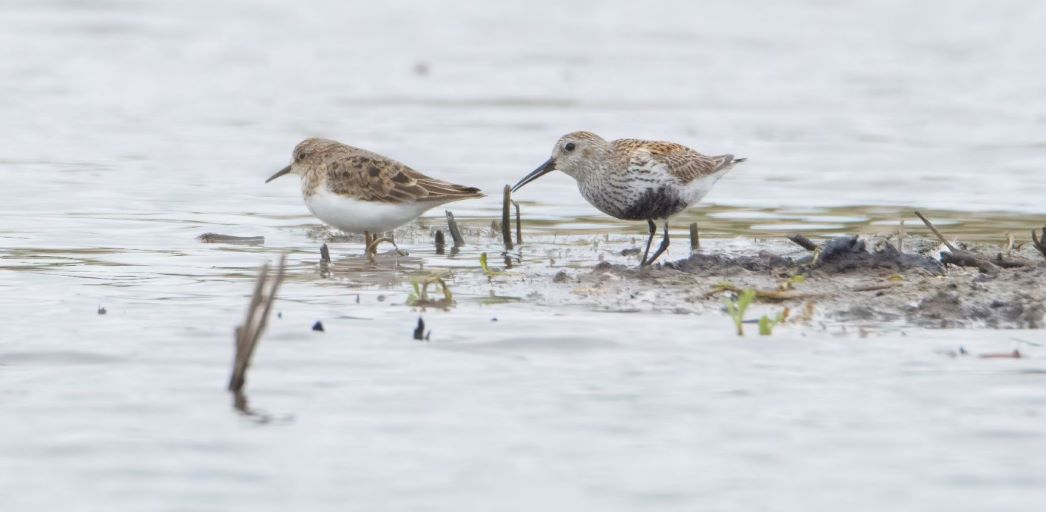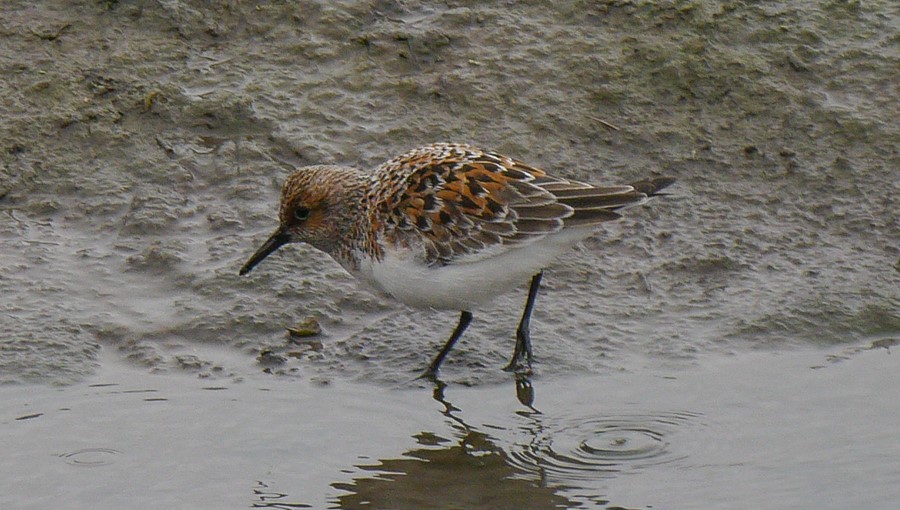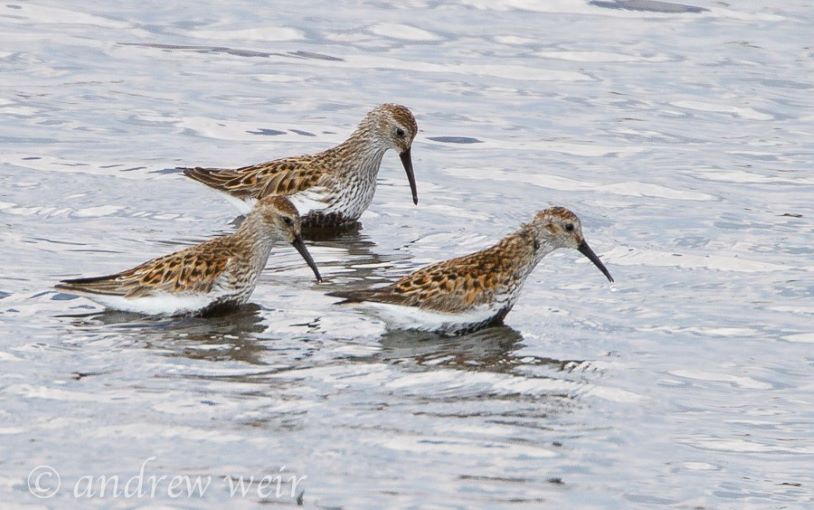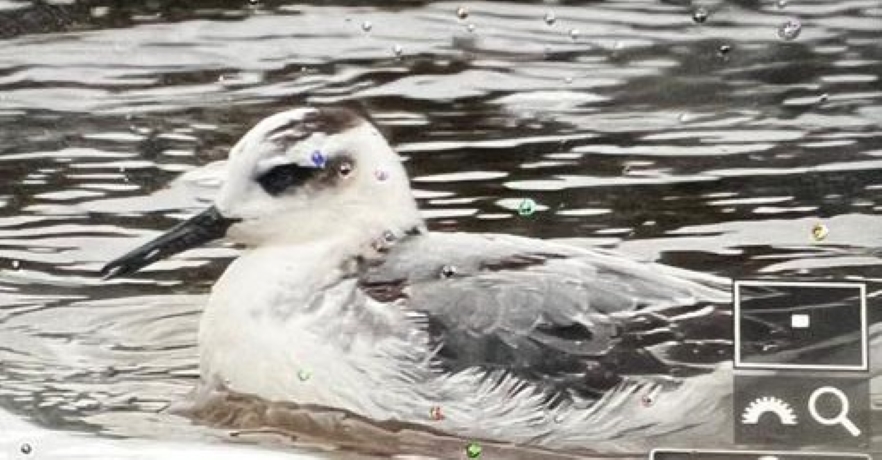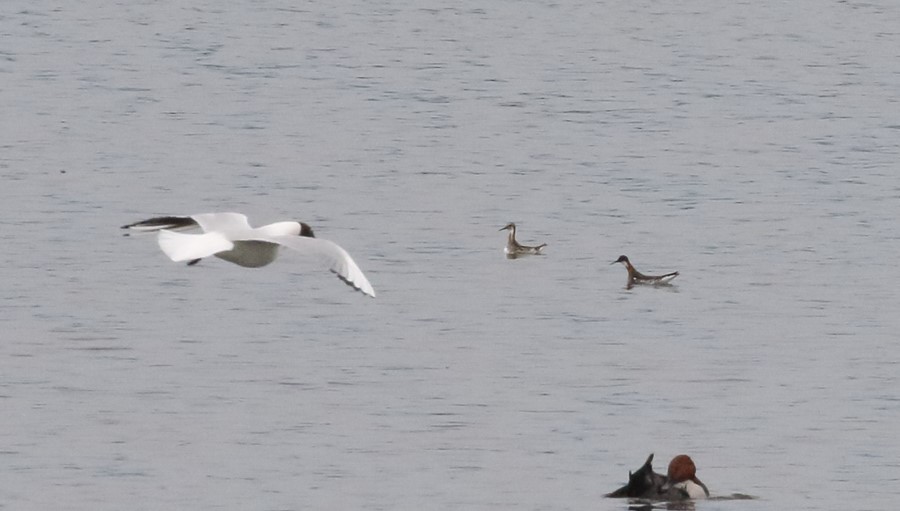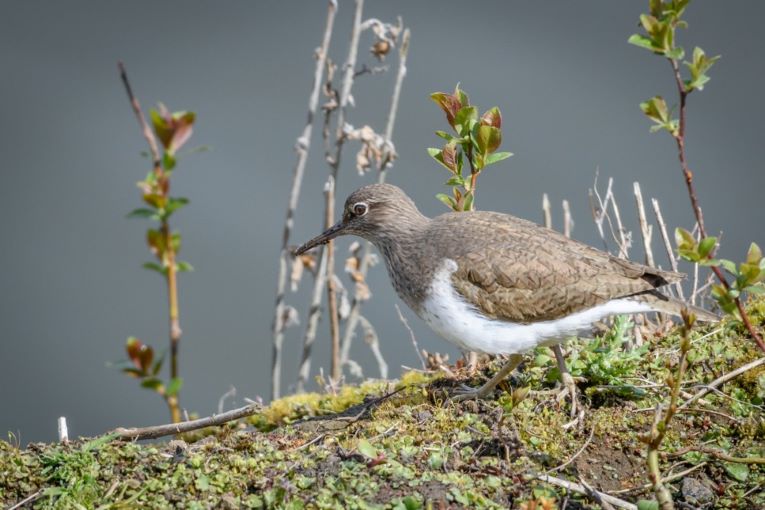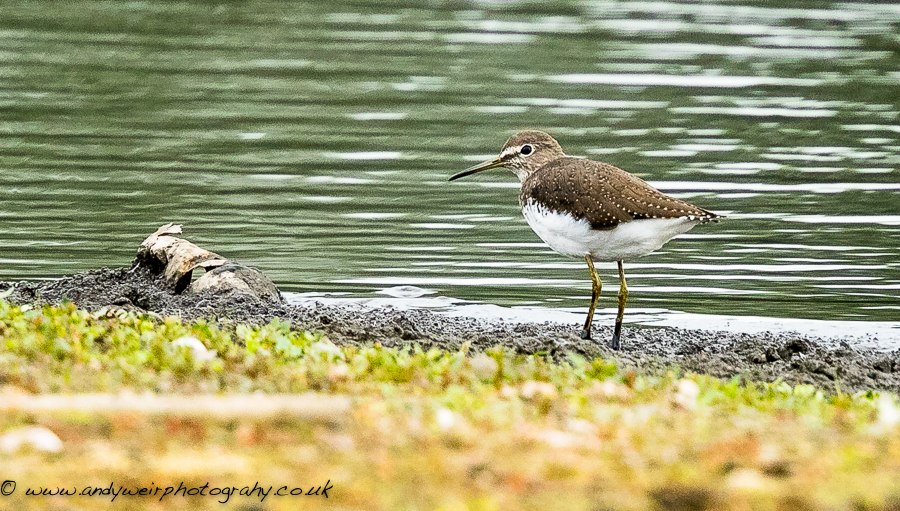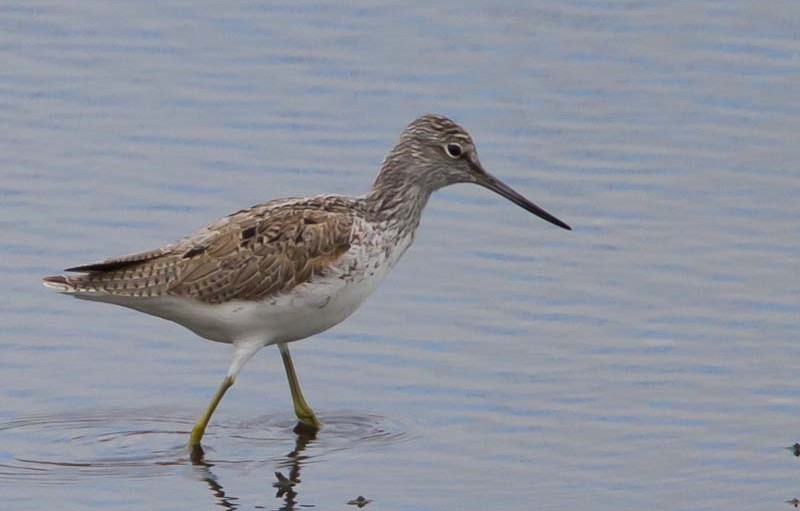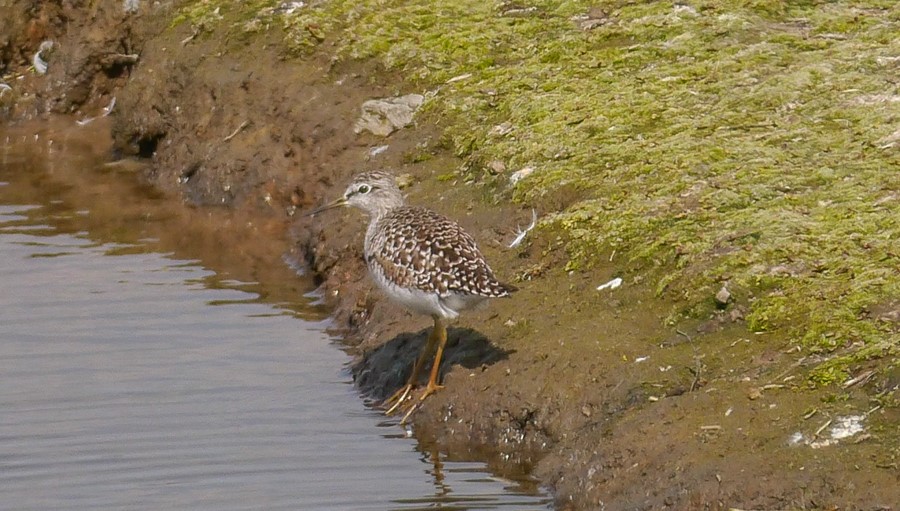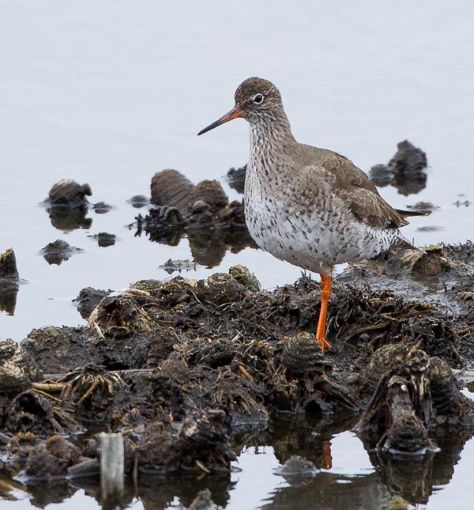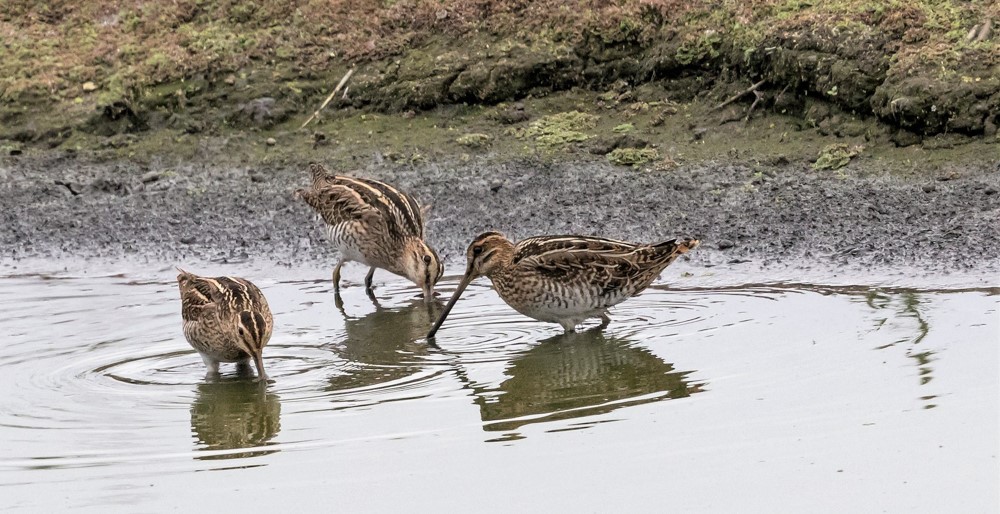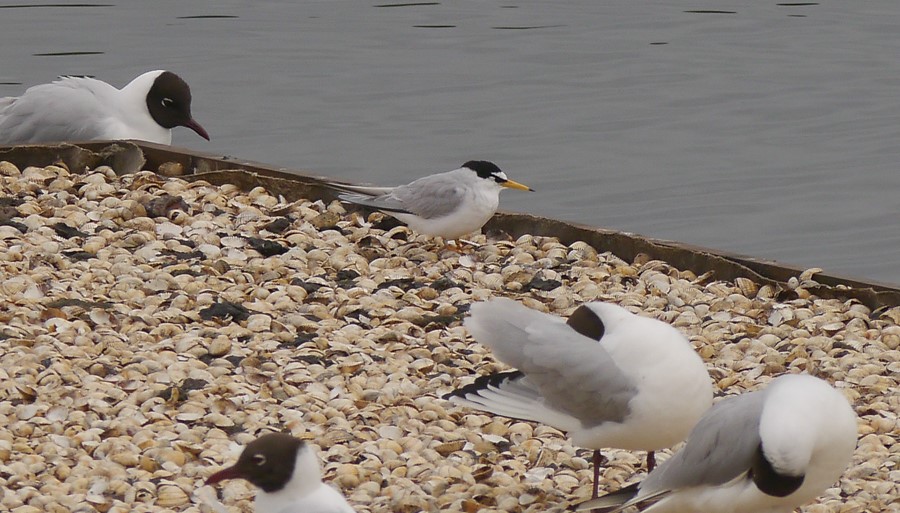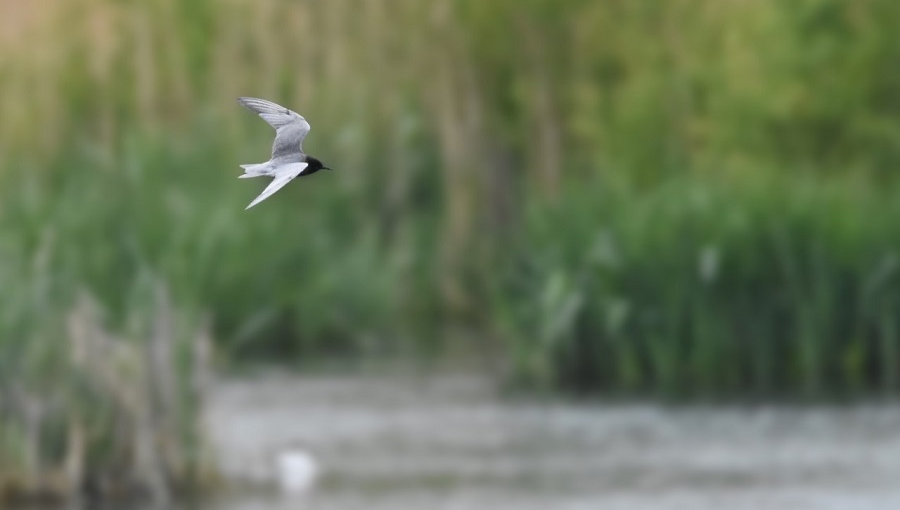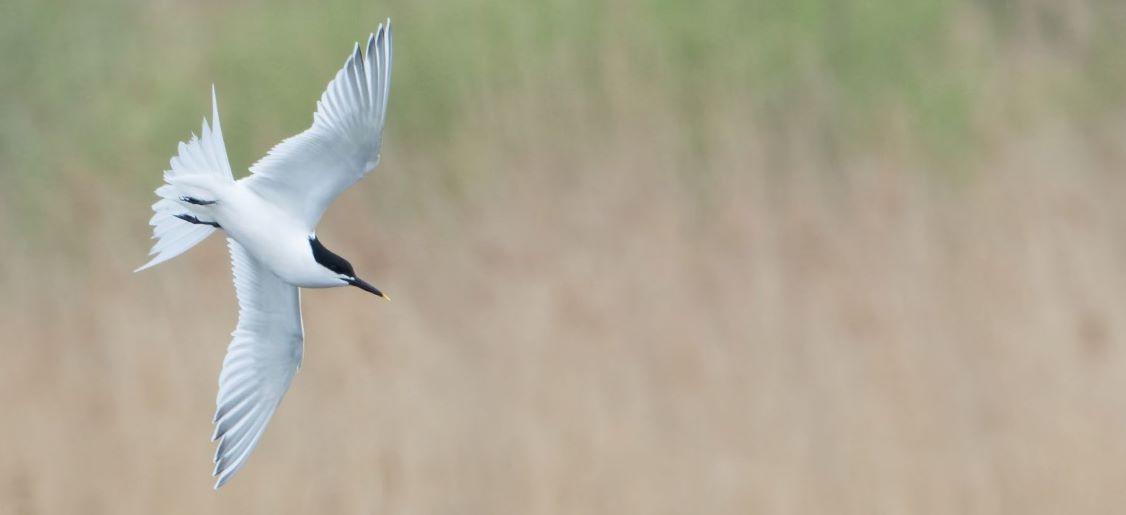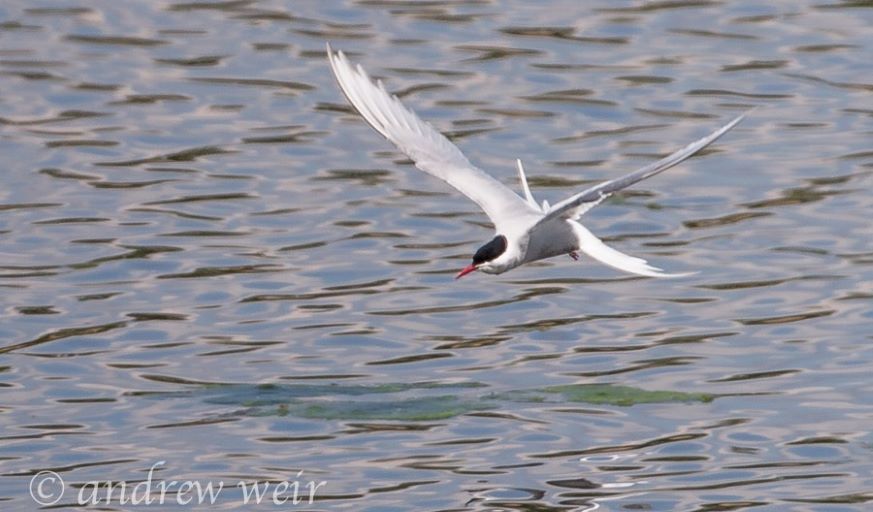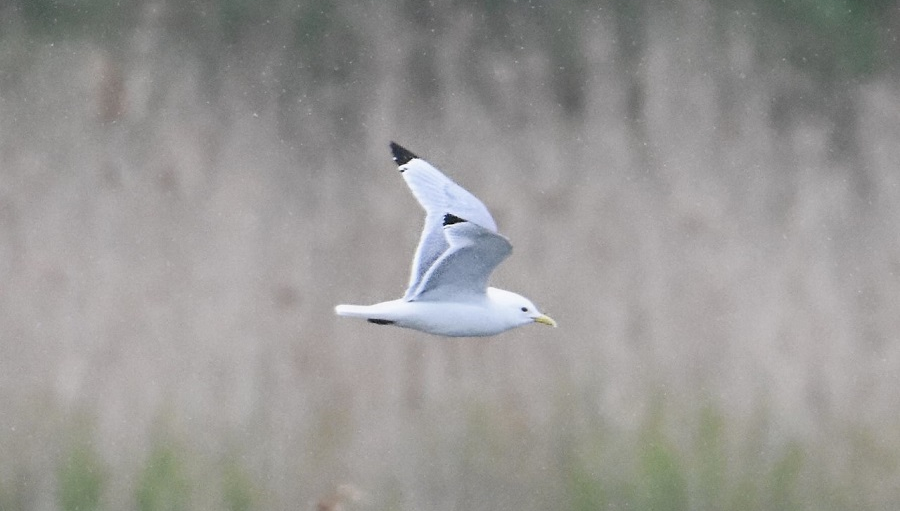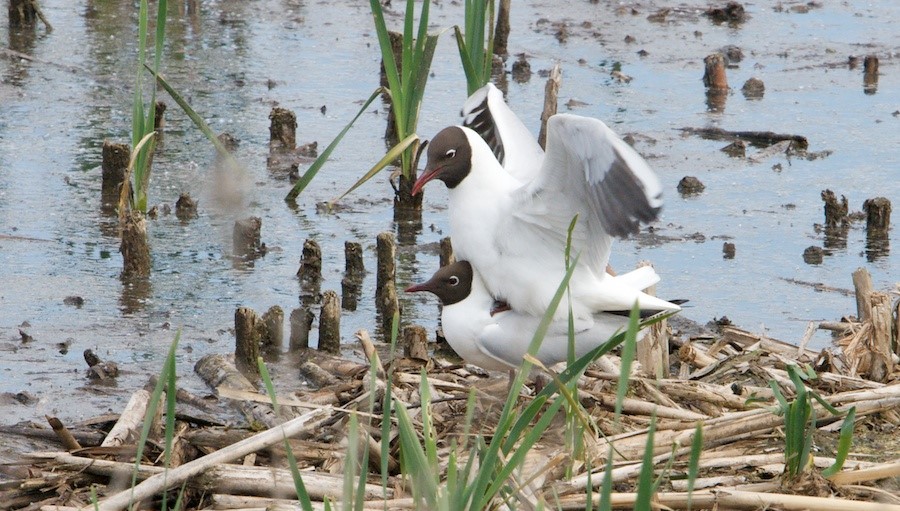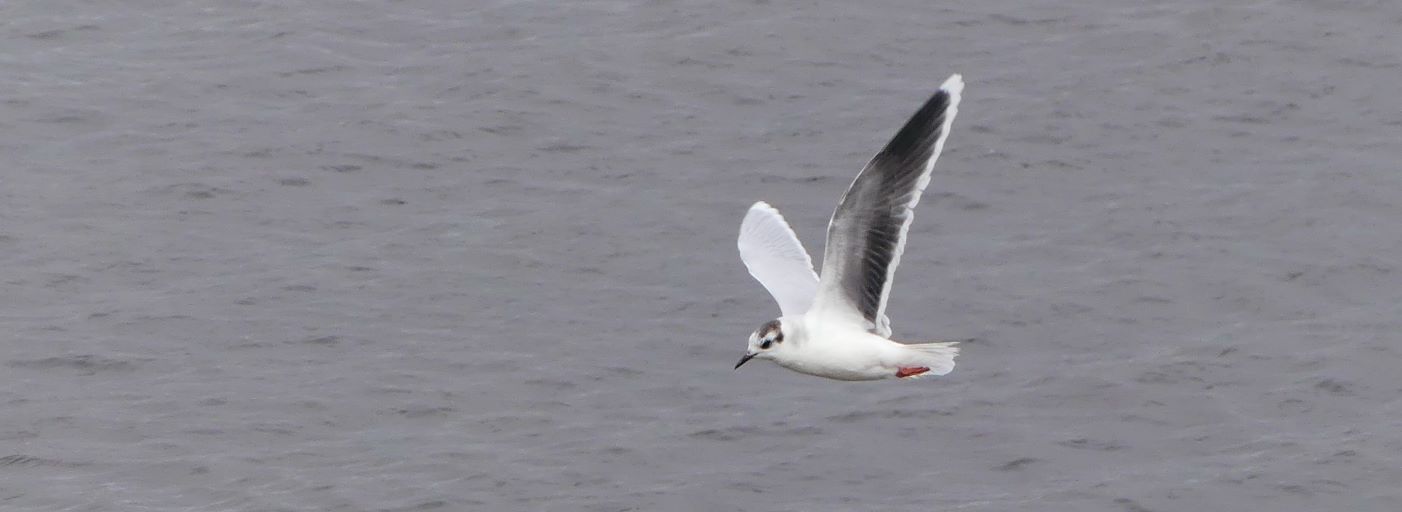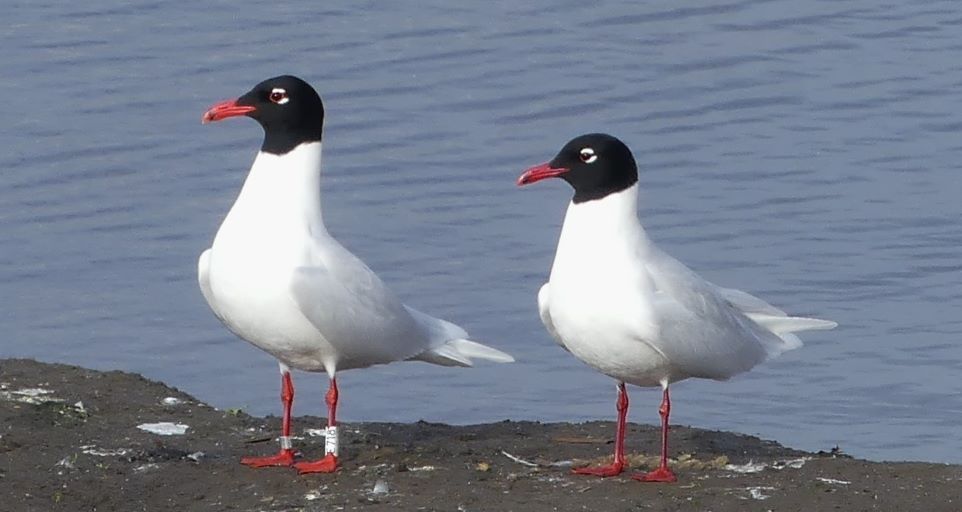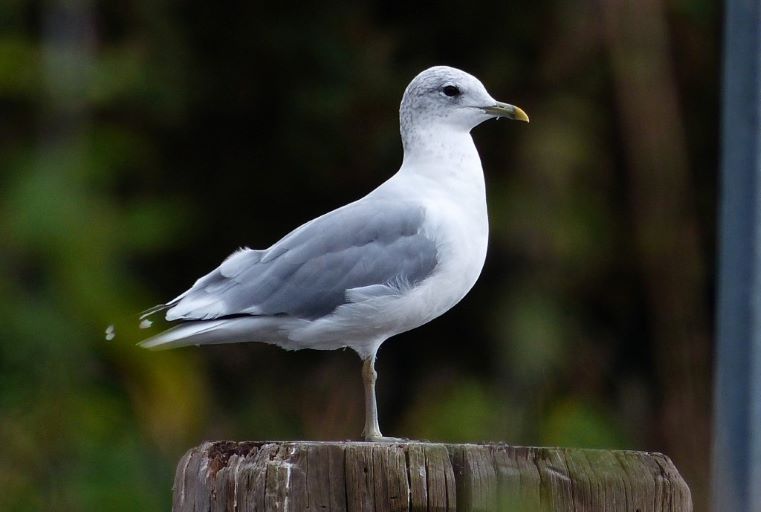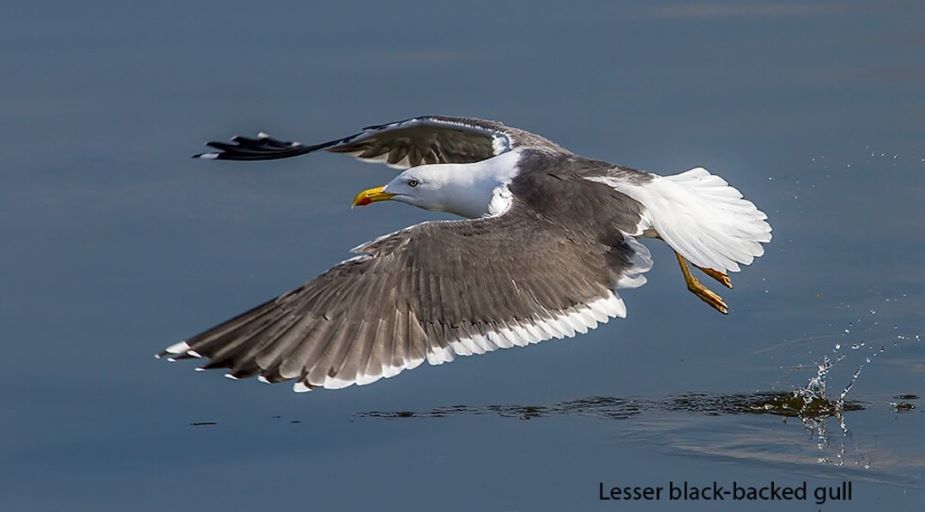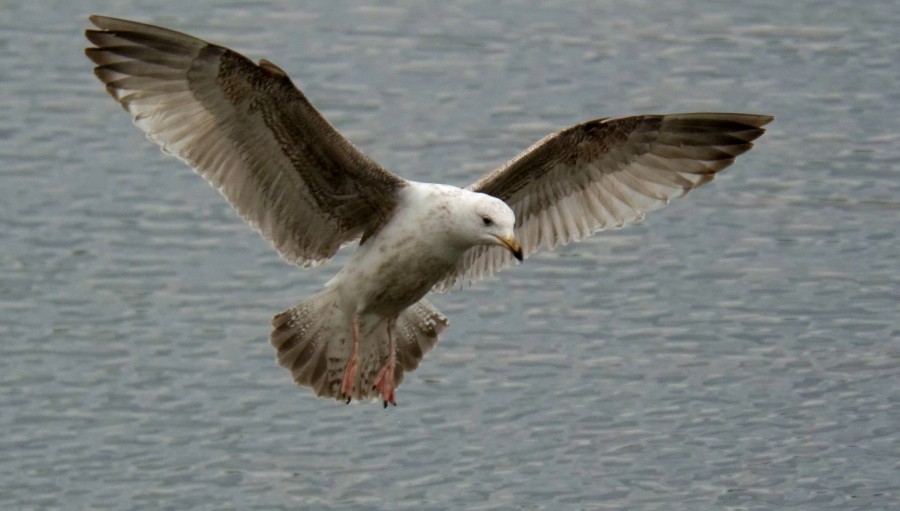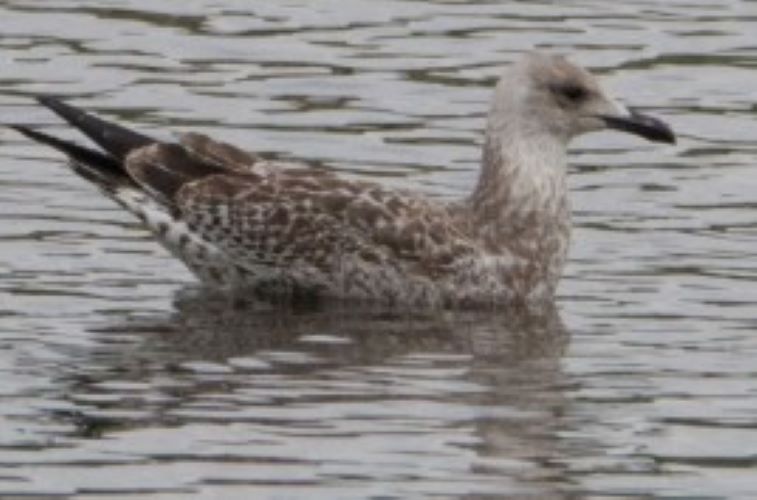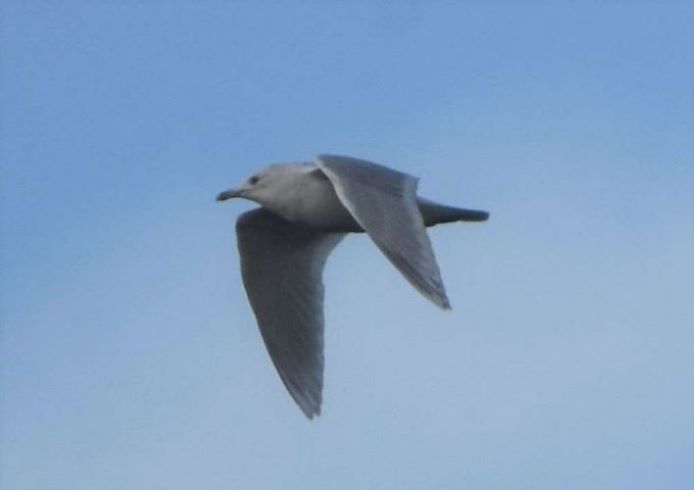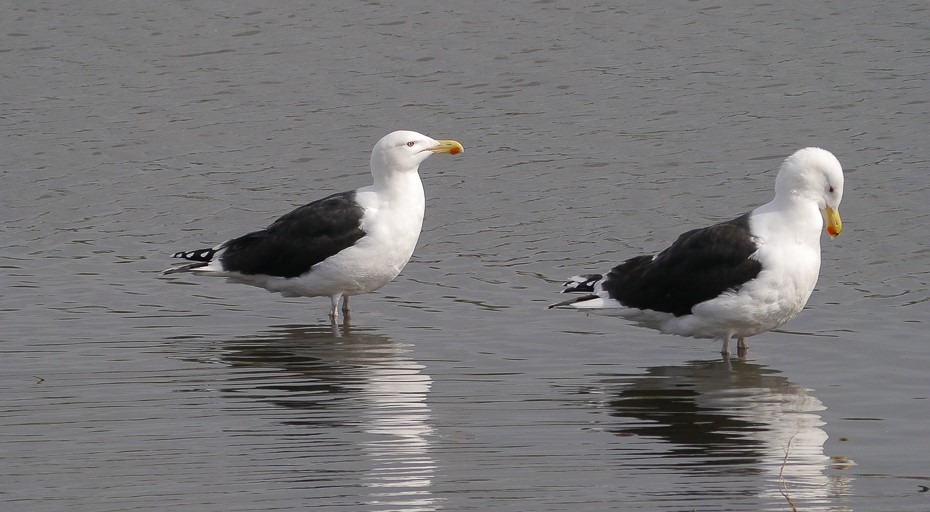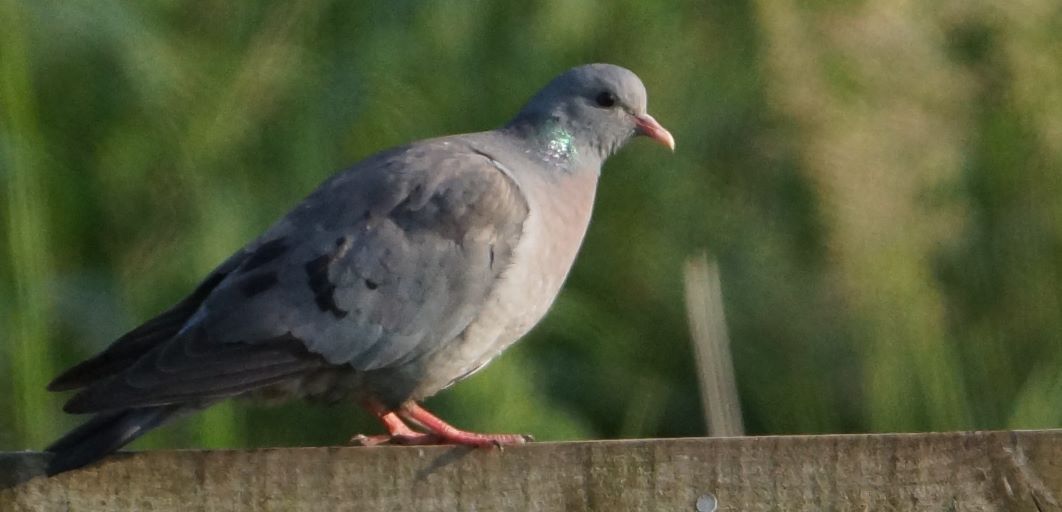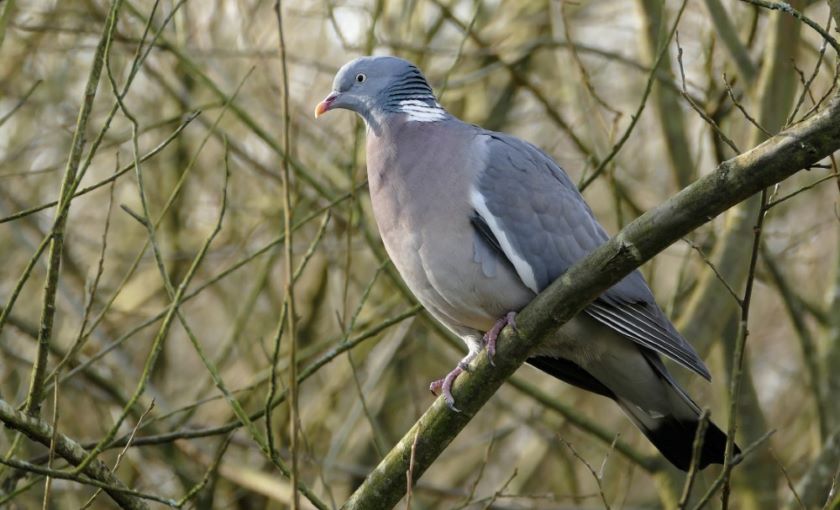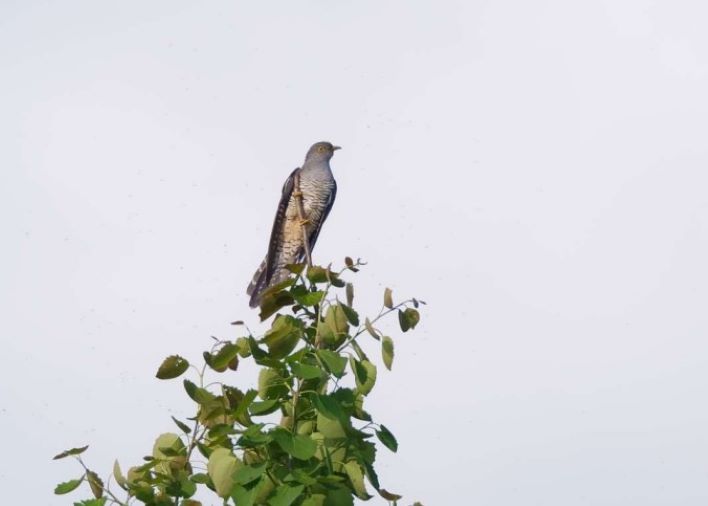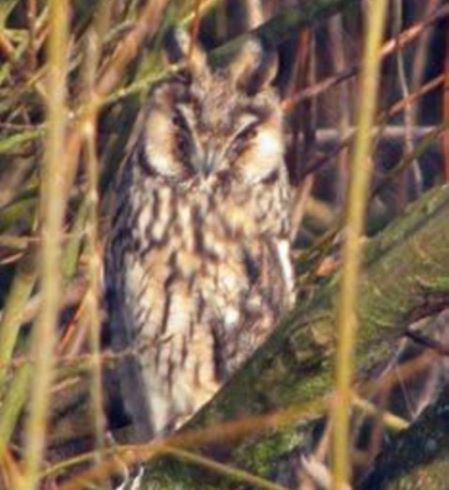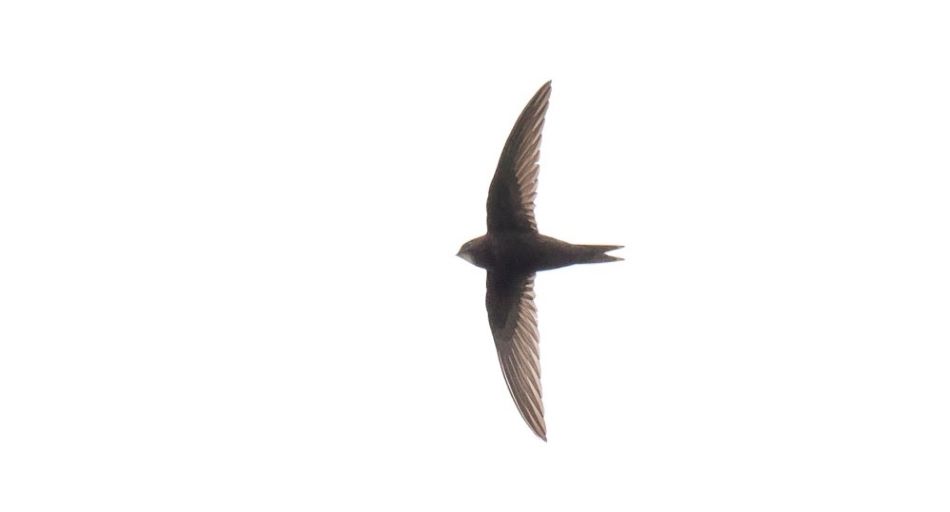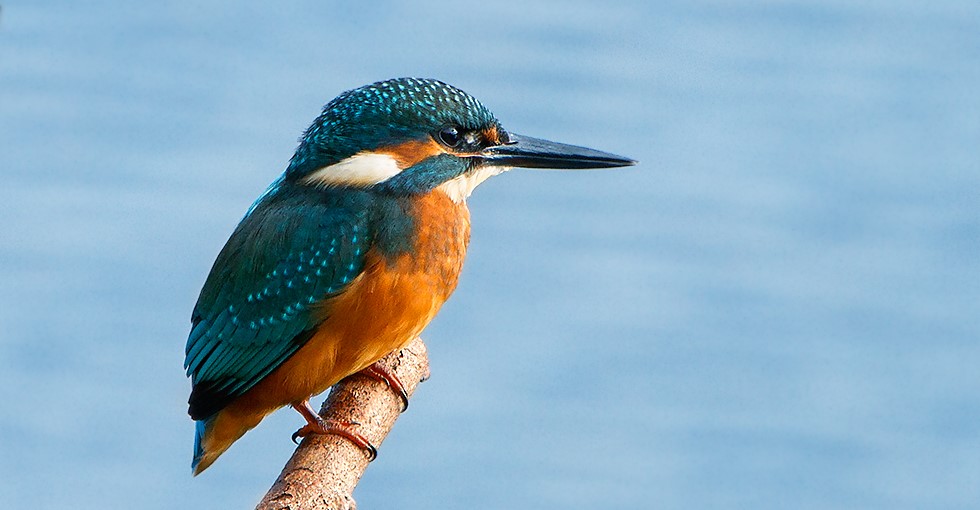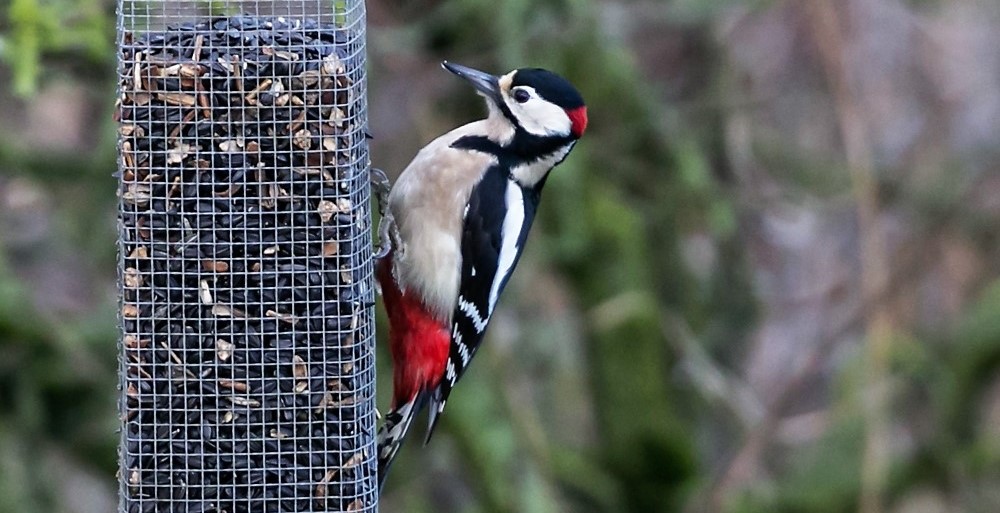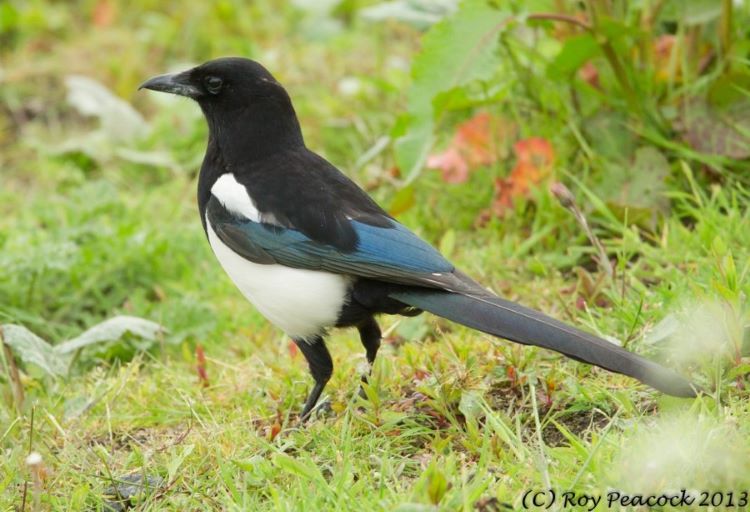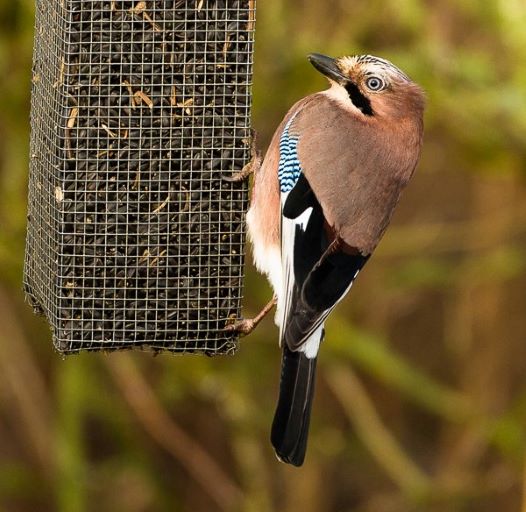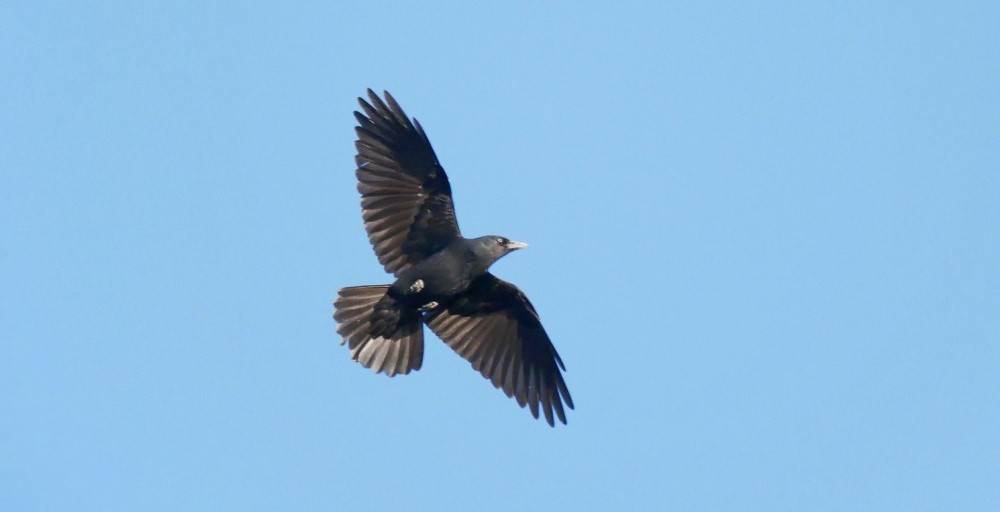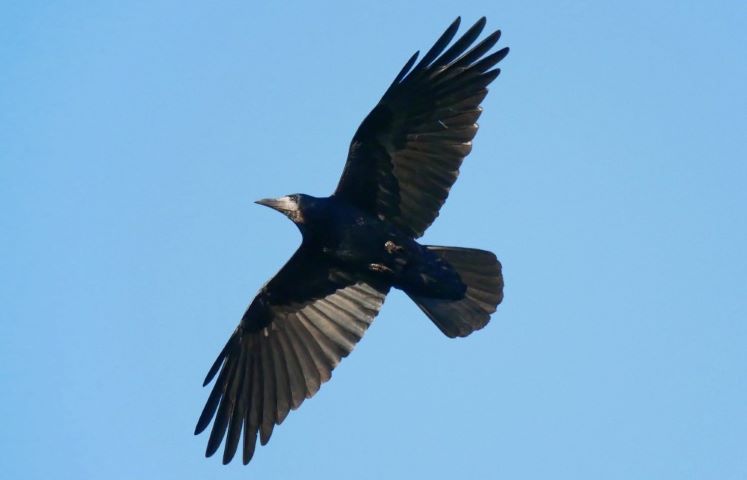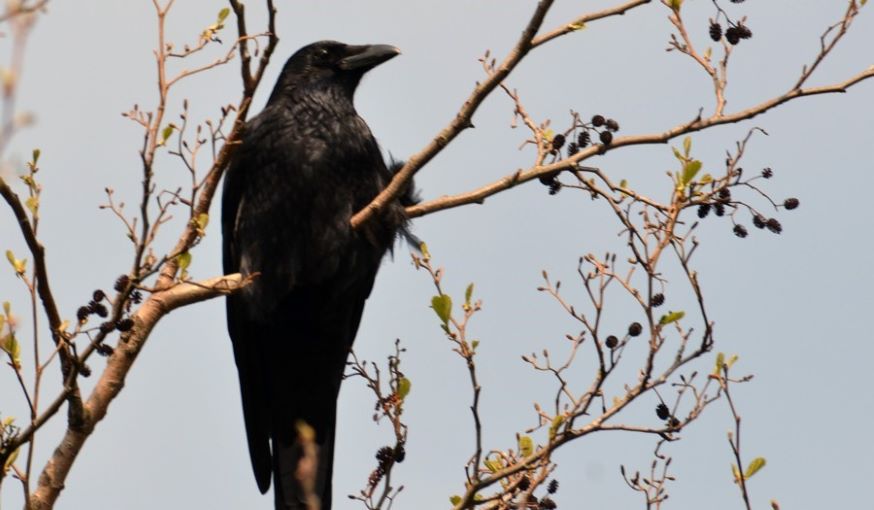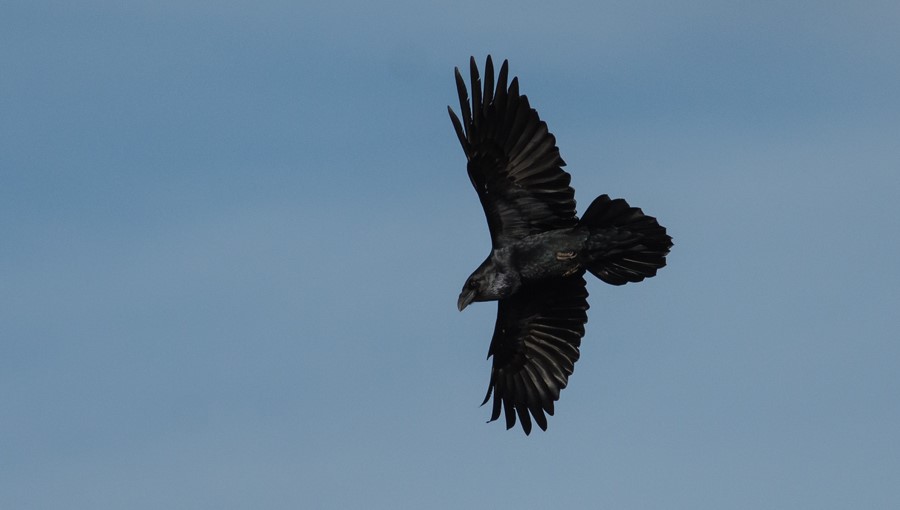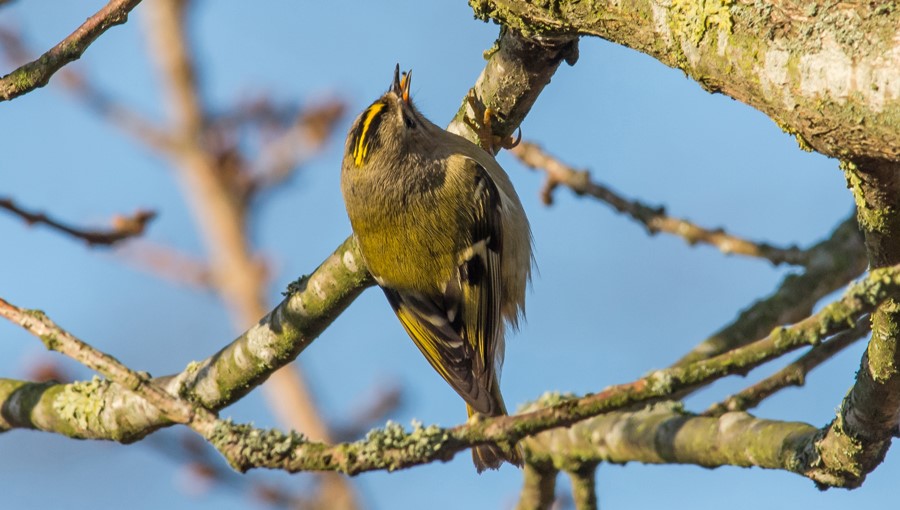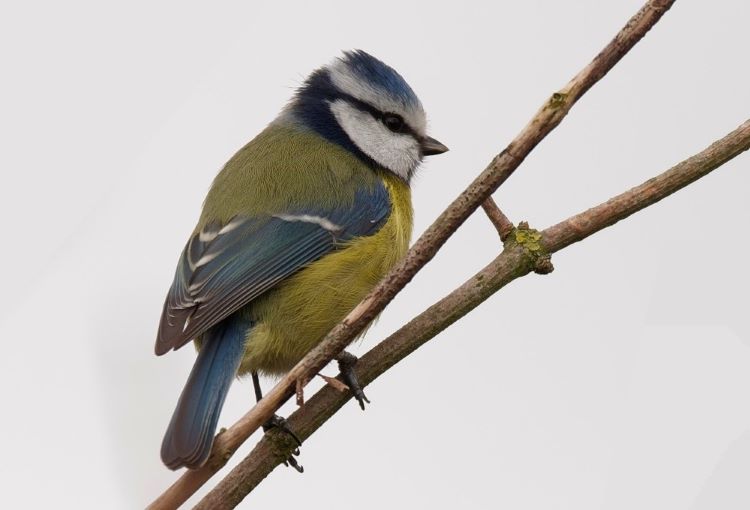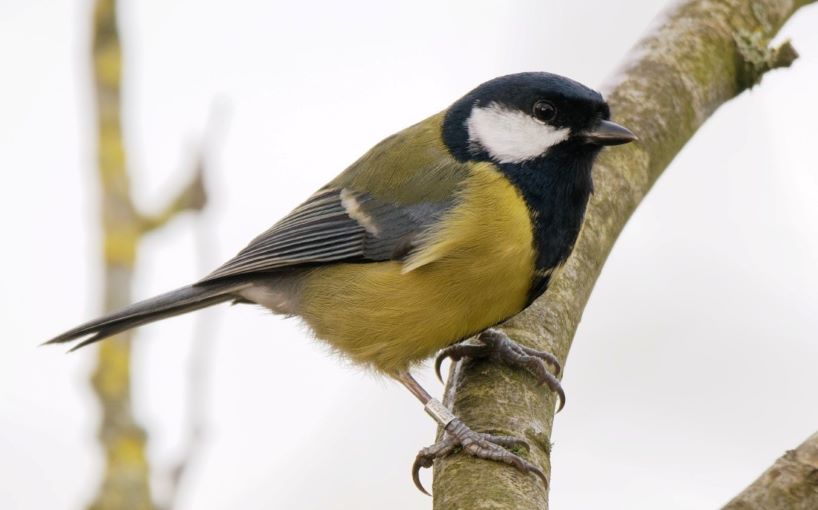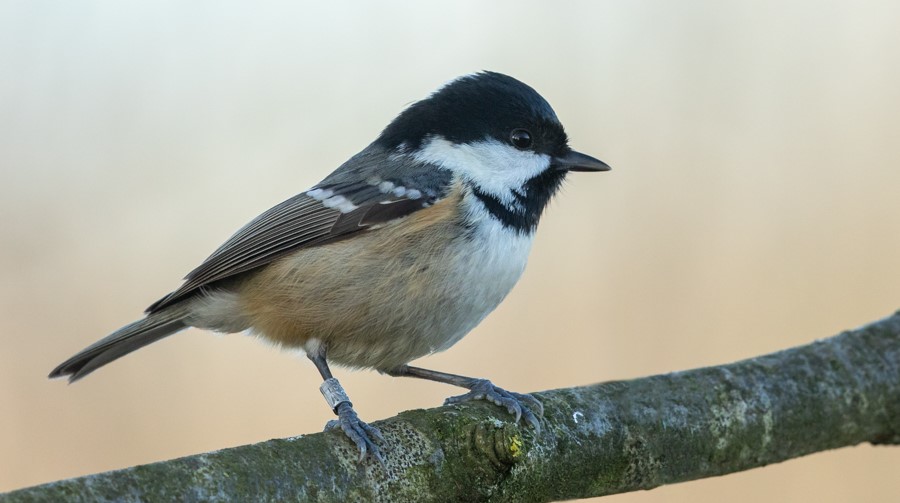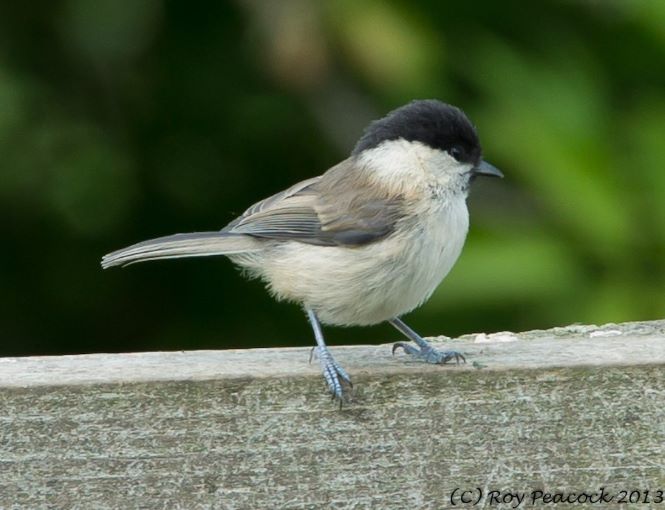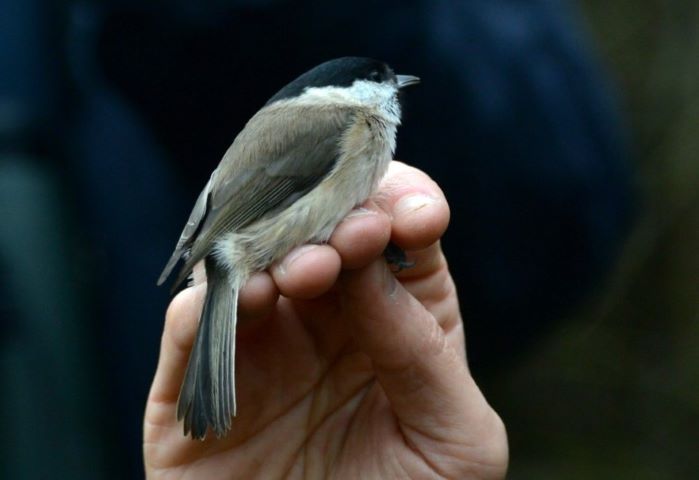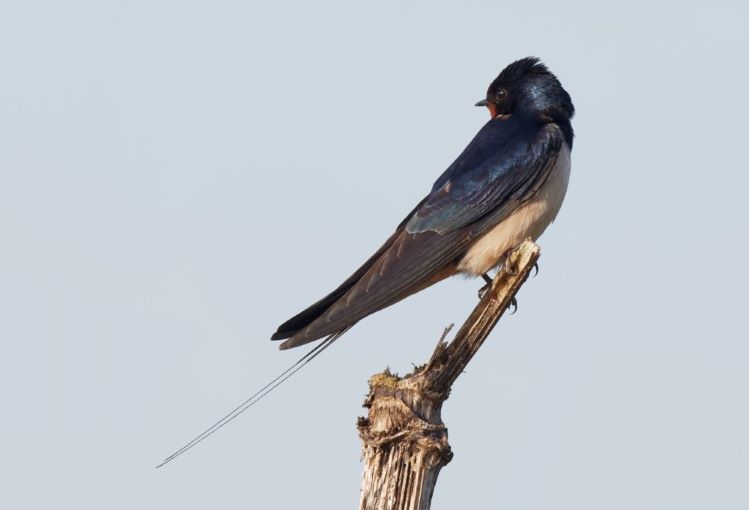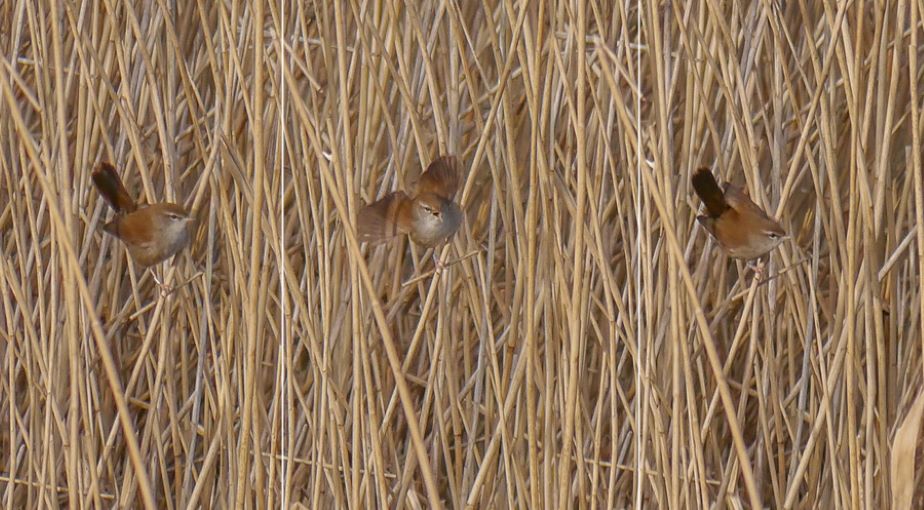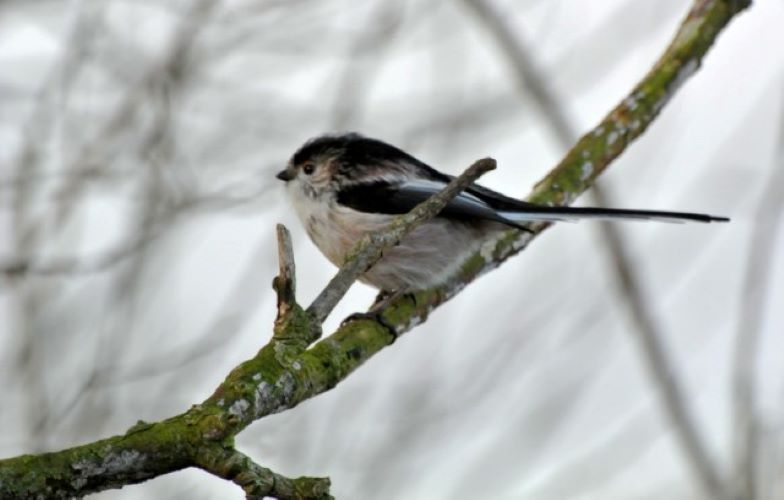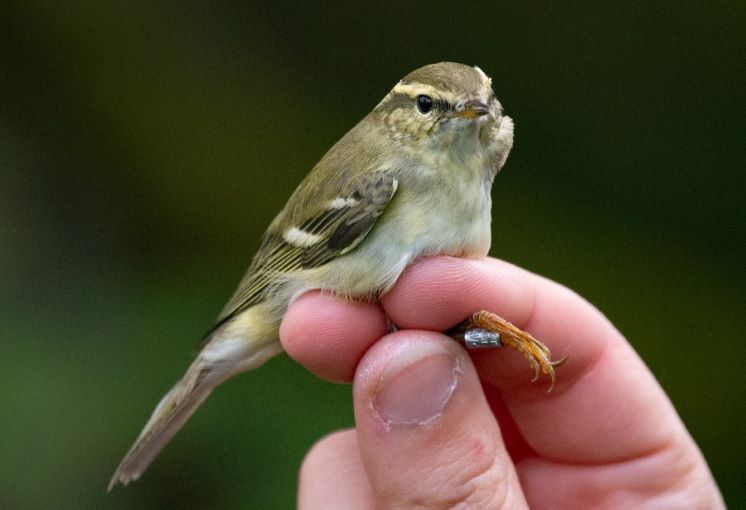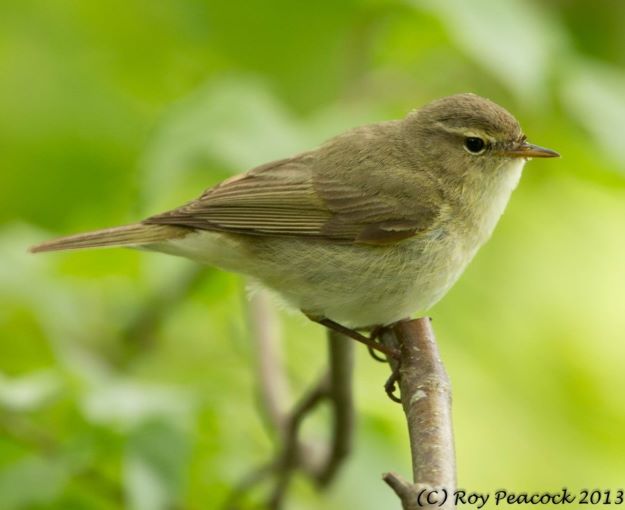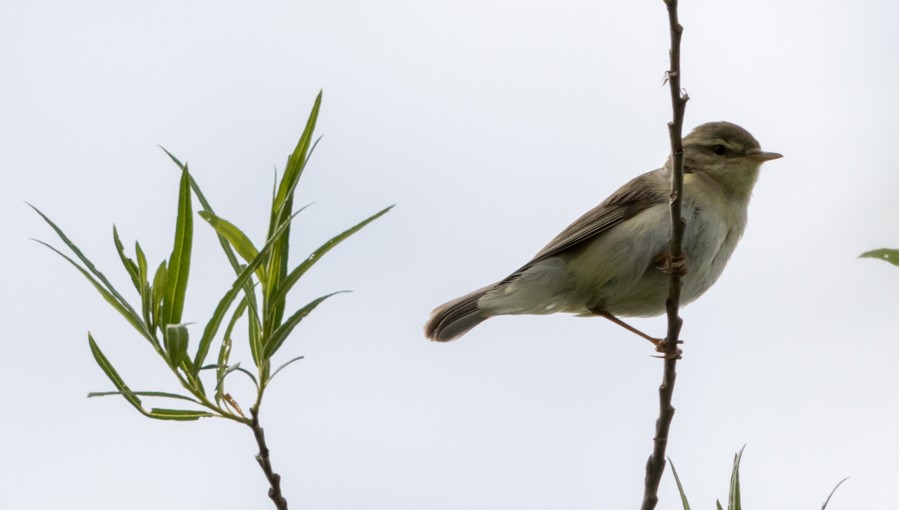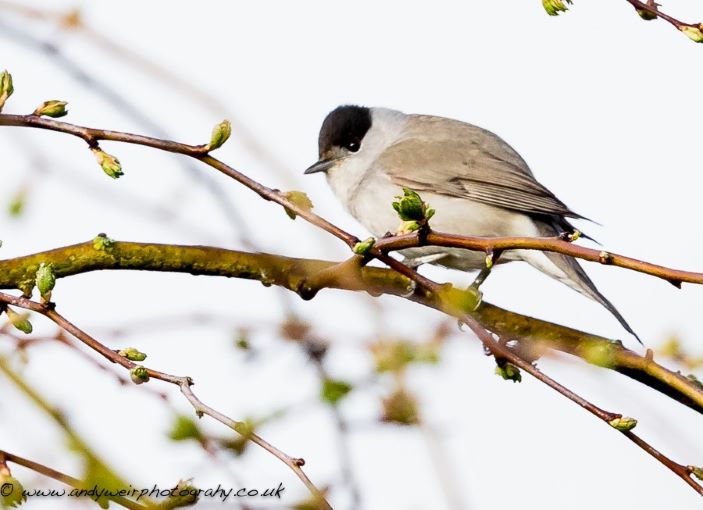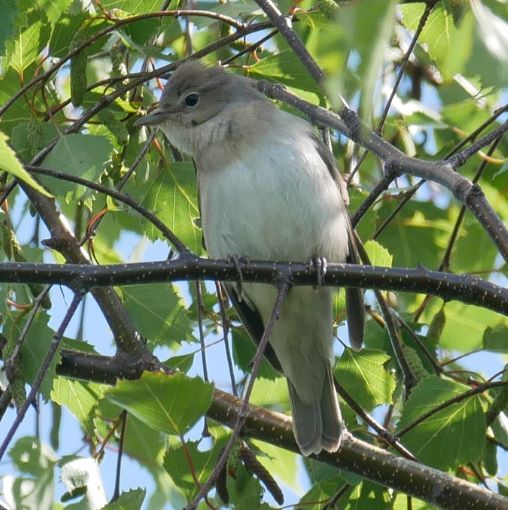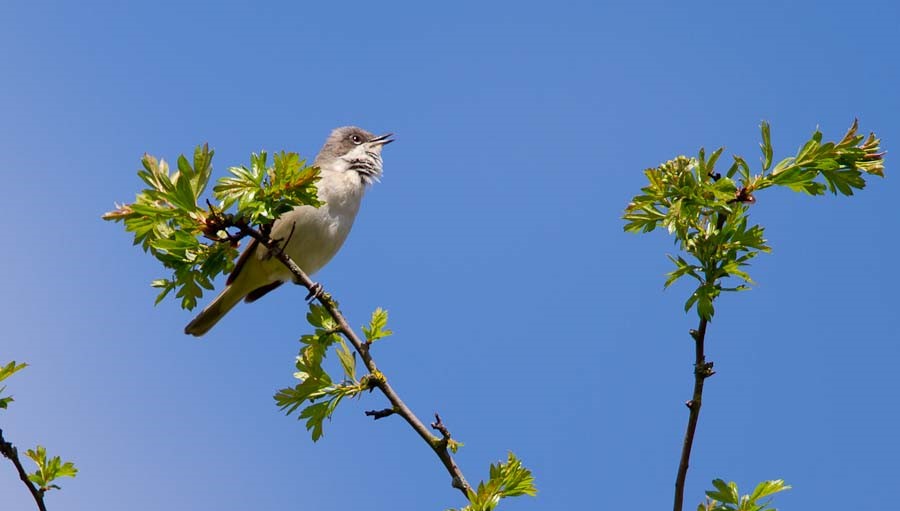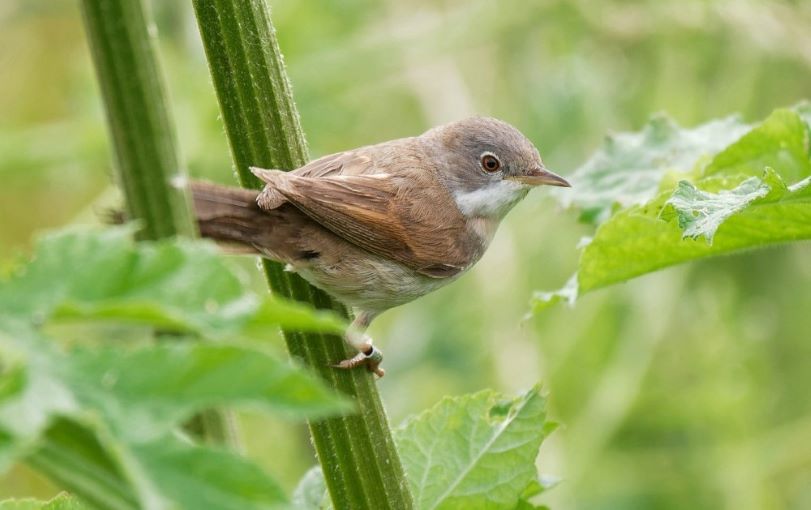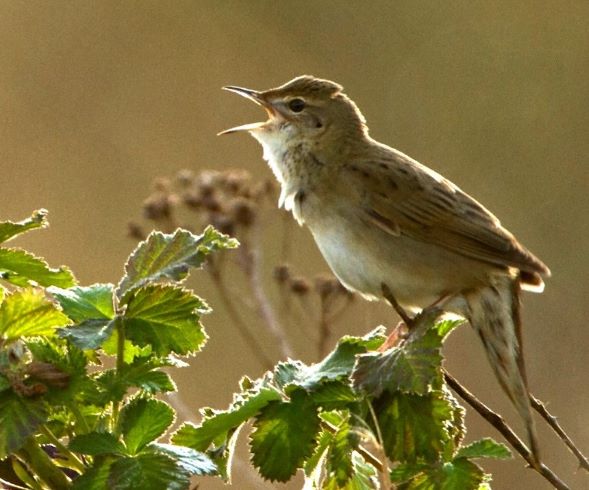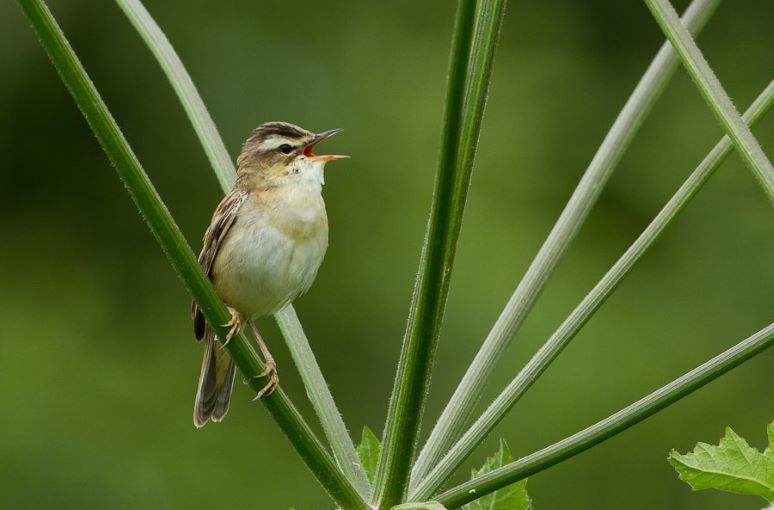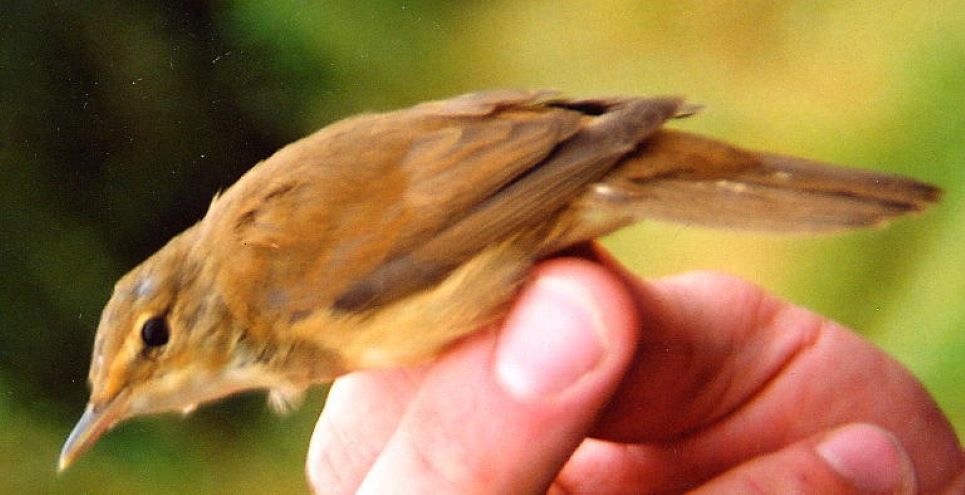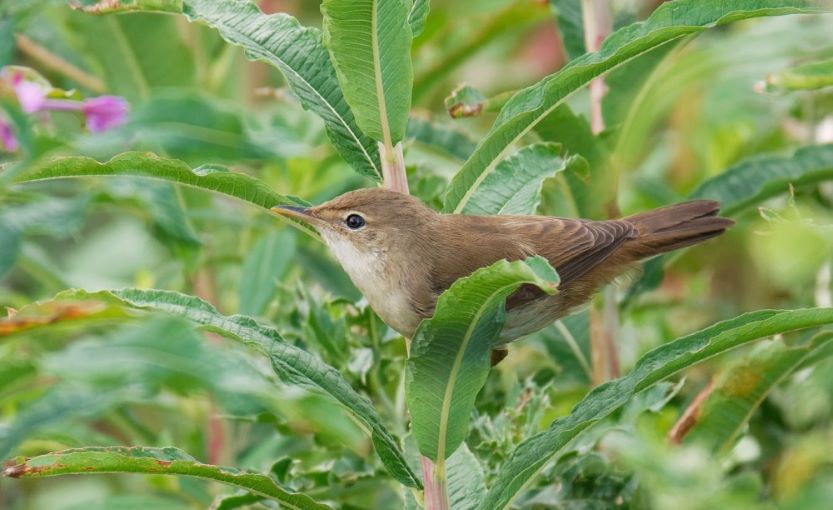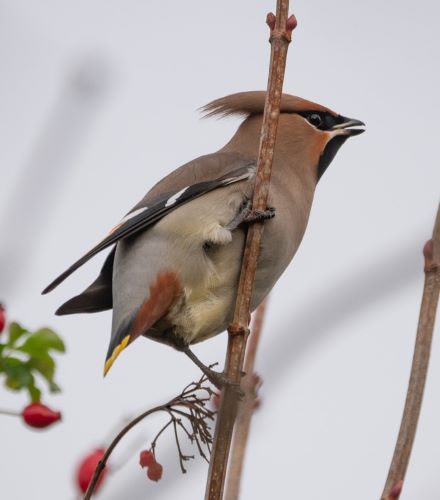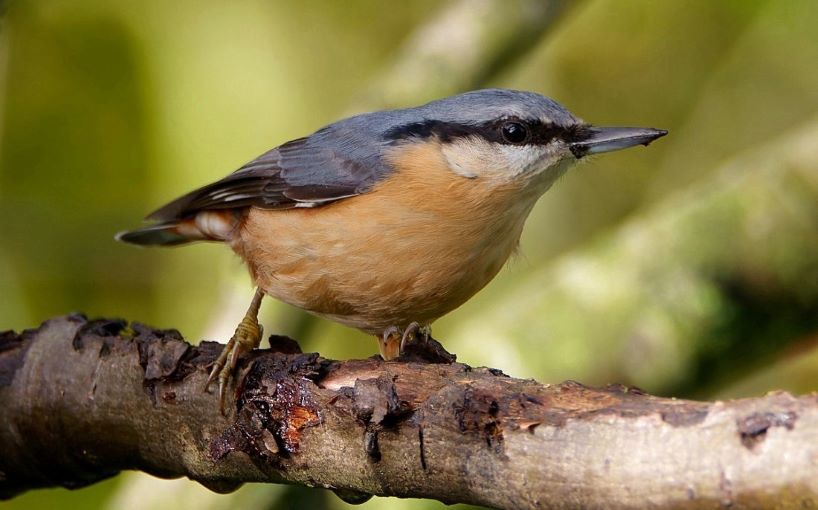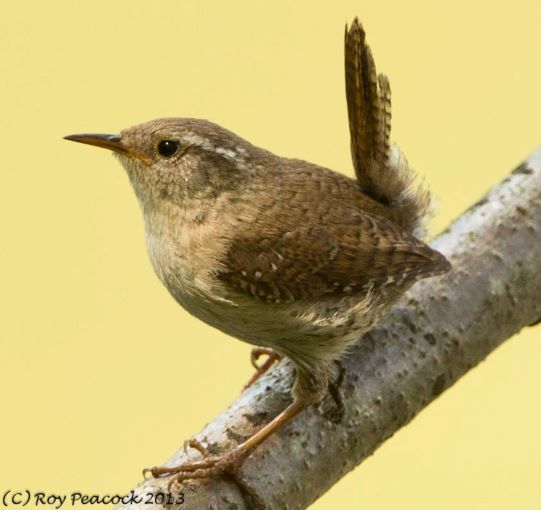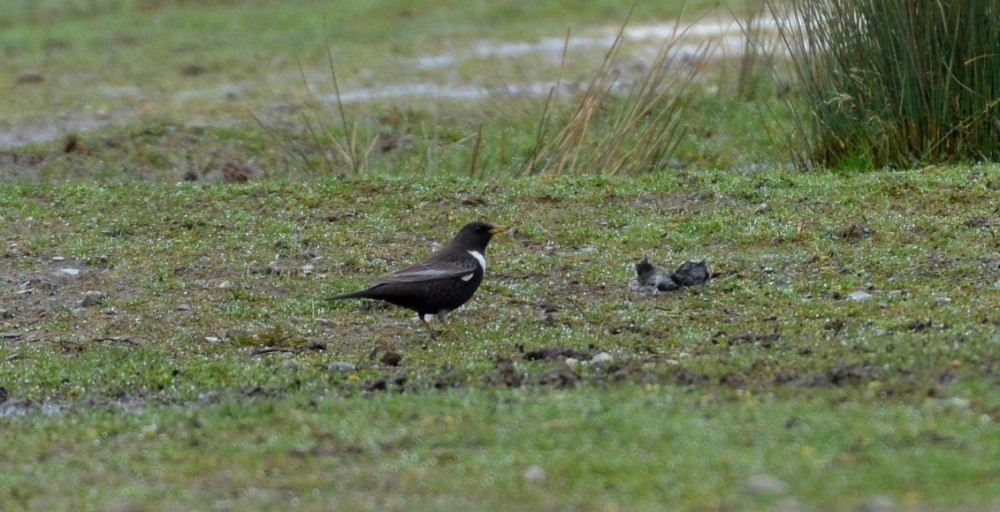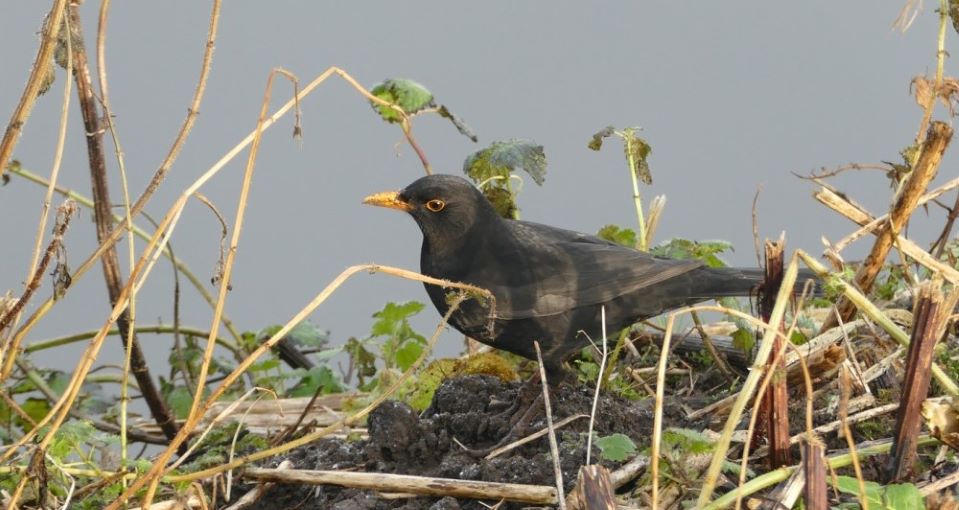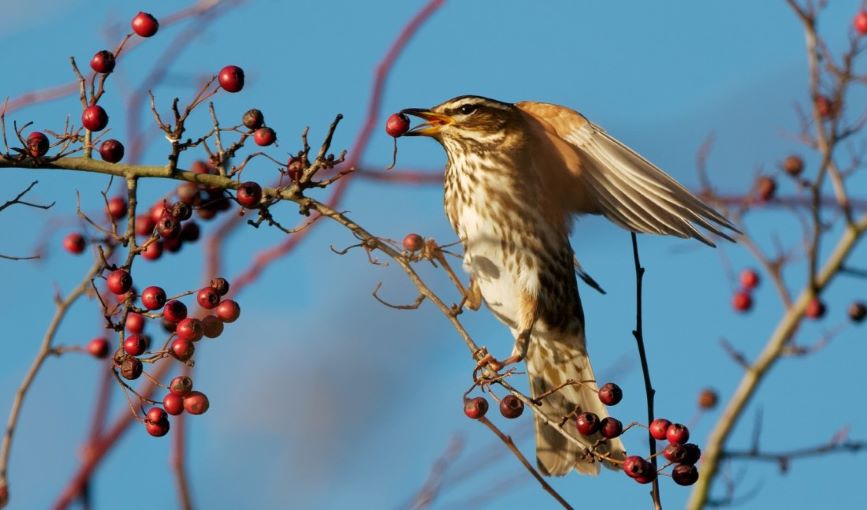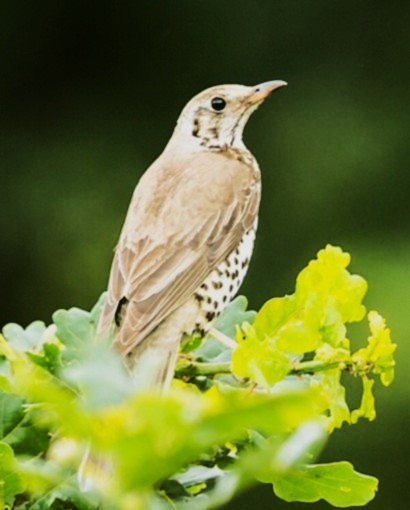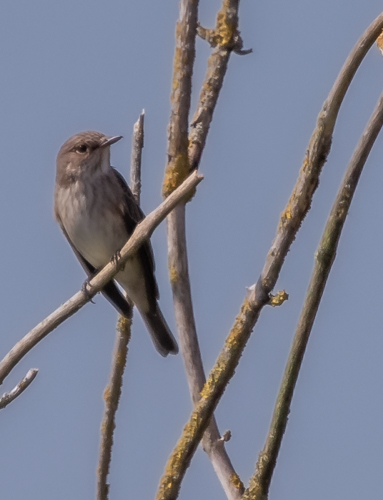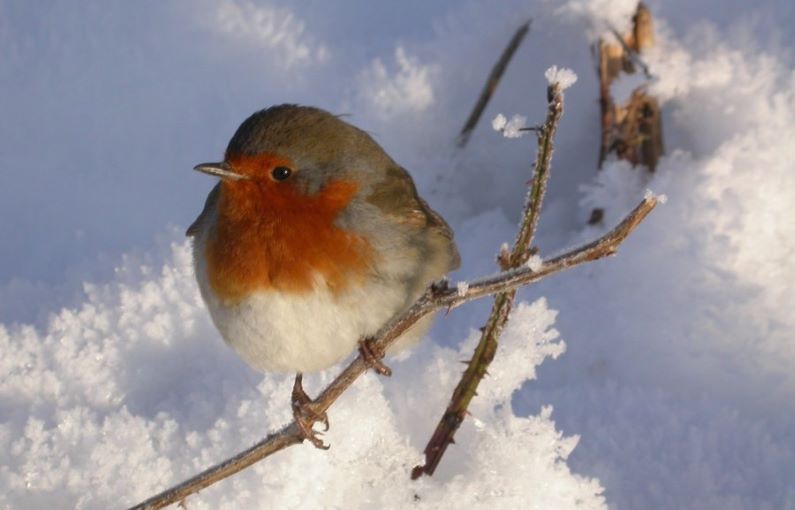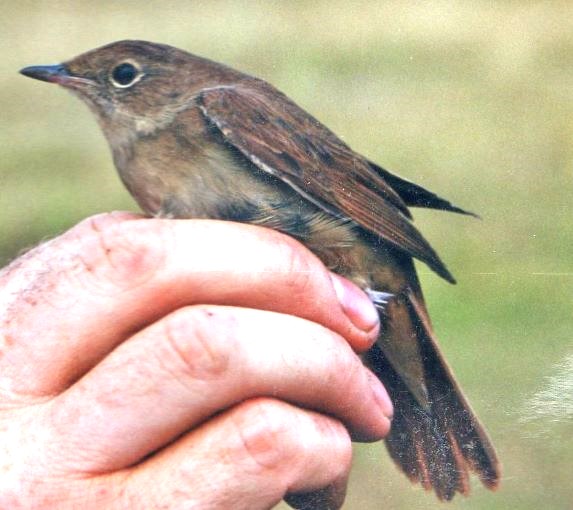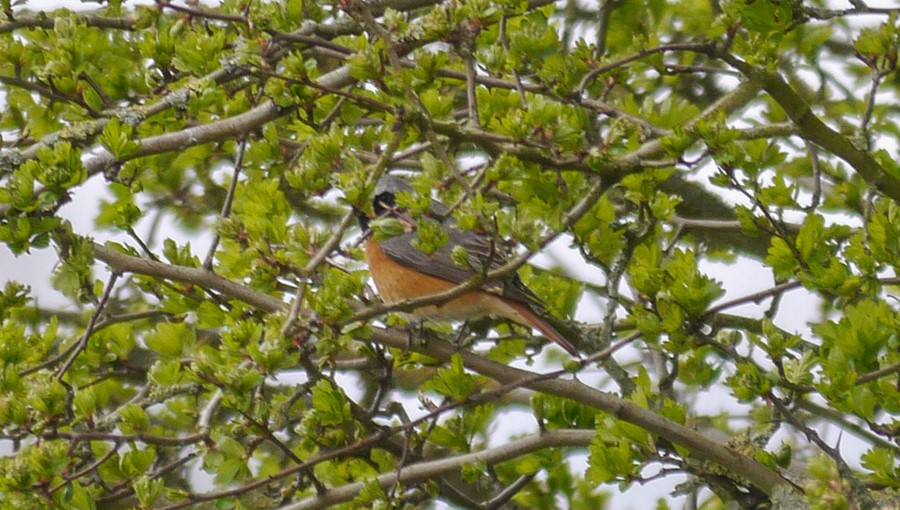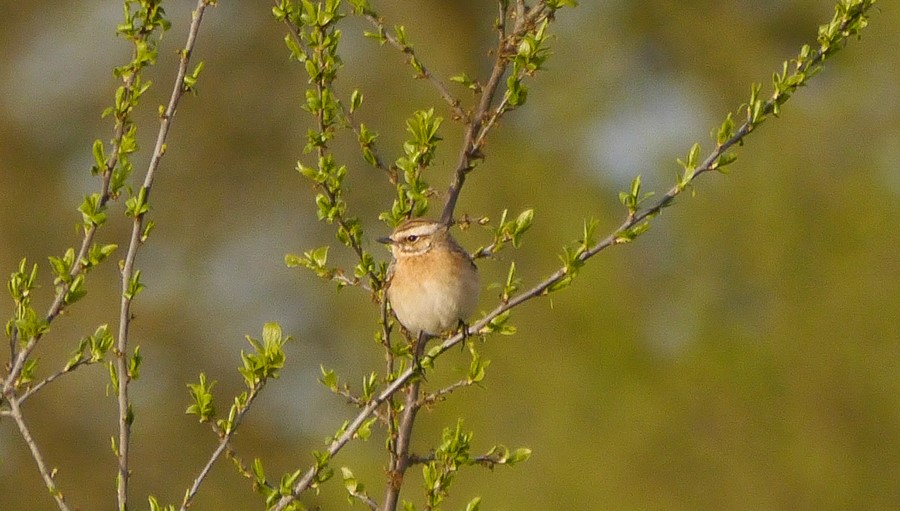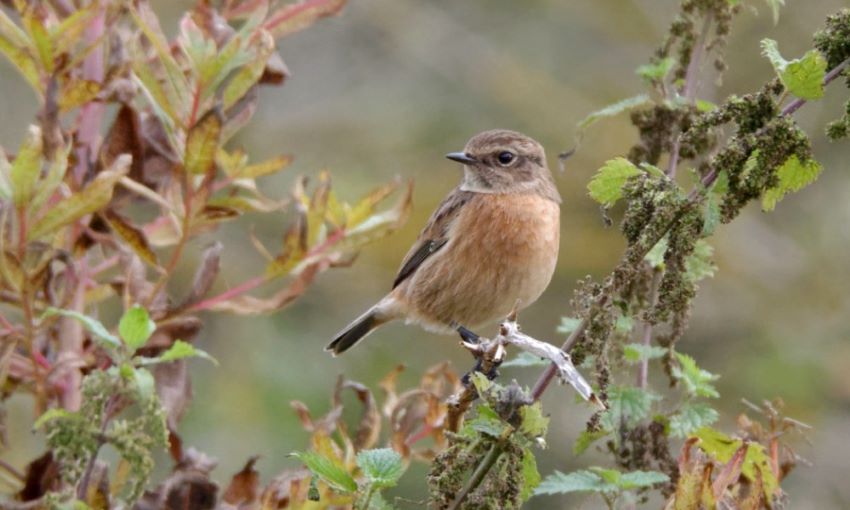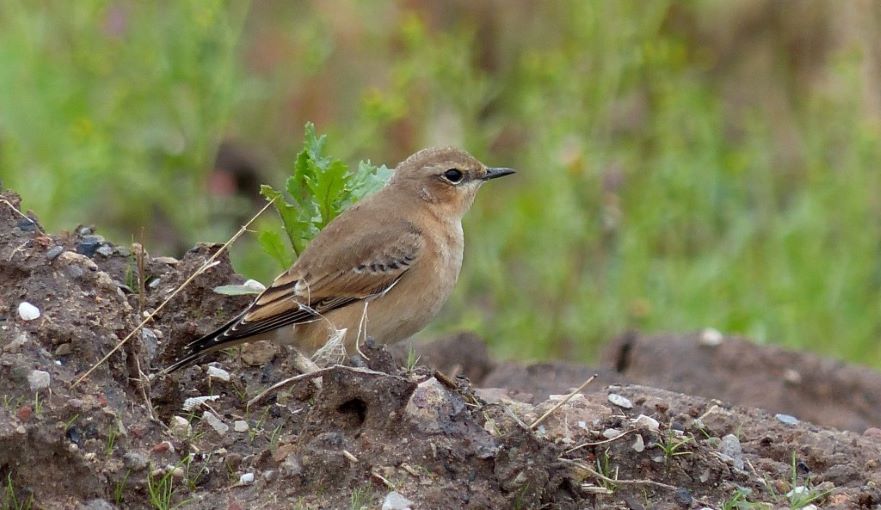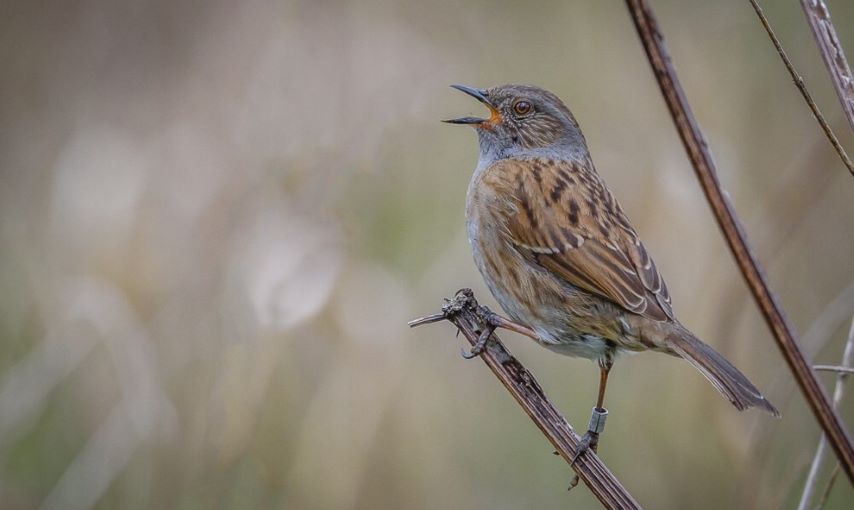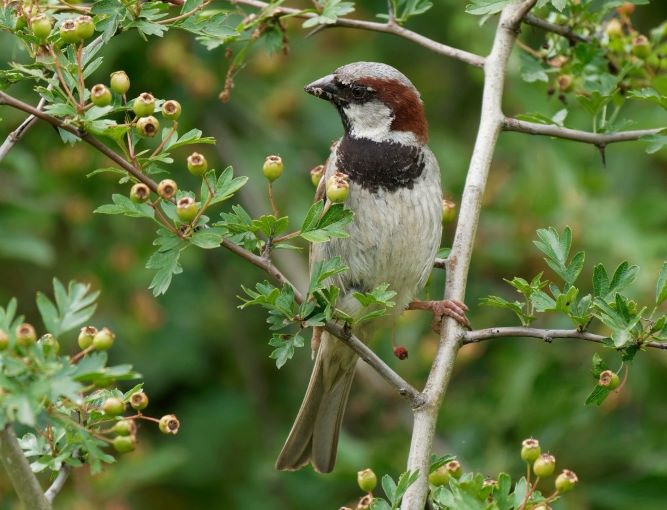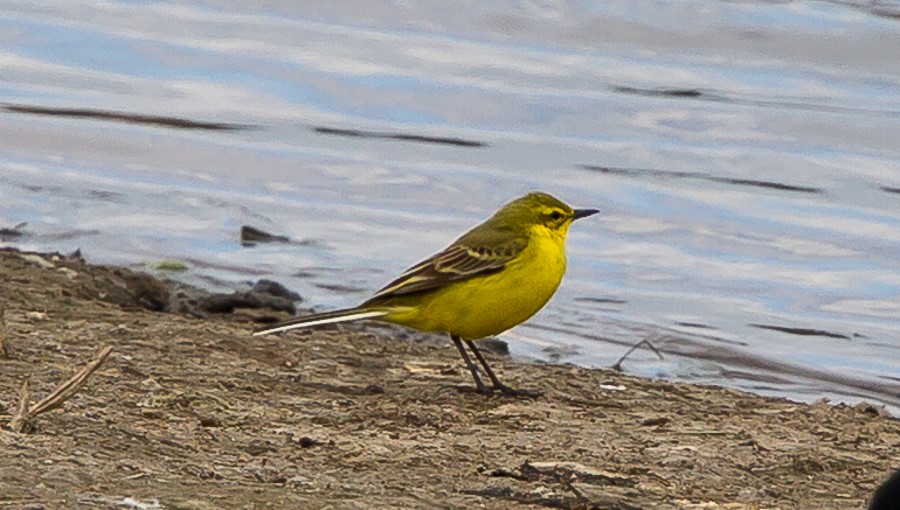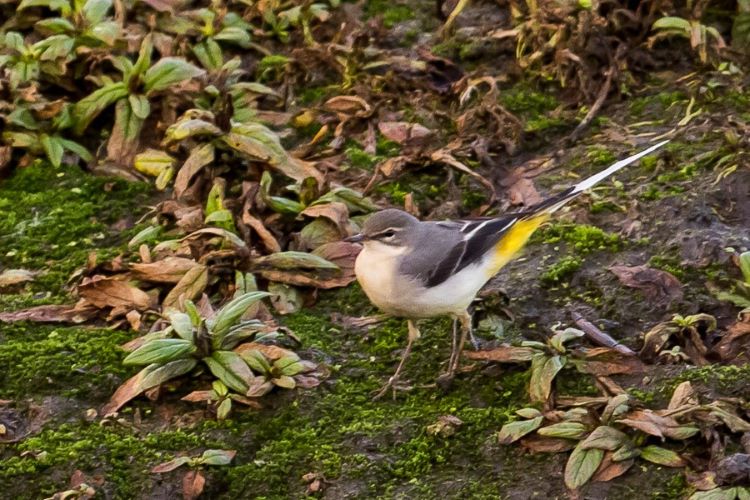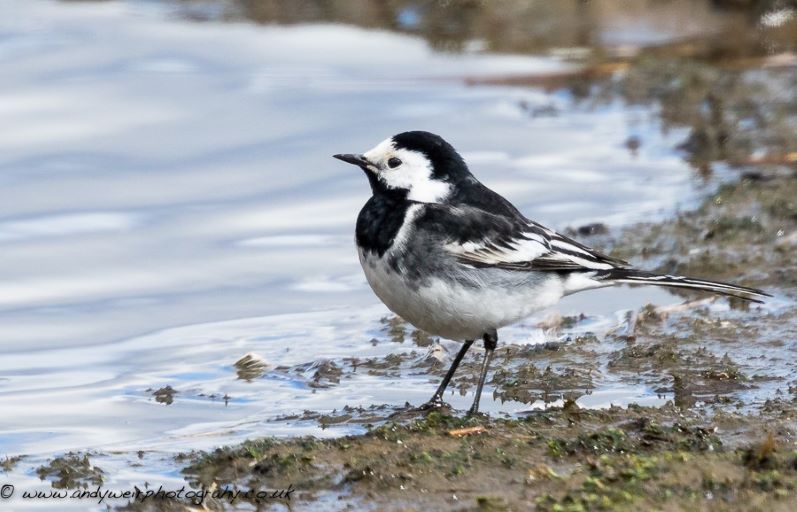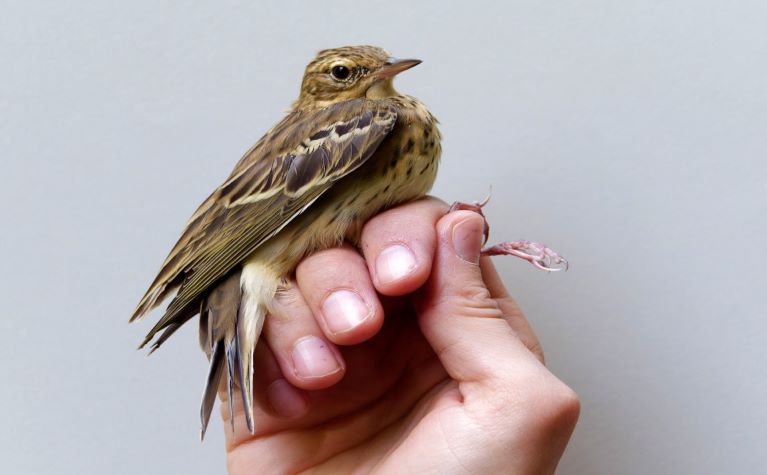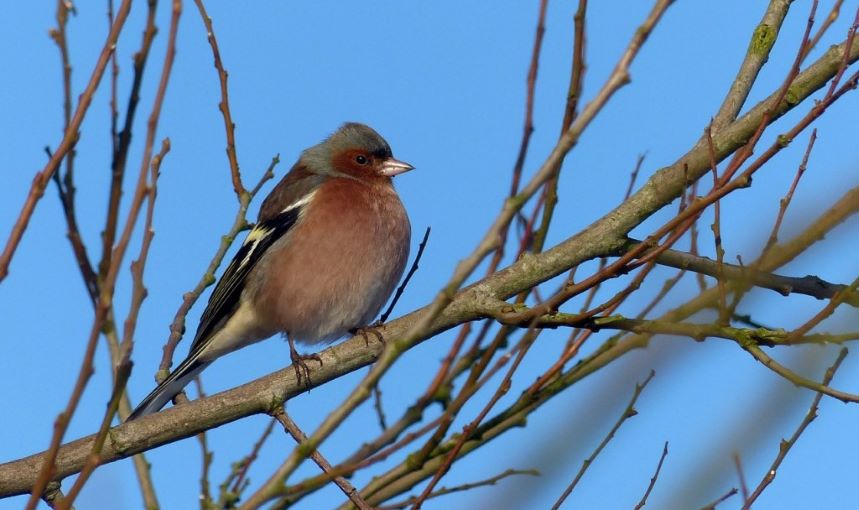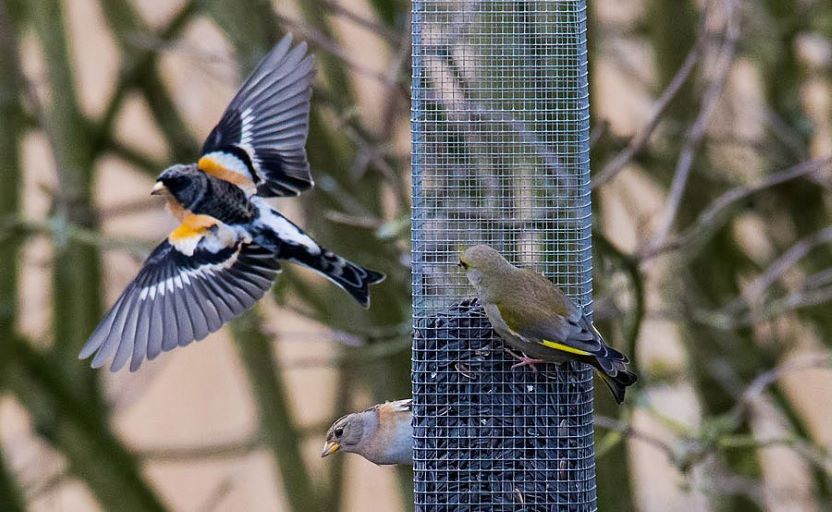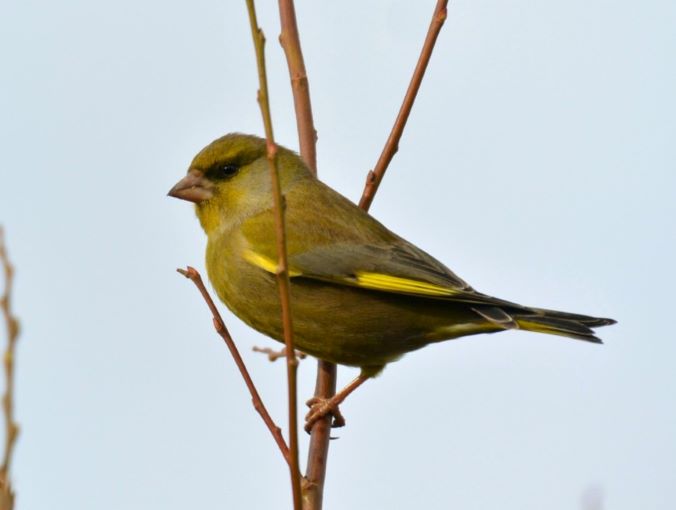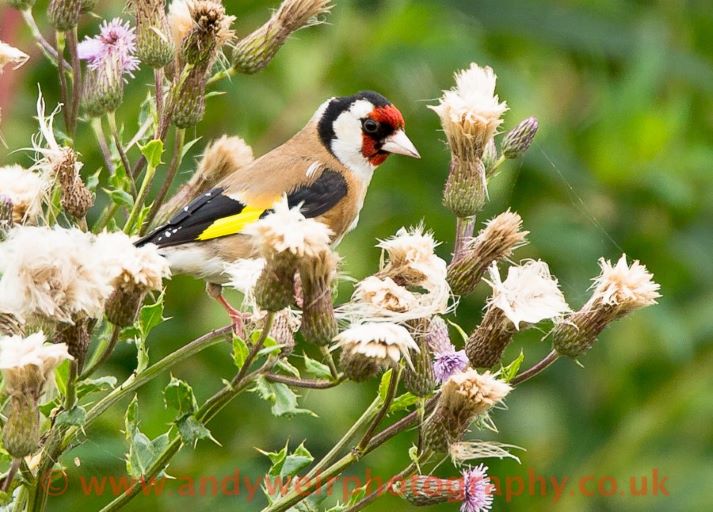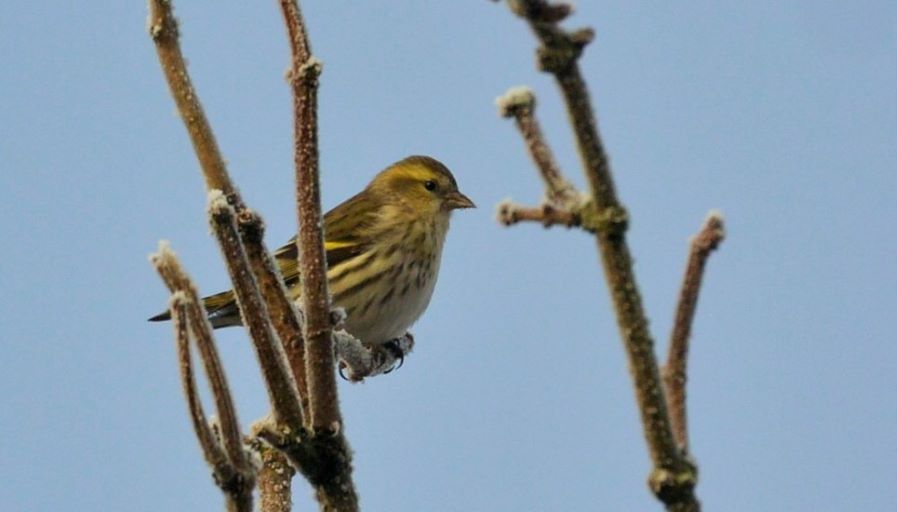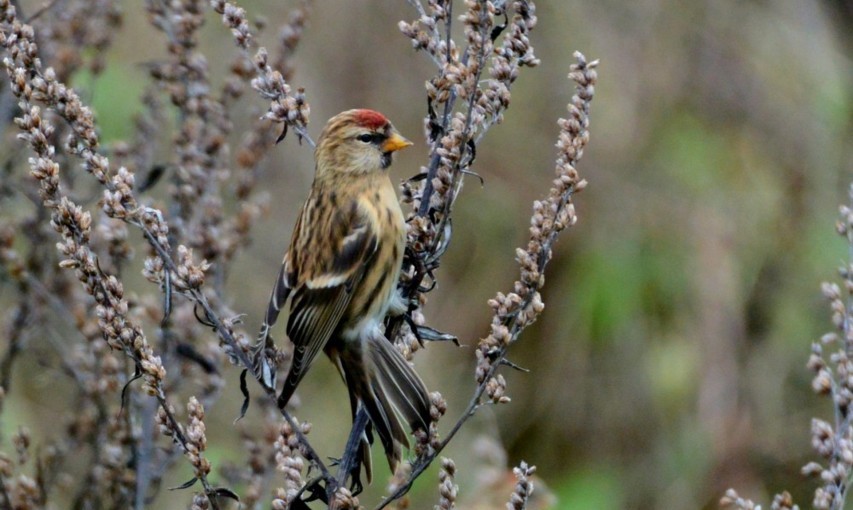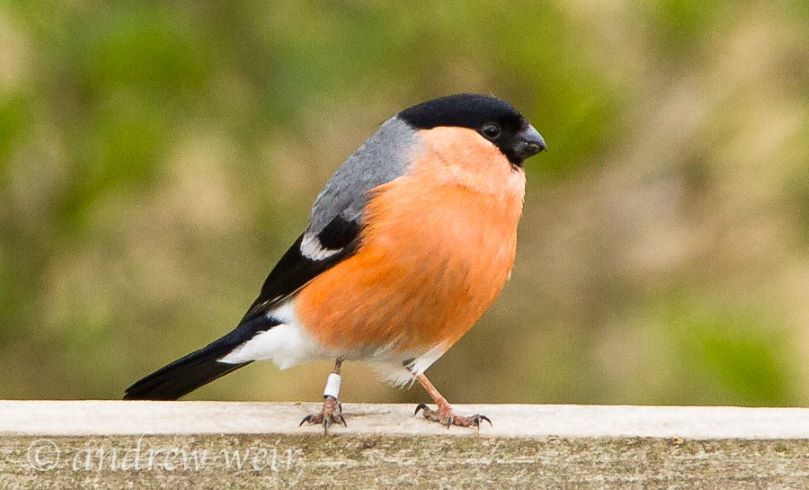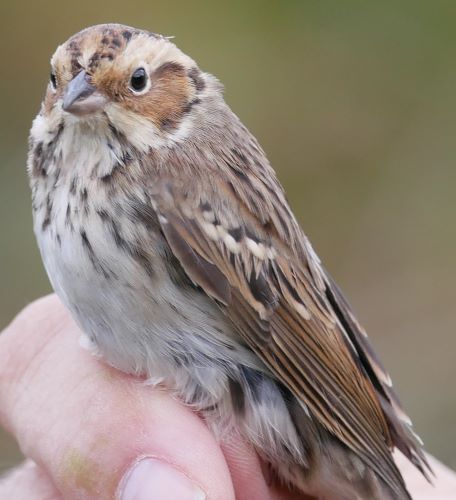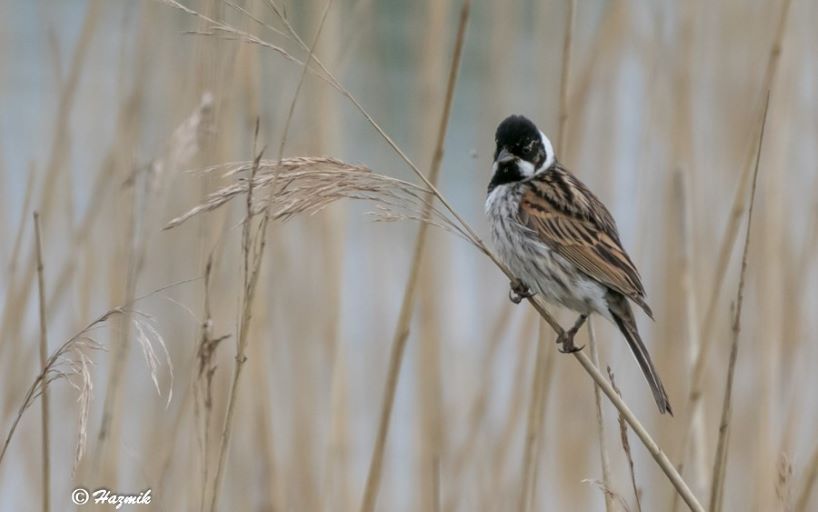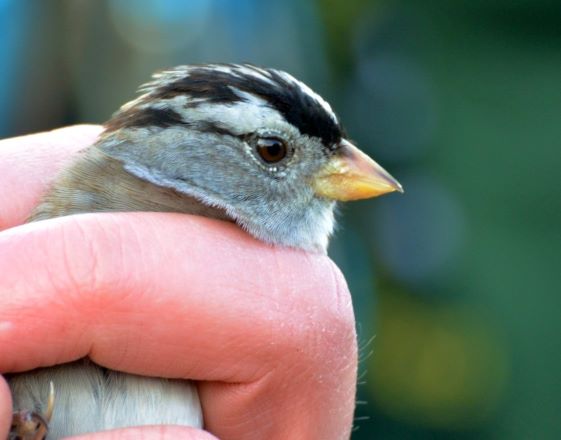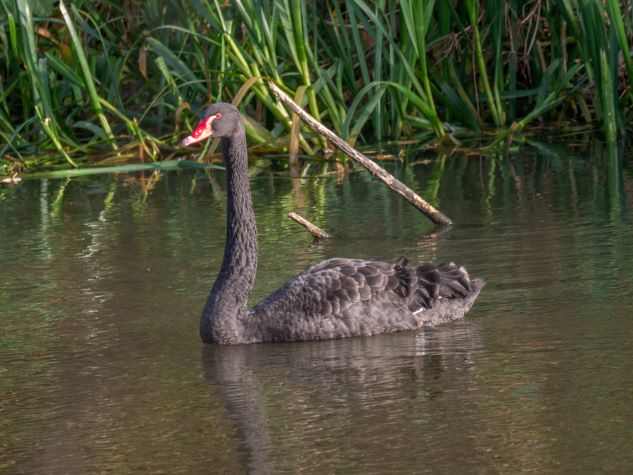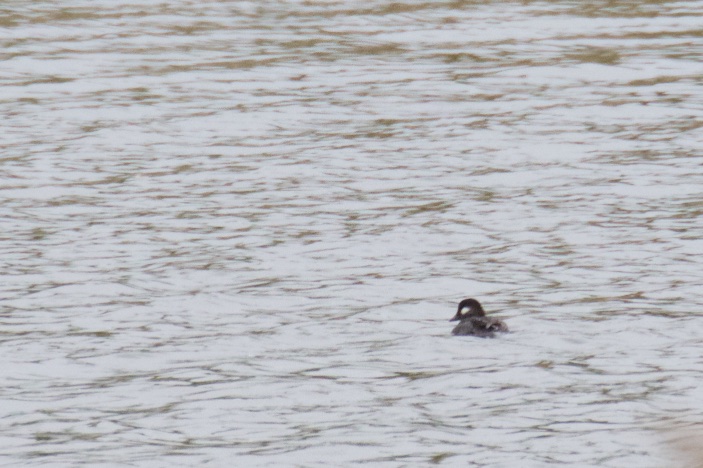Bird Species At Woolston Eyes
The bird species recorded at Woolston Eyes in the BOU order and their photographs, if available, follow with a summary of the status on the Reserve. Only those scarce and rare birds accepted by the county and national rarity committees have been included in the numbers. The list includes some historic records were known and the species considered to be escapes follow the accepted records under an ‘E’ prefix reference.
David Waterhouse
001 Mute Swan (Cygnus olor)
Status: BoCC5 moved from amber to green-listed. Breeding bird, resident and found throughout the year.
002 Bewick's Swan (Cygnus columnbianus bewickii)
Status: BoCC5 moved from amber to red-listed. Rare vagrant visitor to Woolston, was recorded in most years in the 1980’s but it has been a long wait since 16/12/1995 for a repeat sighting with six flying over the Reserve on 20/11/2020.
Mark Battersby No.3 bed 26/01/2013
003 Whooper Swan (Cygnus cygnus)
Status: BoCC5 amber-listed, an infrequent winter visitor to Woolston but occurs annually.
Daniel Owen No.3 bed 23/01/2020
004 Tundra Bean Goose (Anser serrirostris)
Status BoCC5 amber-listed, a rare winter migrant to the Reserve, the first confirmed record was of a single bird which dropped onto No.3 bed lagoon with two Grey-lag Geese on 23rd January 2020 but only stayed for c.30 minutes before flying off south-easterly.
Andy Weir No.3 bed Vikki's Island in front of John Morgan Hide 22/03/2019
005 Pink Footed Goose (Anser brachyrhynchus)
Status: BoCC4 amber-listed species more often observed in large skeens flying over the Reserve but also an irregular visitor in winter months.
006 White-fronted Goose (Anser albifrons)
Status: BoCC5 red-listed, a rare winter visitor to Woolston. The last records of White-Fronted Goose on the reserve was 27/11/1993 and prior to that 1987.
Dave Bowman No3 Bed 28/04/2016
007 Greylag Goose (Anser anser)
Status: BoCC5 amber-listed, a breeding species on the Reserve and seen in each month of the year with numbers increasing although ours are undoubtedly of feral origin. The wild, migratory population, which occurs in the north of the UK, is currently amber-listed.
Alan Debenham No3 Bed 06/05/2012
008 Canada Goose (Branta canadensis)
Status: Breeds on the reserve and present all year with highest numbers present from autumn to year end.
David Bowman No3 bed 21/01/2017
009 Barnacle Goose (Branta leucopsis)
Status: BoCC5 amber-listed, a rare visitor to the Reserve. The 16 recent years sightings probably relate to feral birds, the last, a single bird flying south with a flock of Canada Geese was on 1st June 2020.
Daniel Owen No.3 bed 13/04/2021
010 Brent Goose (Branta bernicla)
Status: BoCC5 amber-listed, a rare vagrant visitor to the Eyes. The records of Brent Goose were 1986, 1988,1993 and the last, a dark-bellied sub-species bernicla was on 13th April 2021.
David Spencer No3 Bed 06/04/2014
011 Egyptian Goose (Alopochen aegyptiaca)
Status: A rare visitor to Woolston Eyes a pair flying south-east over No.3 bed on 15th December 2020 was the last record and the fifth year since 2014 that this species has appeared at Woolston.
012 Ruddy Shelduck (Tadorna ferruginea)
Status: Rare visitor to the Reserve records from 1978, 1985 and the last record on the reserve on 24/03/1995 are all considered to be of feral birds.
Andy Weir No3 Bed 22/03/2019
013 Shelduck (Tadorna tadorna)
Status: BoCC5 amber-listed. Breeds on or nearby the Reserve as broods are noted but nest sites have never been reported. Common until autumn when numbers fall sharply.
Brian Burnett No3 Bed10/11/2013
014 Mandarin Duck (Aix galericulata)
Status: Mandarin was an Irregular visitor to the Reserve with records in 2013, 2014 and 2016 before the first breeding success in 2020 was confirmed since when it has been recorded annually in increasing numbers.
David Spencer adult male & female from No. bed 24/11/2015
015 Wigeon (Anas penelope)
Status: BoCC5 amber-listed, Wigeon are predominately autumn/winter visitors to Woolston with small numbers present most commonly from September to March.
Andy Weir male and female pair from No3 Bed 04/05/2015
016 Gadwall (Anas strepera)
Status: A BoCC5 amber-listed species, Woolston numbers are seen throughout the year but are noted to build from June to November.
David Bowman an adult pair from No3 Bed 07/02/2015
017 Teal (Anas crecca)
Status: BoCC5 amber-listed this small duck is very abundant at Woolston in the winter periods but less so in the summer months.
Andy Weir male from No.3 Bed on 30/11/2016
018 Green-winged Teal (Anas crecca carolinensis)
Status: Rare winter visitor. The last records were from 29th November 2016 when one was seen among hundreds of Common Teal by many observers until 16th December. This was only the third record of this American sub-species at Woolston the other previous sightings being on 11th April 1987 and 5th February 1984.
Andy Weir male and female pair from No3 Bed 01/03/2014
019 Mallard (Anas platyrhynchos)
Status: Despite its familiarity, Mallard is a BoCC5 amber-listed species but is common throughout the Reserve all year round.
Brian Burnett male and female from No3 Bed February 2011
020 Pintail (Anas acuta)
Status: A BoCC5 amber-listed duck predominately an autumn/winter visitor, not as common as it once was but occurs irregularly annually in small numbers.
David Spencer male from No3 Bed 17th May 2019
021 Garganey (Anas querquedula)
Status: BoCC5 amber-listed species a scare passage and summer visitor to Woolston but generally recorded annually and in increasing numbers in recent years.
Andy Weir a male from No3 Bed 31-05-2018
022 Shoveler (Anas clypeata)
Status: BoCC5 amber-listed species found on the Reserve in numbers in the winter periods but less so in the summer months although small numbers can be seen.
Brian Burnett a pair from No3 bed 19th April 2014
023 Red-crested Pochard (Netta rufina)
Status: Scare vagrant but recorded in 2013, 2014, 2016, 2018 and the last record of two drakes in eclipse plumage on No.3 bed on 9th September 2019.
Roger Riley a male from No3 Bed 18/11/2014
024 Pochard (Aythya ferina)
Status: A BoCC5 red-listed species. Woolston holds good numbers in the early part of the year which reduce during the breeding season but recorded in all months.
Alan Patterson a male on No3 Bed 21/04/2011
025 Ring-necked Duck (Aythya collaris)
Status: Rare winter vagrant. The last records on the reserve were 21st April 2011 and prior to that 1994.
Daniel Owen Ferruginous Duck No.3 bed 30/04/2022
026 Ferruginus Duck (Aythya nyroca)
Status: Rare vagrant to Woolston. The last records of this species at Woolston were a female among Tufted Duck and Pochard on 30th April 2022, in 2007 and 2000 with five previous sightings back to 1984.
Chris Monks male and female No.3 bed
027 Tufted Duck (Aythya fuligula)
Status: BoCC5 green-listed, is abundant at Woolston in the winter periods less, numerous in the breeding season but present all year.
David Spencer Scaup female No.3 bed 18/02/2019
028 Scaup (Aythya marila)
Status: BoCC5 red-listed is a rare winter visitor. The last records of Scaup on the Reserve are three in 2021, a first winter female present from 26th January to 4th April and two found on a WeBS count on 13th March. A single female was on Woolston Weir from 18th to 20th February 2019 and three from 2012, all of single birds, at Woolston Weir Pool on 29th October and on No3 Bed on 13th November and 23rd December.
Douglas Buchanan female from No3 Bed 25/02/2013
029 Long-tailed Duck (Clangula hyemalis)
Status: BoCC5 red-listed, species is a rare winter vagrant to the Reserve. The last records on the reserve go back to 2013 when a female was found on No.3 Bed on 25th February, the first since February 1988. Prior to that there had been sightings of females in 1981 and 1979.
David Spencer male on River Mersey from Woolston Weir 9th April 2018
030 Common Scoter (Melanitta nigra)
Status: BoCC5 red-listed species is a rare winter visitor to the Reserve. The last records of Scoter was a drake flying west over No.3 bed on 18th November 2021, a female at Woolston Weir on 24th March 2019, a drake found by Woolston Weir on 9th April 2018 and one on the Ship Canal on 2nd December 2017. These near annual records were the first at Woolston since November 1996.
Andy Weir male & female from Woolston Weir Pool 26/01/2013
031 Goldeneye (Bucephala clangula)
Status: A BoCC5 moved from amber to red-listed species but a regular winter visitor especially favours Woolston Weir pool and the Ship Canal.
032 Smew (Mergellus albellus)
Status: BoCC5 moved from amber to red-listed, Smew are rare winter vagrants to Woolston. The last sighting on the reserve was 20/02/2003 and on nine occasions prior to that back to 1984.
033 Red-breasted Merganser (Mergus sator)
Status: BoCC5 moved from green to amber-listed and an infrequent winter visitor to Woolston with the adjacent Ship Canal and Weir basin preferred locations. The last reserve record was 11/10/2003.
David Bowman female on No3 bed 22/08/2019
034 Goosander (Mergus merganser0
Status: BoCC5 green-listed but an irregular annual winter visitor on the Reserve, more likely to be found on the canal or adjacent River Mersey. Has bred.
Andy Weir male on No3 Bed 10t/07/2017
035 Ruddy Duck (Oxyura jamaicensis)
Status: Rare as a result of the International culling program but individuals have still been reported over recent years. There were single females recorded in 2018, and 2019 and a surprising adult male arrived on 7th June 2022, it reappeared on 11th August but was not seen again.
036 Quail (Coturnix coturnix)
Status: BoCC5 amber-listed and a rare Woolston visitor but has been noted by call on fly over migration and is recorded on passage in surrounding arable farmland. The last reports were on 16/09/1986 and 1999 when breeding was confirmed.
037 Red-legged Partridge (Alectoris rufa)
Status: Historically rare and still scarce as there are only 14 records for the Reserve to date despite breeding populations on adjacent arable farmland to the north east. However the species has been recorded in six of the last nine years with the last, a single in late April 2021.
Grey Partridge No.3 bed 20/09/2019 Daniel Owen
038 Grey Partridge (Perdix perdix)
Status: BoCC5 red-listed species and now an irregular visitor to the Reserve, particularly on the eastern side where breeding populations exist on adjacent arable farmland. The number of records since the first blank year in 2016 have been, three in 2018 with a possibility of breeding on No.3 bed, four in 2019 but only single birds in 2020, 2021 and 2022.
Andy Weir male from No3 Bed 06/07/2014
039 Pheasant (Phasianus colchicus)
Status: Common sighting on and around the Reserve.
040 Red-throated Diver (Gavia stellata)
Status: BoCC5 green-listed, a rare passage and winter visitor probably best sought on the adjacent Ship Canal and Weir basin. The last sighting was of one flying west along the Ship Canal on the unusual date of 16th May 2014 prior sightings were 1995 and 1978.
041 Fulmar (Fulmarus glacialis)
Status: BoCC5 amber-listed, rare storm blown vagrant. The last and only record of Fulmar was 15/05/1988.
042 Storm Petrel (Hydrobates pelagicus)
Status: BoCC5 amber-listed, a rare storm blown vagrant. The only reported sighting of this species was on 14/09/1980.
043 Leach's Storm Petrel (Oceanodroma leucorhoa)
Status: BoCC5 moved from amber to red-listed, a very rare storm blown vagrant. The only record at Woolston dates back to 30/09/1978.
044 Gannet (Morus bassanus)
Status: Historic record. One was seen over the deposit grounds and Ship Canal on 25/09/1954 during a spell of high winds.
David Bowman from Ship Canal 18/05/2019
045 Cormorant (Phalacrocorax carbo)
Status: BoCC5 green-listed, a common bird on the Reserve and surrounding habitat and large numbers overflying.
046 Shag (Phalacrocorax aristotelis)
Status: BoCC5 red-listed, a rare vagrant visitor for the Reserve. The last report of Shag on the reserve was on 2002 with three previous sightings in 2001, 2000 and 1996.
Bittern N0.3 bed 2021 David Spencer
047 Bittern (Botaurus stellaris)
Status: BoCC5 amber-listed as a result of concerted conservation efforts nationally is a scarce winter visitor. The potential for breeding at Woolston remains with five records in 2021 of single birds four on No.3 bed and one on No.1 bed, a single record on No.3 bed in April 2020, and February 2019, five records in 2016 split between No1 and No3 beds in February, August and December and a single sighting in 2015 in May on No.3 bed with prior year sightings in 2012, 2011 and 2004 this century.
048 Night Heron (Nycticorax nycticorax)
Status: rare vagrant. The only recorded sighting of Night Heron was on 26/05/1987.
David Spencer No.3 Bed 28th April 2016
049 Little Egret (Egretta garzetta)
Status: BoCC5 green-listed, they remain an irregular visitor to the Eyes usually of single birds and generally short staying although reported annually and generally throughout the year.
Andy Weir No.3 bed 16/08/2015
050 Great White Egret (Ardea alba)
Status: BoCC5 not assessed previously, amber-listed. Scarce visitor with the first record in 2006 but seen annually since 2014. The records over recent years have been; five in 2022, a single in 2021, four in 2020, six in 2019 and three reports in 2018. The majority of the sightings have been reported over the period of August, September and October.
051 Cattle Egret (Bubulcus ibis)
Status: BoCC5 not assessed previously amber-listed. The first record for Woolston Eyes was a pair flying east to west across the north bank of No3 bed on 06/10/2020. Although the birds did not land Cattle Egret have been increasing in numbers and have been expected at Woolston for a while.
David Bowman on No.3 Bed 29/04/2018
052 Grey Heron (Ardea cinerea)
Status: BoCC5 green-listed, a resident non breeding bird on the Reserve but found throughout the year with peak counts in the autumn.
Dave Bowman No.3 bed 06/02/2022
053 Glossy Ibis (Plegodis falcinellus)
Status: First recorded in 2021 when an individual flew steadily west across No.3 bed on 25th November, but ten weeks later on 6th February 2022 two were present on No.3 bed moving off and on frequently until 15th February. The last sighting was made of two birds on 23rd April.
054 Spoonbill (Platalea leucorodia)
Status: BoCC5 amber-listed species and a rare vagrant to Woolston. The last record of Spoonbill was on 28/05/2022 of a single individual. There have been two prior records, both of single birds, on 27/05/2010 and in 1987.
Roy Peacock No.3 bed 24/06/2013
055 Little Grebe (Tachybaptus ruficollis)
Status: BoCC5 green-listed, a resident and breeding bird found throughout the year on the Reserve though scarcer over the winter period.
Daniel Owen No.3 bed 28/05/2019
056 Great Crested Grebe (Podiceps cristatus)
Status: BoCC5 green-listed, breeds on the Reserve and resident throughout the year.
057 Red-necked Grebe (Podiceps grisegena)
Status: BoCC5 red-listed, a rare vagrant for the Reserve. The last sighting of Red-necked Grebe was on 05/03/2011, 2010, 1996 and twice in the early 1980’s.
058 Slavonian Grebe (Podiceps auritus)
Status: BoCC5 red-listed, a rare passage and winter vagrant for the Reserve. The last Slavonian Grebe sighting was on 04/05/2001 and previous to that in February 1986.
Steven Ellis No.3 bed 04/05/2013
059 Black-necked Grebe (Podiceps nigricollis)
Status: BoCC5 amber-listed. Black-necked Grebes are widespread but scarce summer visitors to the UK. Woolston Eyes is a nationally important breeding site for this species from March to August.
060 Honey Buzzard (Pernis apivorus)
Status: BoCC5 amber-listed species but a very rare vagrant for Woolston. This species was last recorded on the Reserve on 30/05/2003, 2001, 1999 and 1986.
David Spencer No.3 bed 25/04/2016
061 Red Kite (Milvus milvus)
Species: BoCC5 green-listed, a rare passage visitor for the Reserve generally as a flyover there have been sightings in each of the last ten years. Recently, two in 2022, two in 2021, five in 2020, one in 2019 and three in 2018.
Andy Weir No.3 bed 23/02/2018
062 Marsh Harrier (Circus aeruginosus)
Status: A BoCC5 amber-listed species is recorded annually often staying for long periods in the winter and early spring. The species is now breeding on the Reserve and sightings are recorded in every month.
Steve Dolan No.3 bed 31/10/2016
063 Hen Harrier (Circus cyaneus)
Status: BoCC5 red-listed species a rare, irregular winter visitor to the Reserve. Has been reported in six of the eight years from 2022 to 2015 with two in 2022 and one in the years 2020, 2019, 2018, 2016 and 2015.
064 Montagu's Harrier (Circus pygargus)
Status: BoCC5 moved from amber to red-listed and a very rare passage vagrant for Woolston. The last and only report of Montagu’s Harrier was on 13/06/1993.
065 Goshawk (Accipiter gentilis)
Status: BoCC5 green-listed, an infrequent visitor to Woolston but reports are occasionally submitted. The single bird observed on No.3 bed on 2nd December 2021 is the last recorded with the penultimate sighting from the Migration Watch on 2nd December 2017.
David Bowman No.3 bed 13/10/2014
066 Sparrowhawk (Accipiter nisus)
Status: BoCC5 moved from green to amber-listed, reported throughout the year and regularly breeding on the Reserve.
David Mercer No.3 bed 07/05/2016
067 Buzzard (Buteo buteo)
Status: BoCC5 green-listed, a resident breeding species seen throughout the year and very regularly reported with double figure counts.
068 Rough-legged Buzzard (Buteo lagopus)
Status: Rare vagrant. The last Rough-legged Buzzard sighting was on 18/03/2005 with the only other record dating back to 1984.
David Bowman No3 bed on 14/05/2016
069 Osprey (Pandion haliaetus)
Status: BoCC5 amber-listed species and a scarce passage vagrant, with only ten records on the Reserve by 2018 it has become annual over recent years with three sightings in 2022, 2021 and 2019, two in 2020 and a single record in 2018.
Roger Riley No3 Bed 29t/12/2014
070 Kestrel (Falco tinnunculus)
Status: BoCC5 amber-listed after Buzzard, the second most common raptor sighted throughout the year.
Keith Gallie No.3 bed 2021
071 Merlin (Falco columbarius)
Status: BoCC5 red-listed, was an infrequent winter visitor to Woolston but becoming quite regular with 46 records over the last five years , seven in 2018 of at least three birds, 20 records in 2019 over eight months of the year, of probably seven individuals, nine records in 2020 of at least four individuals from October to February and nine sightings in 2021 of at least five individuals again from October to February. Unusually there was only a single sighting in 2022 of a lone male in December.
Daniel Owen a 1st summer bird on No.3 bed 03/06/2019
072 Hobby (Falco subbuteo)
Status: BoCC5 green-listed, a regular summer migrant to the Reserve.
Dave Bowman No.2 bed 18/06/2015
073 Peregrine Falcon (Falco peregrinus)
Status: BoCC5 green-listed, a breeding species on the Reserve regularly seen with irregular visitors outside of the breeding season.
Andy Weir No.3 bed 21/04/2013
074 Water Rail (Rallus aquaticus)
Status: BoCC5 green-listed, best seen from the hides where this secretive bird is frequently sighted on the edges of exposed mud banks but it occurs across the Reserve throughout the year.
075 Spotted Crake (Porzana porzana)
Status: BoCC5 amber-listed, a rare passage visitor to the Reserve, last reported 15th July 2017 and 07/05/2005.
076 Corncrake (Crex crex)
Status: BoCC5 red-listed, a bird of the past for Woolston but night passage calls have been attributed on spring migration. The last record of Corncrake was on 18th September 2001.
Andy Weir No.3 bed 27/04/2014
077 Moorhen (Gallinula chloropus)
Status: BoCC5 moved from green to amber-listed, very common throughout the Reserve throughout the year.
Douglas Buchanan No.3 bed
078 Coot (Fulica atra)
Status: BoCC5 green-listed, very common on all the water areas across the Reserve throughout the year.
079 Common Crane (Grus grus)
Status BoCC5 Amber listed. Rare vagrant to the Reserve. Just three records for the Reserve in 20 four were flying west just north of No.2 bed on 16th April 2020. The two previous sightings were also of overflying birds in 2012 and 2005.
080 Black-winged Stilt (Himantopus himnatops)
Status a historic record. The first record for Cheshire was of a bird shot at Latchford in 1850’s.
David Bowman No.3 bed 17/05/2015
081 Avocet (Recurvirostra avosetta)
Status: BoCC5 amber-listed and continues as a rare visitor to Woolston. After early records in 1978 and 1984 the species is recently more consistent with records in 2013, 2015, 2016, 2018, and 2021.
Hazel Rothwell No.3 bed 05/07/2017
082 Oystercatcher (Haematopus ostralegus)
Status: BoCC5 amber-listed and historically a bird of spring and early summer passage it has been a breeding species for some years now and is also a frequent flyover, especially at the eastern end of the Reserve adjacent to arable land.
083 Golden Plover (Pluvialis apricaria)
Status: BoCC5 green-listed, irregular and increasingly scarce winter and passage record. Usually of flyover birds and often reported associated with the Lapwing flocks to the north and on the flooded fields to the south of Butchersfield. Average is three or four records per annum.
084 Grey Plover (Pluvialis squatarola)
Status: BoCC5 amber-listed, a rare passage visitor to the Reserve. The fifth sighting since 1990 was a full summer plumaged individual on 20th August 2022 briefly on No.3 bed. Previous records from this twenty-first century were from September 2016 and in 2005.
Daniel Owen No.4 bed 31/05/2022
085 White-tailed Lapwing (Vanellus leucurus)
Status: This national rarity was found on the new wetland area of No.4 bed on 31st May 2022 and was subsequently seen by numerous observers. It remained until nightfall but had moved on by the following morning. A first for Woolston and Cheshire, it had been widely reported from a variety of sites in England.
Roy Peacock 30/05/2013
086 Lapwing (Vanellus vanellus)
Status: BoCC5 red-listed, a breeding species, regular visitor and large flyover flock records.
Steven Ellis No.3 bed 29/05/2013
087 Little Ringed Plover (Charadrius dubius)
Status: BoCC5 green-listed, was an irregular summer visitor which bred in 2000, and has annually from 2012.
Douglas Buchanan
088 Ringed Plover (Chraradrius hiaticula)
Status: BoCC5 red-listed occurs on the Reserve in small numbers. The reduction of records of this species with no sightings in 2017, only a single in 2018 and another blank year in 2019 was disappointing only to be followed by five reports from two areas of the reserve in 2020 and six records, covering again two beds,, in 2021 and proof of breeding for the first time since 1993 in 2022.
David Spencer No.3 bed 16/04/2014
089 Whimbrel (Numenius phaeopus)
Status: BoCC5 red-listed, an occasional passage visitor to the Reserve. Generally recorded annually with three sightings in 2022, one in 2021 and 2020 and three in 2019 which followed a blank year in 2018.
David Bowman No.3 bed 17/08/2019
090 Curlew (Numenius arquata)
Status: BoCC5 red-listed. Most records relate to fly over birds with small numbers sighted on the Reserve, typically, in spring and autumn.
David Spencer No.3 bed 17/09/2017
091 Black-tailed Godwit (Limosa limosa)
Status: BoCC4 red-listed but a frequent passage visitor in small numbers. Generally seen March to September and occasionally longer with the peak towards September..
David Bowman No.3 bed 23/04/2019
092 Bar-tailed Godwit (Limosa lapponica)
Status: rare passage visitor. Once regular but just four records since 1991, in 2000’, 2005, 2011 and two records on 23rd April and 16th May 2019 on No.3 bed.
David Spencer No.3 bed 10/05/2016
093 Turnstone (Arenaria interpres)
Status: BoCC5 amber-listed rare migrant to the Reserve. Last recorded in 2016 in May and again in July, a summer plumaged bird. The record prior to these was back in 1991.
094 Knot (Calidris canutus)
Status: BoCC5 amber-listed, a rare winter vagrant. Last recorded on 28/th March 1987 with five previous year records prior to that back to 1979.
David Spencer No.3 bed 21/09/2015
095 Ruff (Philomachus pugnax)
Status: BoCC5 red-listed an irregular passage visitor. After an absence since 2005 Ruff had been recorded annually from 2012 to 2017 but they have not been as regular since. There were no records from 2018 or 2020, only one report of a Ruff in 2019 and 2021 but three sightings, of five birds in total, were reported in 2022.
096 Curlew Sandpiper (Calidris ferruginea)
Status: BoCC5 amber-listed, a rare passage visitor to Woolston. Last reported on 14th June 2001 and prior to that 11th September 1993.
Daniel Owen No.4 bed 28/04/2022
097 Temminck's Stint (Calidris temminckii)
Status: rare passage visitor. Only three records, the last by one accompanying a Dunlin on the new No.4 bed wetland on 28th April 2022 and two in the 1980’s, the last being on 22nd August 1989.
David Spencer No.3 bed 18/05/2015
098 Sanderling (Calidris alba)
Status: BoCC5 amber-listed, a rare winter and passage vagrant. The last record was one on the new No.4 bed Wetland on 14th May 2022 which followed three individuals which dropped into No.3 bed on 8th August 2019. Prior to these, an adult summer plumage bird was found on the scrape in front of the John Morgan hide on 18th May 2015 then we go way back to 1998 for the next record.
Andy Weir No.3 bed 07/05/2013
099 Dunlin (Calidris alpina)
Status: BoCC5 change from amber to red-listed an annual visitor to the Reserve in small numbers generally on spring and autumn passage.
100 Little Stint (Calidris minuta)
Status: BoCC5 green-listed, a rare passage visitor to the Reserve. One was recorded, seen briefly on No.4 bed, on 10th September 2022. The previous record goes back to 17th August 1998.
101 White-rumped Sandpiper (Calidris fuscicollis)
Status: very rare vagrant to the Woolston Eyes. The only sighting on record was on 31st July 984.
102 Buff-breasted Sandpiper (Tryngites subruficollis)
Status: rare vagrant to Woolston. The only record is of a bird which stayed from 1st August to 4th August 1984.
103 Pectoral Sandpiper (Calidris melanotos)
Status: rare autumn and winter visitor. Last recorded on 10th September 1994.
104 Wilson's Phalarope (Phalaropus tricolor)
Status: very rare vagrant to the Eyes. The only record is of a bird which stayed from 19th October to 4th November 1991.
David Spencer Woolston Weir 20/09/2023
105 Grey Phalarope (Phalaropus fulicarius)
Status: A scarce but regular visitor to Britain and a rare vagrant to the Reserve. This is the first record of the species which was found on Woolston Weir on the morning of 20th September 2023 but flew upstream on the River Mersey shortly after and was not relocated.
Roly Pitts No.3 bed 10/06/2016
106 Red-necked Phalarope (Phalaropus lobatus)
Status: BoCC5 red-listed, very rare vagrant to the Reserve. Last record was the pair that visited on 10th June 2016 for a day. There have been only two previous records of this species on the Reserve back in 1987 and 1985.
David Mercer No.3 bed 27/04/2016
107 Common Sandpiper (Tringa hypoleucos)
Status: BoCC5 amber-listed, a regular summer and passage visitor.
Andy Weir No.3 bed 12/09/2016
108 Green Sandpiper (Tringa ochropus)
Status: BoCC5 amber-listed, a regular summer and passage visitor to the Reserve and recently has become the most commonly recorded Sandpiper and has been sighted from March to December.
109 Spotted Redshank (Tringa erythropus)
Status: BoCC5 amber-listed, a rare visitor on autumn passage. Once regular in the early days of the Reserve only three sightings have been reported, the latest on 27th August 2014, 2010 and then 1992.
Brian Burnett N0.3 bed 11/05/2013
110 Greenshank (Tringa nebularia)
Status: BoCC5 amber-listed, an infrequent visitor but recorded annually generally in autumn passage.
David Spencer No.3 bed 22/04/2015
111 Wood Sandpiper (Tringa glareola)
Status: - BoCC5 amber-listed, an irregular summer and passage visitor. Has been recorded annually since 2015 with the exception of 2020 usually in both spring and autumn.
Andy Weir No.3 bed 21/04/2013
112 Redshank (Tringa totanus)
Status: BoCC5 amber-listed, a regular visitor in small numbers to the Reserve.
113 Jack Snipe (Lymnocryptes minimus)
Status: BoCC5 green-listed, present across the Reserve and regularly recorded, in small number of sightings, in the winter periods.
114 Woodcock (Scolopax rusticola)
Status: BoCC5 red-listed, regularly recorded in the winter periods, usually of single individuals given the elusive nature of this species.
Hazel Rothwell No.3 bed 21/08/2018
115 Snipe (Gallinago gallinago)
Status: BoCC5 amber-listed, a common visitor over the year outside the breeding season.
116 Artic Skua (Stercorarius parasiticus)
Status: BoCC5 red-listed, a rare vagrant to Woolston. The last record was on 17/10/1998.
117 Great Skua (Catharacta skua)
Status: BoCC5 amber-listed, a rare vagrant to the Reserve. The only sighting of this species was on 20th October 1984.
David Spencer No.3 bed Vikki's Island 16/05/2017
118 Little Tern (Sterna albifrons)
Status: BoCC5 amber-listed, a rare visitor to the Eyes. Last recorded 16th May 2017 and in 2015 and 2001.
119 Whiskered Tern (Chlidonias hybridus)
Status: exceptionally rare vagrant to the Reserve. The last sighting of this tern was of four birds on 19th May 2005 with 1983 being the only other record.
Daniel Owen No.3 bed 09/05/2019
120 Black Tern (Childonias niger)
Status: BoCC5 green-listed, an irregular, but near annual visitor, during passage. Generally in the spring, with just six autumn sightings on record.
121 White-winged Black Tern (Chlidonias leucopterus)
Status: very rare passage vagrant. The only report of this tern on the Reserve was on 13th July 1986.
Daniel Owen No.3 bed 15-04-2022
122 Sandwich Tern (Sterna sandvicensis)
Status: BoCC5 amber-listed, an infrequent migrant to Woolston. The last sighting of this tern on the Reserve was in 2022 when an adult dropped in to join two Black Terns also present on 15th April. There are five previous records, one in 2010, four in the 2000’s, two in the 90’s and three in the 80’s.
Hazel Rothwell No.3 bed 18/05/2017
123 Common Tern (Sterna hirundo)
Status: BoCC5 amber-listed, an infrequent but annual visitor to the Reserve on passage generally between April and August. Unlike plenty of other waters in the region the species has made no attempt to breed on the Reserve.
Andy Weir No.3 bed 26/05/2013
124 Artic Tern (Sterna paradisaea)
Status: BoCC5 amber-listed, an infrequent passage visitor to the Reserve but usually recorded annually, typically in April.
Daniel Owen No.3 bed 09/05/2019
125 Kittiwake (Rissa tridactyla)
Status: BoCC5 red-listed, was a scarce visitor to the Reserve but in recent years has appeared more frequently. The latest record was a single individual flying through on 12th April 2022 with two records in both 2021 and 2020 and four records in 2019. Prior to these consecutive years the previous reports were in 2017, 2016 and 2001.
Douglas Buchanan No.3 bed 24/05/2009
126 Black-headed Gull (Larus ridibundus)
Status: BoCC5 amber-listed, a very common visitor and large breeding population.
Daniel Gornall No.3 bed 15/03/2019
127 Little Gull (Larus minutus)
Status: BoCC5 green-listed, generally an annual passage visitor with most sightings on the Reserve in April-May.
128 Laughing Gull (Larus atriclla)
Status: a mega rare vagrant. The only reported sighting was a bird seen on the 21st November 1985 and again on 30th November.
Daniel Gornall No3 bed 20th March 2019
129 Mediterranean Gull (Larus melanocephalus)
Status: BoCC5 amber-listed, a regular passage visitor recorded annually and has attempted to breed.
Dave Bowman Canal 03/09/2013
130 Common Gull (Larus canus)
Status: BoCC5 amber-listed, a common passage and winter visitor in small numbers.
131 Ring-billed Gull (larus delawarensis)
Status: rare vagrant to Woolston. Recorded infrequently from 80’s and 90’s and three sightings in the 2000’s, the last on 1st February 2005.
Steven Ellis No.3 bed 25/03/2015
132 Lesser Black-backed Gull (Larus fuscus graellsi)
Status: BoCC5 amber-listed, a common flyover sighting with the numbers of birds visiting increasing, especially adults from local breeding colonies which predate our other water bird’s young.
David Bowman No.3 bed 17/04/2017
133 Herring Gull (Larus argentatus)
Status: BoCC5 red-listed, generally occur on the Reserve in small parties, pairs or individuals, higher counts are usual on the migration watches and other flyover sightings.
Daniel Owen No.3 bed 06/08/2022
134 Yellow-legged Gull (Larus michahellis)
Status a rare visitor to Woolston Eyes. Two records from 2022 were a third summer amongst Lesser Black-backed Gulls on No.4 bed on 17th May followed by a juvenile on No.3 bed, again associated with an arrival of fledged Lesser Black-backed Gulls from the nearby breeding colony on 6th August. There have been only four previous records between the years 1987 to 2000 when Rixton tip was operational.
Daniel Owen No.3 bed 28/10/2019
135 Iceland Gull (Larus glaucoides)
Status: BoCC5 amber-listed, a rare vagrant to Woolston Eyes but there was a single record of this species on 28th October 2019 of a single bird of the sub-species known as Kumlien’s Gull which flew west over No.3 bed. It was the first record of Iceland Gull since 1999, which was a regular in the 80’s and 90’s when Rixton Tip was operational. The record was also the first for the Reserve of the rarer sub-species Larus glaucoides kumlieni.
136 Glaucous Gull (Larus hyperboreus)
Status: BoCC5 amber-listed, rare winter vagrant to the Reserve. Was regularly seen when Rixton Tip was in operation in the 80’s and 90’s but only a single sighting since on 9th February 2008.
David Spencer No.3 bed 07/04/2014
137 Great Black-backed Gull (Larus marinus)
Status: BoCC5 amber-listed uncommon but increasingly regular visitor and noted flying over.
138 Feral Pigeon (Columba livia)
Status: common sighting on the Reserve fringes and noted flyovers.
Douglas Buchanan
139 Stock Dove (Columba oenas)
Status: BoCC5 amber-listed, a breeding species resident on all four beds and regularly reported.
David Bowman No.3 bed 30/01/2018
140 Wood Pigeon (Columba palumbus)
Status: BoCC5 green-listed, abundant bird throughout the Reserve. throughout the year.
141 Collard Dove (Streptopelia decaocto)
Status: BoCC5 green-listed, uncommon on the Reserve with fly-over sightings more numerous but common on the fringes along the canal track and Weir Pool in association with the adjacent urbanisation.
142 Turtle Dove (Streptopelia turtur)
Status: BoCC5 red-listed. A breeding species in the 80’s and 90’s and the species continued to be reported in the early 2000’s however with the decline of the UK population, Turtle Dove, would now be a rare visitor to the Eyes. The last record of Turtle Dove was in 2006.
143 Ring-necked Parakeet (Psittacula krameri)
Status: a rare vagrant to the Reserve. There were three records in 2022, a single individual on No.4 bed on 27th August and probably the same bird two days later at Woolston Weir. Then on No.1 bed three were seen flying over northwards on 22nd August. The only previous records are from 2004, 2003 and in 1983.
Dave Bowman No.3 bed
144 Cuckoo (Cuculus canarus)
Status: BoCC5 red-listed, a summer visitor in low numbers, over recent years the average has been of four or five sightings per annum between late April and July.
145 Barn Owl (Tyto alba)
Status: BoCC5 green-listed, generally infrequently disturbed on the Reserve from roosts, though the species has bred, and occasional sightings at dawn and dusk.
146 Little Owl (Athene noctua)
Status: a rare visitor to the Eyes. The last sighting on the Reserve was on 15th April 2011.
147 Tawny Owl (Strix aluco)
Status: BoCC5 amber-listed, under-reported due to its nocturnal activity nonetheless breeds on the Reserve and is reported in small numbers annually.
Douglas Buchanan No.3 bed 2003
148 Long-eared Owl (Asio otus)
Status: BoCC5 green-listed, very secretive, this species is occasionally found roosting on the Reserve. The last few records were of a single bird on No.2 bed in spring 2020 and two reports in 2019, in February on No.1 bed and in December on No.2 bed and prior to that in 2015. A former breeding species on the Reserve sadly there have been no confirmed breeding records this century, but a pair successfully bred at a site just south of the Reserve in 2010.
149 Short-eared Owl (Asio flammeus)
Status: BoCC5 amber-listed, another rare winter visitor to the Eyes. The last recent reports were of two birds on No1 bed one in January and one in September in 2016 and a single bird was seen from Butchersfield in October 2015 during a Migration Watch. Previous reports this century were from 2011, 2002 and 2001.
150 Nightjar (Caprimulgus europaeus)
Status: BoCC5 amber-listed, a rare vagrant to the Eyes. The last reported sightings were on 24th June 1995 and 26th May 1989.
151 Chimney Swift (Chaetura pelagica)
Status: A very rare vagrant to the Reserve. Only a single record for the Reserve on 5th November 2005.
David Bowman No.3 bed 19/06/2018
152 Swift (Apus apus)
Status: BoCC5 moved from amber to red-listed, a common summer visitor to the Eyes, feeding and passing through.
Glen Ellis No.3 bed 19/08/2014
153 Kingfisher (Alcedo atthis)
Status: BoCC5 moved from amber to green-listed, a resident and breeding species present all year and regularly recorded.
154 Bee-eater (Merops apiaster)
Status: rare vagrant to the Reserve. The only sighting was of a bird first seen on 5th May 1995 which was picked up exhausted a few days later but later released and last seen on 1st June 1995.
155 Wryneck (Jynx torquilla)
Status a very rare visitor to the Reserve. with only one record on 25th April 2001.
156 Green Woodpecker (Picus viridis)
Status: BoCC5 green-listed, a resident species in and around the vicinity of the Reserve and was regularly reported. The frequency however has reduced which perhaps signifies a decline in the surrounding breeding population. There were no records in 2022, the first year with no sightings or “yaffles” since 1985.
Hazel Rothwell No.3 bed 19/12/2018
157 Great Spotted Woodpecker (Dendrocopos major)
Status: Bocc5 green-listed, common resident and breeding species on the Reserve found throughout the year.
158 Lesser Spotted Woodpecker
Denrocopos minor
Status: BoCC4 red-listed, an irregular visitor recorded evry few years. Recorded in 2016, 2015 and 2011.
2018 Records - A disappointing year for this species with only one sighting of a bird in trees by the gates to No.2 bed in spring; the exact date is unknown. One was also heard calling on the South bank of No.3 bed on 31st March. The lack of sightings may indicate the male bird, first reported on No.3 bed in November 2011 and regularly seen in the last three years, has died
No Woolston image available
159 Golden Oriole (Oriolus oriolus)
Status: Bocc4 red-listed, a very rare passage vagrant to the Eyes. The last reported sighting was on 18th April 2003 and previous to that in May 1986.
160 Great Grey Shrike (Lanius excubitor)
Status: a rare passage visitor to the Reserve. The last reported sightings were on No1 bed on 1st March 2004 and previously in 1998 and 1982.
Roy Peacock No.3 bed 30/05/2013
161 Magpie (Pica pica)
Status: BoCC5 green-listed, a very common resident bird on and around the Reserve throughout the year.
Andy Weir No.3 bed 13/01/2013
162 Jay (Garrulus glandarius)
Status: BoCC5 green-listed, a common resident and breeding species on all four Beds.
David Bowman Bollin Point 15/02/2018
163 Jackdaw (Corvus monedula)
Status: BoCC5 green-listed, not a common bird on the Reserve, except the eastern end were parties forage, but observed as fly-over records on all four Beds.
David Bowman Butchersfield 12/02/2018
164 Rook (Corvus frugilegus)
Corvus frugilegus
Status: BoCC5 moved from green to amber-listed, not a common bird on the Reserve with most sightings of birds flying over. As with the Carrion Crow, movement to and from the feeding grounds on the mosses to the north of the eastern end of the Reserve is the best place to locate them.
Chris Monks No.3 bed 21/04/2014
165 Carrion Crow (Corvus corone)
Status: BoCC4 green-listed, a common bird on the Reserve which breeds in small numbers on all the four Beds.
166 Hooded Crow (Corvus cornix)
Status: BoCC5 green-listed, a very rare vagrant to Woolston. The last sighting was on 13th January 1980.
Keith Gallie No.3 bed 09/11/2017
167 Raven (Corvus corax)
Status: BoCC5 green-listed, almost all records relate to the regular fly-over sightings which are quite numerous throughout the year and mostly of singles or pairs.
Keith Gallie No.3 bed 03/01/2017
168 Goldcrest (Regulus regulus)
Status: BoCC5 green-listed, largely a passage visitor but breeds locally and occasionally over winters on the Reserve. Peak counts occur in the autumn.
169 Firecrest (Regulus ignicapilla)
Status: BoCC5 green-listed, an irregular passage vagrant recorded almost annually having been reported in nine of the last 12 years, only missing in 2011, 2013, 2020 and 2021.
Dave Bowman No.4 bed 22/11/2022
170 Penduline Tit (Remiz pendulinus)
Status: Another first record for Woolston on 12th November 2022 when a first-winter Penduline Tit was caught and ringed in phragmites on No.3 bed and was probably the same one which had been seen at Pennington Flash earlier in the month. The bird was subsequently relocated on the new No.4 bed wetland on 22nd November and was last reported in the same location the next day.
David Bowman No.3 bed 25/01/2019
171 Blue Tit (Parus caeruleus)
Status: BoCC5 green-listed, resident and breeding species throughout the Reserve.
Dave Bowman No.3 bed 20/11/2019
172 Great Tit (Parus major)
Status: BoCC5 green-listed, another common breeding resident on all four Beds throughout the year.
Andrew Weir No.3 bed 29/11/2019
173 Coal Tit (Parus ater)
Status: BoCC5 green-listed, the least common of the tits to be encountered it is regularly reported particularly from the eastern end of the Reserve and Butchersfield where it is suspected to breed. Uses the various bird feeders and crops in the winter periods.
Roy Peacock No.3 bed 25/06/2013
174 Willow Tit (Parus montanus)
Status: BoCC5 red-listed, a regular reported species from a small but stable resident population across the whole Reserve. Frequents the various bird feeders, particularly in the winter periods.
David Bowman Willow Tit on left and Marsh Tit prior to release by the ringing team No3 bed 05/01/2016
175 Marsh Tit (Parus palustris)
Status: BoCC5 red-listed, a rare visitor to the Reserve. The last reports were in January 2016, December 2015 of the same individual and 1993. The former Marsh Tit was first observed in November 2015 continued to visit on the John Morgan feeders but was not seen after 7th February. The ringers on the bed caught the bird in a nearby mist net in January 2016 along with a Willow Tit which allowed detailed comparison of the two species in the hand.
176 Bearded Tit (Panurus biarmicus)
Status: BoCC5 green-listed, occasional passage visitor to Woolston. The last reports were the two birds heard on No.3 bed in March 2020 when they were recorded on 6th, 16th and 20th. It is not known if these were the same individuals recorded in October 2019 when two males were ringed on 27th and three were seen on 29th. Previous records were in three consecutive years 2005, 2006 and 2007 and then a long way back to 1981.
177 Woodlark (Lullula arborea)
Status BoCC5 green-listed. Only a single record for the Reserve of a bird on 8th September 2006.
178 Skylark (Alauda arvensis)
Status: BoCC5 red-listed. A common flyover species during migration periods and a breeding species on the surrounding agricultural land to the north-east and east of the Reserve. It is less common than it was with the maturing scrub on the beds but development clearances on No.4 and No.1 beds has seen Skylark numbers increase and a return to it breeding again.
179 Sand Martin (Riparia riparia)
Status: BoCC5 green-listed, common passage and summer feeding species on the Reserve with nesting colonies close by.
David Bowman a male No.2 bed 28/04/2018
180 Swallow (Hirundo rustica)
Status: abundant summer visitor to the Reserve which holds large roosting flocks in the autumn passage.
181 House Martin (Delichon urbica)
Status: BoCC5 moved from amber to red-listed, a common summer visitor which feeds on the Reserve.
David Spencer stitched montage No.3 bed 16/02/2016
182 Cetti's Warbler (Cettia cetti)
Status: BoCC5 green-listed, recently established breeding species, males now present throughout the year on all four beds which are easily heard but difficult to observe.
Dave Bowman 01/02/2014
183 Long-tailed Tit (Aegithalos caudatus)
Status: BoCC5 green-listed, a common resident breeding species across the whole Reserve.
David Spencer No.3 bed 21/10/2018 of a bird ringed on the bed at release.
184 Yellow-browed Warbler (Phylloscopus inornatus)
Status: rare summer migrant to Woolston generally encountered in autumn migration, though not annually. The one or two individuals have been recorded in seven years since 2000 with the last being in 2022, 2020, 2018 and 2017, then an absence of ten years to. 2007, 2005 and 2004.
185 Wood Warbler (Phylloscopus sibilatrix)
Status: BoCC5 red-listed, a rare passage vagrant to Woolston. The last reports were on 8th May 2001 and 26th April 1996.
Roy Peacock No.3 bed 30/05/2013
186 Chiffchaff (Phylloscopus collybita)
Status: BoCC5 green-listed, a very common summer visitor and breeding species found throughout the Reserve from March to October.
Hazel Rothwell No.3 bed 22/06/2016
187 Willow Warbler (Phylloscopus trochilus)
Status: BoCC5 amber-listed, another very common summer warbler breeding throughout the Reserve from April to August.
Andy Weir No.3 bed 13/04/2016
188 Blackcap (Sylvia atricapilla)
Status: BoCC5 green-listed, a common summer visitor breeding on all four beds from mid-March to October.
David Spencer track between No.3 & No.2 beds 12/05/2019
189 Garden Warbler (Sylvia borin)
Status: BoCC5 green-listed, an annual summer visitor, not common but regularly reported on all four Beds.
Brian Burnett Woolston Weir track 05/05/2013
190 Lesser Whitethroat (Sylvia curruca)
Status: BoCC5 green-listed, an uncommon but annual summer visitor to the Reserve in small numbers and proven breeding.
David Bowman No.3 bed 02/07/2019
191 Whitethroat (Sylvia communis)
Status: BoCC5 moved from green to amber-listed, a common summer visitor breeding across the Reserve from April to September.
Simon Smith 05/05/2012
192 Grasshopper Warbler (Locustella naevia)
Status: BoCC5 red-listed, a breeding summer visitor in low numbers, reported annually and best looked for early in the morning when the ‘reeling’ song is evident. Recent records have been of; two individuals ringed in 2022, it is possible the 14 reports from 2021 were of only four individuals and three adults were ringed, in 2020 of the 15 reports, five were from the same position and ten with no location so unsure how many birds were present and four were ringed and in 2019 the four reports submitted could have been of the same individual.
Roy Peacock No.3 bed 03/07/2013
193 Sedge Warbler (Acrocephalus schoenobaenus)
Status: BoCC5 moved from green to amber-listed, a common breeding summer migrant which has declined along national lines over recent years.
Robert Harris No.1 bed 26/08/2000
194 Blyth's Reed Warbler (Acrocephalus dumetorum)
Status: very rare summer vagrant to Woolston, the last rand only record was on 26/08/2000 when one was caught and ringed by the ringing team on No.1 Bed. A video of the bird was also taken along with the biometrics recorded to support ID and evidence for county records.
195 Marsh Warbler (Actocephalus palustris)
Status: BoCC5 red-listed, a rare summer migrant to Woolston. The only record of Marsh Warbler was in 1991 when a pair bred on the Reserve.
David Bowman No.3 bed 25/07/2018
196 Reed Warbler (Acrocephalus scirpaceus)
Status: BoCC5 green-listed, a common summer migrant breeding in numbers on all four beds from April to September.
David Spencer River Mersey 10/12/2018
197 Waxwing (Bombycilla garrulus)
Status: a rare sighting for the Reserve. The last record was of single Waxwing on the north bank of the bordering River Mersey on 10th December 2018. Prior records are intermittent in the years 2013, 2012, 2010, 2008 and 1999.
Dave Bowman 18/10/2022
198 Nuthatch (Sitta europaea)
Status: BoCC5 green-listed, Nuthatch are reported annually but are an uncommon visitor to the Eyes although local sites hold breeding populations.
199 Treecreeper (Certhia familiaris)
Status: BoCC5 green-listed, an uncommon species on the Reserve present and recorded annually but its secretive nature probably results in its under reporting.
Roy Peacock No.3 bed 25/05/2013
200 Wren (Troglodytes troglodytes)
Status: BoCC5 moved from green- to amber-listed, a common breeding resident found throughout the year.
Andy Weir No.3 bed 01/03/2014
201 Starling (Sturnus vulgaris)
Status: BoCC5 red-listed, apart from the fly-over birds from the surrounding urbanisation on the southern and western environs Starlings are not common birds on the Reserve. Flocks of varying numbers often roost in the reed beds outside the breeding season.
202 Dipper (Cinclus cinclus)
Status: BoCC5 amber-listed. The only record of Dipper is of a historical one in November 1948.
David Bowman No.4 bed 12/04/2016
203 Ring Ouzel (Turdus torquata)
Status: BoCC5 red-listed, a rare passage visitor to the Reserve. The last reported sightings were of a single individuals on No.1 bed on 20th October 2022 and No.3 bed on 4th November 2021 and previously 12th April 2016 by the Sandpit Pond No.4 bed, the Canal Track on No.2 bed 18th April 2003 and four before the year 2000.
David Bowman No.3 bed 27/01/2018
204 Blackbird (Turdus merula)
Status: BoCC5 green-listed, an abundant breeding species across the whole Reserve.
205 Fieldfare (Turdus pilaris)
Status: BoCC5 red-listed, a regular winter migrant common from October to March on the Reserve edges feeding on the Hawthorn and other berry bearing shrubs and common fly-over birds.
206 Song Thrush (Turdus philomelos)
Status: BoCC5 moved from red to amber-listed, a resident breeding species which has declined in recent years but still frequently sighted.
Dave Bowman No.3 bed 03/12/2019
207 Redwing (Turdus iliacus)
Status: BoCC5 moved from red to amber-listed, a regularly sighted winter migrant (October to March) favours Hawthorn thicket and other berry shrubs wherever they occur on the Reserve. Occasional roosts are reported and fly-over flocks are common.
Andrew Weir No.3 bed 10/07/2017
208 Mistle Thrush (Turdus viscivorus)
Status: BoCC5 red-listed, a resident bird in the surrounds of the Reserve but irregularly reported.
Brian Burnett No.3 bed 27/08/2018
209 Spotted Flycatcher (Muscicapa striata)
Status: BoCC5 red-listed, an irregular summer and passage visitor to Woolston but recorded most years.
Les Jones
210 Robin (Erithacus rubecula)
Status: BoCC5 green-listed, a common resident throughout the Reserve.
The ringed Nightingale from No.4 Bed 11/08/2000
211 Nightingale (Luscinia megarhynchos)
Status: BoCC5 red-listed, a very rare vagrant to Woolston. The only report of Nightingale was on 11/08/2000 when one was caught and ringed on No.4 Bed.
212 Bluethroat (Luscinia svecica)
Status: a rare vagrant to the Eyes. The last record of Bluethroat was on 06/07/1996 when a bird was caught and ringed on he Reserve.
213 Red-breasted Flycatcher (Ficedula parva)
Status: a rare vagrant, the record on 2nd November 2013 in the copse between No.2 and No.3 beds was the first and only record of this species on the Reserve.
214 Pied Flycatcher (Ficedula parva)
Status: BoCC5 moved from red to amber-listed, a rare passage summer visitor to the Reserve. Reported in five years since 2000 with the latest in 2012 and 2013.
David Spencer No.3 bed 18/04/2016
215 Redstart (Phoenicurus phoenicurus)
Status: BoCC5 amber-listed, an infrequent visitor to the Reserve but has been suspected of breeding and is recorded in most years. There were three records in 2022 a spring male and two autumn juveniles, a spring female was reported in 2021 and in 2019 as were two sightings on Butchersfield/Bollin Point. Prior records were in 2017 and 2016.
David Spencer No.3 bed 03/05/2016
216 Whinchat (Saxicola rubetra)
Status: BoCC5 red-listed, a rare passage visitor to the Reserve. Irregularly recorded with four sightings in the last 12 years, a single male ringed on No.1 bed on 18th April 2022, two reports of probably the same individual on 16th September 2019, a single on 3rd May 2016 and prior to that in 2010.
David Bowman No.3 bed 04/10/2017
217 Stonechat (Saxicola torquata)
Status: BoCC5 green-listed, a regular passage visitor in small numbers to the Eyes. Recorded annually, the last five years sightings have been split 16 in the autumn and seven in the spring.
Dave Bowman No1 Bed 24/08/2013
218 Wheatear (Oenanthe oenanthe)
Status: BoCC5 moved from green to amber-listed, a regular passage visitor to the Reserve and recorded most years in small numbers.
David Mercer No.3 bed 07/05/2016
219 Dunnock (Prunella modularis)
Status: BoCC5 amber-listed, a common breeding resident seen over the whole Reserve throughout the year.
David Bowman male on Canal Track 16/07/2019
220 House Sparrow (Passer domesticus)
Status: BoCC5 red-listed, uncommon on the Reserve but a common resident in the urban surrounds, on the canal path leading into the Reserve and around the Weir Pool area.
221 Tree Sparrow (Passer montanus)
Status: BoCC5 red-listed, a rare visitor at all times, most records from the eastern end of the Reserve where breeding populations occur in the surrounding agricultural land. The latest records were a single individual at Rixton Bridge on 15th April 2021, 2019 saw three reports from No.3 bed of six on 21st January and singles on 29th August and 18th September. Previous records were from 2017, 2016 and 2013.
Brian Burnett No.3 bed 19/04/2014
222 Yellow Wagtail (Motacilla flava)
Status: BoCC5 red-listed, breeds locally on the adjacent farmland which contributes to fly over records but an irregular visitor on the Eyes.
Brian Burnett No.3 bed 30/11/2014
223 Grey Wagtail (Motacilla cineria)
Status: BoCC5 moved from to red to amber-listed, a handful of records per annum on the Reserve and frequent as a fly over sighting. A favoured site is on Latchford Locks and along the canal running parallel to the Reserve. Also frequently seen feeding on the water margins on the Reserve.
Andy Weir No.3 bed 16/04/2016
224 Pied Wagtail (Motacilla alba yarelli)
Status: BoCC5 green-listed, present all year on all four Beds. Small roosts can occur outside of the breeding season and autumn/winter periods.
225 Richard's Pipit (Anthus richardi)
Status: a rare vagrant to Woolston, a record submitted to the county records in 2013 is waiting acceptance. The sighting by D. Riley of two flying over No.1 Bed calling on 15th October 2013 is the only record for the Reserve since another flyover bird over No.1 Bed on 04/10/2008.
Dave Bowman No.3 bed caught & ringed 13/08/2022
226 Tree Pipit (Anthus trivialis)
Status: BoCC5 red-listed, an irregular bird of passage with the peak in August. Historically the ringing teams have provided more evidence of the passage than casual sightings and the eastern end of the Reserve has always been the more productive area. It is possible that the development of the new No.4 bed wetland has benefitted this species as it has Meadow Pipit with the scrub removal. There was an unprecedented ten sight records in 2022, involving 22 birds, and four ringing records. Only two of those originated from the eastern end of the Reserve. All records were reported in August.
227 Meadow Pipit (Anthus pratensis)
Status: BoCC4 amber-listed, has been uncommon on the Reserve but common overflying with a large passage during migration. Peak period being September and early October. The recent work on No.4 and No.1 beds which has involved substantial clearance of scrub resulting in increased seed rich grassland has proved attractive to the species and an increase in records and hopes of the species breeding again.
228 Rock Pipit ( Anthus petrosus)
Status: BoCC5 Green listed. A very rare visitor with just three records, in total. The last in 2022 when a single Rock Pipit flew low over the viewing platform on 25th October and two in the same year in May and December 1991.
229 Water Pipit (Anthus spinoletta)
Status: BoCC5 amber-listed, a rare visitor to the Reserve. Used to winter on No1 bed but the last report of such was on 01/02/2000. The species was again recorded on the Reserve on No.4 bed with an individual in summer plumage which moved between the east and west cells of the bed in 2022.
Dave Bowman male No3 Bed 26/01/2013
230 Chaffinch (Fringilla coelebs)
Status: BoCC5 green-listed, a common breeding resident on the Reserve on all four Beds.
John Bradford No.3 bed 17/03/2018
231 Brambling (Fringilla montifringilla)
Status: The Reserve annually attracts migrants and holds wintering birds, best seen around the feeding stations on No3 Bed outside the John Morgan Hide.
Dave Bowman No3 Bed 6th February 2017
232 Greenfinch (Carduelis chloris)
Status: BoCC5 green-listed, present all year round throughout the Reserve. Resident bird numbers are swollen by over wintering visitors. Concentrations can easily be seen on the No3 Bed feeding stations outside the John Morgan Hide.
233 Serin (Serinus serinus)
Status: A very rare vagrant to the Reserve. The only record of Serin relates to a bird that was caught and ringed on No3 bed on 31st January 2009.
Andy Weir No. 3 bed 20/07/2014
234 Goldfinch (Carduelis carduelis)
Status: BoCC5 green-listed, a common bird over the whole Reserve throughout the year.
David Bowman
235 Siskin (Carduelis spinus)
Status: BoCC5 green-listed, not a common bird on the Reserve but frequently reported. Largely a passage and winter visitor it takes advantage of the feeding stations but best area is the eastern end of the Reserve on Butchersfield with its higher concentration of Alders.
236 Linnet (Carduelis canabina)
Status: BoCC5 red-listed, although declining in numbers from past years Linnets are still regularly recorded and small numbers breed on the Reserve, best looked for in open weedy areas on Nos 4 Bed and the seed crop area of No3 Bed.
237 Twite (Carduelis Flavirostris)
Status: BoCC5 red-listed, a rare passage and winter visitor. The last records were in 2003, 1999 and then back in the mid-1980’s.
David Bowman No3 Bed 28th November 2015
238 Lesser Redpoll (Carduelis cabaret)
Status: BoCC5 red-listed, a regular recorded bird, resident and usually seen in feeding flocks outside the breeding season and occasionally on the feeding stations over the summer months.
239 Common Redpoll (Carduelis flammea)
Status: an uncommon mainly winter visitor and migrant. The last record received was a first year bird caught and ringed on No.1 bed on 22nd March 2021 and would be the eighth record for the bed if accepted following the bird caught and ringed on the same bed on 26th October 2016. Previous records occurred in 2014, 2013, 2010, 2008 and 2005.
240 Crossbill (Loxia curvirostra)
Status: BoCC5 green-listed, a scarce, usual autumn, passage visitor to the Reserve and reported almost annually since 2014 with only 2019 and 2017 presenting no records. The last reports were a single record in 2022 of three overflying No.3 bed on 24th December, three sightings in 2021 of two over No.3 bed, atypically in spring, on 29th March, two over No.3 bed on 3rd August and a single four days later on the 7th, a single bird reported in 2020 over No.3 bed on 3rd September and three flying west over No.2 bed on 10th November 2018. These add to the sightings in consecutive years in 2016, 2015 and 2014 primarily over the east end end of the Reserve on autumn migration watches.
Andy Weir male bird from No3 Bed John Morgan Hide 27/04/2013
241 Bullfinch (Pyrrhula pyrrhula)
Status: BoCC5 amber-listed, Woolston has a very healthy population of resident Bullfinch which is supplemented by wintering birds and can be seen throughout the year across all Beds. Regularly uses the feeding stations on No3 Bed.
242 Hawfinch (Coccothraustes coccothraustes)
Status: BoCC5 red-listed, a scarce visitor, usually all Reserve sightings are of birds flying over outside of the breeding season. The last sightings were of one in 2021 flying over No.3 bed in October, one flying east across No.1 bed in October. three sightings in 2017, following UK-wide arrival of continental birds, on 25th October on No.1 bed and two on No.3 bed on 16th December. Previous records then go back to 2012. 2006, 2005 and 2001.
243 Snow Bunting (Plectrophenax nivalis)
Status: BoCC5 amber-listed, a rare winter vagrant to the Reserve. The last records were from the consecutive years 1983, 1984 and 23/02/1985.
244 Yellowhammer (Emberiza citrinella)
Status: BoCC5 red-listed, an uncommon species on the Reserve but regularly recorded as movements of neighbouring populations which breed on habitat to the north, south and east of the Reserve. Uses the feeding stations occasionally in autumn/winter periods and are infrequently caught by the ringing teams.
Dave Riley No.1 bed 21/10/2019
245 Little Bunting (Emberiza pusilla)
Status: rare winter visitor. The last record was a first calendar year individual caught by the ringers on No.1 bed on 21st October 2019 and is only the second record for the Reserve the first was on 29th October 1994.
Hazel Rothwell male bird from No3 Bed 27th May 2016
246 Reed Bunting (Emberiza schoeniclus)
Status: BoCC5 amber-listed, a common bird across the whole Reserve throughout the year. Common resident and breeds on all four Beds.
247 Corn Bunting (Miliaria calandra)
Status: BoCC5 red-listed, a rare visitor to the Eyes although the surrounding agricultural land to the north and south east hold small breeding populations. The last report was on 04/12/2004.
David Bowman during the ringing process 30/04/2016.
248 White Crowned Sparrow (Zonotrichia leuccophrys)
Status: Very rare North American vagrant. The only record of White Crowned Sparrow, the first for the Reserve and the 6th for the UK was on 30th April 2016 on No3 bed and confirmed as being the race gambelli was a first for UK.
A completely unexpected find in one of the ringers nets it was aged as a second calendar year individual and was released by the John Morgan Hide where it promptly disappeared for an hour. Numerous visitors managed to see the bird when showing occasionally before flying towards the Frank Linley Hide and not being seen again. The bird was carrying a reasonable amount of fat (score 3 on the 8 point scale) and it presumably moved on.
David Spencer No.3 bed 15/11/2018
E01 Black Swan (Cygnus atratus)
Status: Classified BOU Category E, one was present in 2018 from 14th to 17th November and was mainly seen on the Oxbow of the Mersey to the east of No.3 bed. This was the third sighting for the Reserve, of this southern hemisphere feral species, the previous ones being in 2000 and 1984. Black Swans are aggressive to other wildfowl and will sometimes hybridise with Mute Swans. Nationally they seem to be on the verge of establishing a self-sustaining breeding population.
E02 Sacred Ibis (Threskiornis aethiopicus)
Status: Classified BOU Category E, a single record in 1989.
E03 Bar-headed Goose (Anser indicus)
Status: Classified BOU Category E, recorded in 2001, 1992, 1990, 1989 and 1986.
E04 White Cheeked Pintail (Anas bahamensis)
Status: Classified BOU Category E, recorded in 1994 and 1989.
E05 Muscovy Duck (Cairina moschata)
Status: Classified BOU Category E, recorded in 1995
E06 Parakeet species
Status: Unidentified to species but recorded in 1984.
E07 Sulphur Crested Cockatoo (Cacatua galerita)
Status: Classified BOU Category E, recorded in 1992 and 1995.
E08 Cockatiel (Nymphicus hollandicus)
Status: Classified BOU Category E, recorded in 1988, 2010 and 2012.
E09 Budgerigar (Melopsittacus undulatus)
Status: Classified BOU Category E. recorded in 1984.
E10 Greater Flamingo (Phoenicopterus roseus)
Status: Classified BOU Category E, recorded in 1978.
E11 Cinnamon Breasted Bunting (Emberiza tahapisi)
Status: Classified BOU Category E, recorded in 1984.
E12 Lanner Falcon (Falco biarmicus)
Status: Classified BOU Category E, recorded in 1987 and 1999.
E13 Zebra Finch (Taeniopygia sp.)
Status: Classified BOU Category E, recorded in 1999.
E14 Pallas's Rosefinch (Carpodacus roseus)
Status: Classified BOU Category E, a bird was caught by the ringers on No3 bed in 2002.
Ian Greenwood No3 bed 02/05/2015
E15 Bufflehead (Bucephala albeola)
Status: Classified BOU Category E, recorded on 2nd May 2015, when a group of observers located a female Bufflehead on No3 bed. It eventually showed a green colour-ring, indicating that it was not a wild bird. What was almost certainly the same individual had been seen, during 2014, in Norfolk and Fife.
E16 Saker Falcon (Falco cherrug)
Status: Classified BOU Category E, recorded on 21st November a large falcon, presumed to be an escape of either this species or a Saker/Gyr cross, chased a small male Peregrine which it dwarfed over the east end of No.1 bed.

